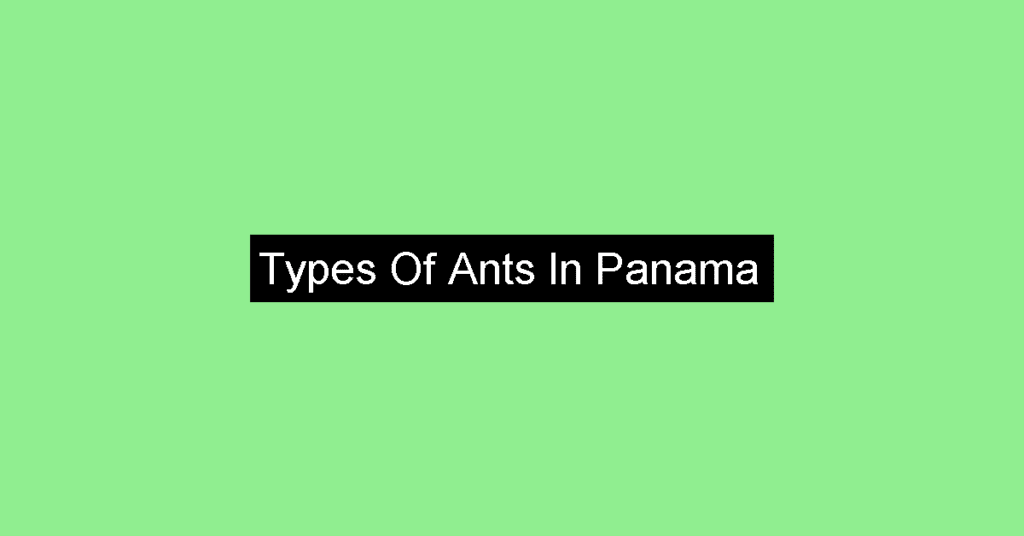Nestled between Costa Rica and Colombia, Panama is a country located in Central America. The region is known for its diverse and unique environment, which is home to a variety of flora and fauna.
The tropical climate of Panama is characterized by high humidity and frequent rainfall, making it an ideal habitat for a wide range of animals. From the lush rainforests to the crystal-clear waters of the Caribbean Sea and the Pacific Ocean, Panama’s natural beauty is truly breathtaking.
In this article, we will explore the fascinating environment of Panama, focusing on its weather patterns, diverse animal species, and stunning landscapes. .
Types Of Ants In Panama
The Types Of Ants In Panama are listed here: Acanthognathus, Acanthoponera, Acanthostichus, Leaf-Cutter Ants, Coccid-Tending Ants, Adelomyrmex, Allomerus, Amyrmex, Trap-Jaw Ants, Funnel Ants, Apterostigma, Asphinctanilloides, Leaf-Cutter Ants, Cercopia Ants, Bariamyrma, Basiceros, Belonopelta, Blepharidatta, Bothriomyrmex, Rover Ants, Carpenter And Sugar Ants, Sneaking Ants, Marauder Ants, Carebarella, Centromyrmex, Turtle Ants, Army Ants, Cheliomyrmex, Acrobat Ants, Cryptic Ants, Cylindromyrmex, Cyphomyrmex, Daceton, Discothyrea, Dolly Ants, Pyramid Ants, Army Ants, Ectatomma, Eurhopalothrix, Forelius, Gigantiops, Gnamptogenys, Heteroponera, Hylomyrma, Crypt Ants, Kalathomyrmex, Army Ants, Lachnomyrmex, Moisture Ants, Lenomyrmex, Leptanilloides, Razorjaw Ants, Linepithema, Velvety Tree Ants, Martialis, Mayaponera, Megalomyrmex, Trailing Pharaoh And Timid Ants, Mycetagroicus, Mycetarotes, Mycetophylax, Mycetosoritis, Mycocepurus, Mite-Eating Ants, Myrmelachista, Myrmicocrypta, Army Ants, Neoponera, Nesomyrmex, Army Ants, Crazy Ants, Ochetomyrmex, Octostruma, Trap-Jaw Ants, Oxyepoecus, Pachycondyla, Paraponera, Crazy Ants, Perissomyrmex, Big Headed Ants, Platythyrea, Typical American Harvester Ants, Winter Ants, Prionopelta, Probolomyrmex, Hairy Curltail Ants, Procryptocerus, Protalaridris, Twig Ants, Pseudoponera, Ponerine Ants, Rasopone, Rhopalothrix, Rogeria, Sericomyrmex, Simopelta, Fire Ants, Sphinctomyrmex, Stegomyrmex, Leaf-Litter Ants, Vampire Ants, Miniature Trap-Jaw Ants, Talaridris, Tapinoma, Tatuidris, Pale-Footed Ants, Slave-Making Ants, Pavement Ants, Thaumatomyrmex, Trachymyrmex, Tranopelta, Typhlomyrmex, Wasmannia, Xenomyrmex, Leaf-Cutter Ants, Rover Ants, Florida Carpenter Ants, Carpenter And Sugar Ants, Compact Carpenter Ants, Six-Spotted Carpenter Ants, Saint Valentine Ants, Acrobat Ants, Acrobat Ants, Fungus-Growing Ants, Gnamptogenys Hartmani, Gnamptogenys Triangularis, Crypt Ants, Army Ants, Flower Ants, Army Ants, Hairy Panther Ants, Crazy Ants, Trap-Jaw Ants, Trap-Jaw Ants, Trap-Jaw Ants, Rapacious Panther Ants, Longhorn Crazy Ants, Big Headed Ants, Big Headed Ants, Small Honey Ants, Dracula Ants, Twig Ants, Slender Twig Ants, Slender Twig Ants, Shining Orange Slender Twig Ants, Pan-Tropical Panther Ants, Rogeria Foreli, Fire Ants, Tropical Fire Ants, Vampire Ants, Miniature Trap-Jaw Ants, Miniature Trap-Jaw Ants, Miniature Trap-Jaw Ants, Miniature Trap-Jaw Ants, Miniature Trap-Jaw Ants, Rogers Dacetine Ants, Ghost Ants, Pavement Ants, Little Fire Ants.
If you’ve found some other ants in this region, contact us, and we will add them to the list!
1) Acanthognathus

Acanthognathus is a genus of ants belonging to the family Formicidae.
These ants are known for their unique mandibles that are elongated and curved, resembling the shape of a sickle.
The mandibles are used for capturing and subduing prey, as well as for defense against predators.
Acanthognathus ants are typically found in forested areas, where they nest in soil or leaf litter.
They are known to be aggressive towards other ant species and will defend their territory fiercely.
These ants are also known to engage in raiding behavior, where they will attack and steal resources from neighboring ant colonies.
The workers of Acanthognathus ants are polymorphic, meaning they come in different sizes and have different roles within the colony.
The larger workers are typically responsible for foraging and defense, while the smaller workers take care of the brood and tend to the queen.
The reproductive caste of Acanthognathus ants consists of winged males and females.
Mating occurs in the air, and the males die shortly after mating.
The females then establish new colonies and become the queen.
Overall, Acanthognathus ants are fascinating creatures with unique physical characteristics and complex social behaviors.
2) Acanthoponera

Acanthoponera be is a species of ant that belongs to the family Formicidae.
It is commonly known as the "spiny ant" due to the presence of spines on its body.
The workers of this species are relatively large, measuring up to 15mm in length.
They are black in color and have a shiny exoskeleton.
Acanthoponera be is known for its aggressive behavior and powerful sting.
The venom of this ant is highly toxic and can cause severe pain, swelling, and even death in some cases.
Due to its aggressive nature, this ant is often considered a pest by humans.
This species of ant is found in a variety of habitats, including forests, grasslands, and savannas.
They are known to build their nests in soil, leaf litter, and under rocks.
The colonies of Acanthoponera be are relatively small, with only a few hundred individuals.
The diet of this ant consists mainly of other insects, including termites, beetles, and caterpillars.
They are also known to scavenge on dead animals and feed on nectar from flowers.
Acanthoponera be is an important species in its ecosystem, as it helps to control the populations of other insects.
However, due to its aggressive behavior and powerful sting, it is important to exercise caution when encountering this ant in the wild.
3) Acanthostichus

Acanthostichus is a genus of ants that belongs to the subfamily Dorylinae.
The ants in this genus are known for their aggressive behavior and are commonly referred to as "trap-jaw ants." Acanthostichus ants are typically small in size, ranging from 2 to 5 millimeters in length, and are characterized by their elongated mandibles that can snap shut with incredible speed and force, allowing them to capture prey or defend themselves from predators.
Acanthostichus ants are primarily found in tropical and subtropical regions, where they inhabit a variety of habitats, including forests, grasslands, and deserts.
They are known to be highly social insects, living in large colonies that can contain thousands of individuals.
The colonies are typically headed by a single queen, who is responsible for laying eggs and maintaining the colony's social structure.
One of the most interesting aspects of Acanthostichus ants is their hunting behavior.
These ants are known to be ambush predators, waiting in hidden locations for prey to pass by before striking with their powerful mandibles.
They are also known to be scavengers, feeding on a variety of dead insects and other small animals.
Despite their aggressive behavior, Acanthostichus ants are not considered to be a significant threat to humans.
However, their powerful mandibles can cause painful bites, and they should be handled with caution.
Overall, Acanthostichus ants are fascinating insects that play an important role in their ecosystems and provide valuable insights into the behavior and evolution of social insects.
4) Leaf-Cutter Ants, Acromyrmex

Leaf-cutter ants are a fascinating species of ants that belong to the genus Atta and Acromyrmex.
These ants are known for their unique behavior of cutting and carrying pieces of leaves back to their nests.
They are found in various habitats, including rainforests, grasslands, and deserts.
Leaf-cutter ants are social insects that live in large colonies consisting of millions of individuals.
The colonies are divided into different castes, including the queen, workers, and soldiers.
The queen is responsible for laying eggs, while the workers and soldiers are responsible for foraging, nest maintenance, and defense.
The most distinctive feature of leaf-cutter ants is their ability to cut and carry pieces of leaves that are much larger than their body size.
They use their powerful mandibles to cut the leaves into small pieces, which they then carry back to their nests.
The leaves are not used as food but are instead used to cultivate a fungus that serves as the primary food source for the colony.
Leaf-cutter ants are also known for their impressive communication skills.
They use a complex system of chemical signals to communicate with each other and coordinate their activities.
They also use pheromones to mark trails and identify food sources.
Despite their impressive abilities, leaf-cutter ants face many threats in their natural habitats.
Habitat destruction, climate change, and pesticide use are just a few of the challenges that these ants face.
Conservation efforts are underway to protect these fascinating insects and their important role in the ecosystem.
5) Coccid-Tending Ants, Acropyga
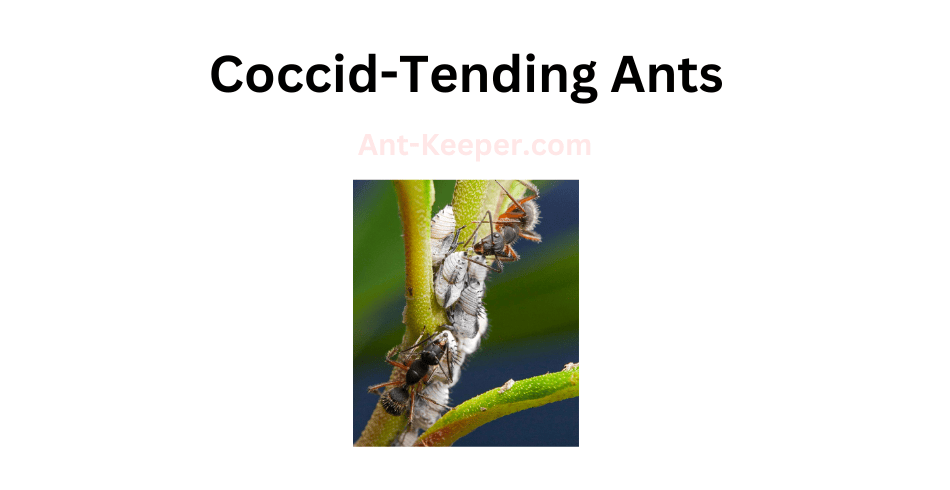
Coccid-tending ants are a group of ants that have a mutualistic relationship with coccids, also known as scale insects.
These ants protect and care for the coccids, which in turn provide the ants with a sugary substance called honeydew.
Coccid-tending ants are typically small in size, ranging from 2 to 5 millimeters in length.
They have a reddish-brown coloration and a slender body shape.
These ants are commonly found in forests and grasslands, where they build nests in soil or under rocks.
The relationship between coccid-tending ants and coccids is a classic example of mutualism.
The ants protect the coccids from predators and parasites, and also move them to new feeding sites when necessary.
In return, the coccids secrete honeydew, which the ants consume as a source of energy.
Coccid-tending ants have been observed to actively farm and cultivate coccids, moving them to new locations and even pruning the plants on which they feed to encourage the growth of new coccids.
This behavior has been shown to increase the overall productivity of the ant-coccid mutualism.
Overall, coccid-tending ants are an important component of many ecosystems, playing a key role in the maintenance of plant and insect populations.
Their mutualistic relationship with coccids highlights the complex and interconnected nature of ecological systems.
6) Adelomyrmex

Adelomyrmex is a genus of ants that belongs to the subfamily Myrmicinae.
These ants are known for their unique morphology and behavior.
Adelomyrmex ants are small in size, measuring between 2 to 4 millimeters in length.
They have a distinctive appearance, with a slender body and long legs.
The head of Adelomyrmex ants is elongated and narrow, with large compound eyes and long antennae.
Adelomyrmex ants are social insects that live in colonies.
The colonies are usually small, consisting of a few hundred individuals.
The colonies are typically found in the soil, under rocks, or in dead wood.
Adelomyrmex ants are known for their aggressive behavior towards other ant species.
They will attack and kill other ants that invade their territory.
Adelomyrmex ants are omnivorous, feeding on a variety of food sources.
They will consume insects, nectar, and honeydew produced by aphids.
Adelomyrmex ants are also known to tend to mealybugs, protecting them from predators in exchange for their sweet secretions.
The reproductive system of Adelomyrmex ants is unique.
The colonies are headed by a single queen, who is responsible for laying eggs.
However, the queen does not mate with males.
Instead, she reproduces asexually, producing genetically identical offspring.
In conclusion, Adelomyrmex ants are fascinating insects with unique morphology and behavior.
They are aggressive towards other ant species and have a unique reproductive system.
These ants play an important role in their ecosystem, consuming insects and tending to mealybugs.
7) Allomerus
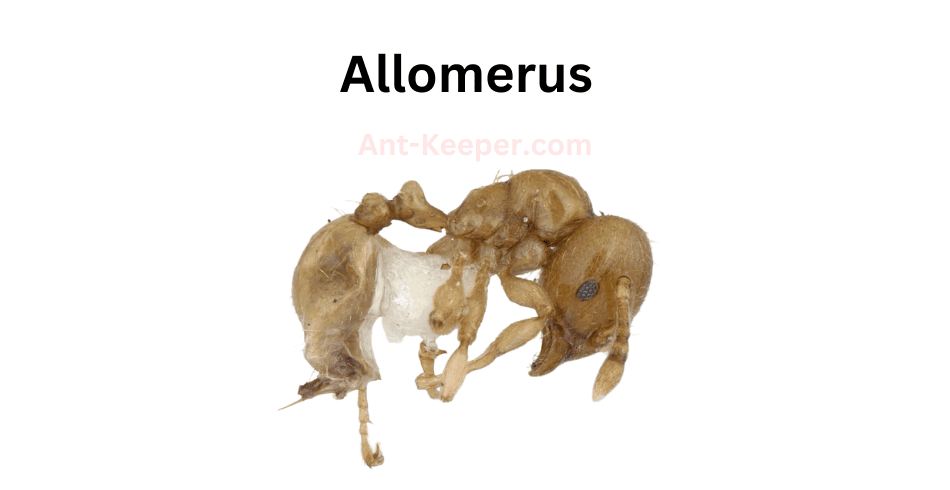
Allomerus is a genus of ants that belongs to the subfamily Myrmicinae.
These ants are known for their unique behavior of building traps to capture prey.
The species in this genus are arboreal, meaning they live in trees and other vegetation.
Allomerus ants build traps by manipulating the surrounding vegetation to create a structure that funnels prey towards a central chamber.
The ants then wait in the chamber for prey to fall in, at which point they swarm and subdue it.
This behavior is known as "agro-predation," as the ants use the plants around them to aid in their hunting.
Allomerus ants are also known for their symbiotic relationship with a species of plant called Hirtella physophora.
The ants live inside the hollow stems of these plants and protect them from herbivores.
In return, the plant provides the ants with nectar and a safe place to live.
There are several species of Allomerus ants, each with their own unique trap-building techniques.
Some species build traps on the undersides of leaves, while others build them on the stems of plants.
Despite their small size, Allomerus ants play an important role in their ecosystem as both predators and protectors of their host plants.
8) Amyrmex
Amyrmexbe is a species of ant that belongs to the subfamily Dolichoderinae.
These ants are known for their unique physical characteristics, including their elongated mandibles and slender bodies.
They are typically found in tropical and subtropical regions, where they inhabit a variety of habitats, including forests, grasslands, and deserts.
Amyrmexbe ants are highly social insects that live in large colonies.
These colonies are typically composed of a queen, workers, and soldiers.
The queen is responsible for laying eggs, while the workers and soldiers are responsible for maintaining the colony and protecting it from predators.
One of the most interesting aspects of Amyrmexbe ants is their feeding habits.
These ants are omnivorous, meaning that they eat both plant and animal matter.
They are known to feed on a variety of foods, including insects, fruits, and nectar.
Despite their small size, Amyrmexbe ants play an important role in their ecosystem.
They help to control insect populations, pollinate plants, and aerate soil.
They are also an important food source for many other animals, including birds and reptiles.
Overall, Amyrmexbe ants are fascinating creatures that are well-adapted to their environment.
Their unique physical characteristics and social behavior make them a fascinating subject for study and observation.
9) Trap-Jaw Ants, Anochetus

Trap-jaw ants are a species of ants that belong to the genus Odontomachus.
These ants are known for their unique and powerful mandibles, which they use to capture prey and defend their colonies.
The mandibles of trap-jaw ants are capable of closing at incredible speeds, reaching up to 140 miles per hour.
This allows them to snap their jaws shut with incredible force, which can stun or kill their prey.
Trap-jaw ants are found in a variety of habitats, including forests, grasslands, and deserts.
They are typically active during the day and are known to be highly territorial.
These ants are also known for their ability to jump, which they use to escape danger or to capture prey.
Trap-jaw ants are omnivorous, meaning that they eat both plant and animal matter.
They are known to feed on a variety of insects, including other ants, as well as nectar and other sweet substances.
These ants are also known to be scavengers, feeding on dead insects and other organic matter.
The colonies of trap-jaw ants are typically small, with only a few hundred individuals.
However, they are highly organized and have a strict social hierarchy.
The queen is the largest member of the colony and is responsible for laying eggs.
The workers, which are all female, are responsible for foraging, caring for the young, and defending the colony.
Overall, trap-jaw ants are fascinating creatures that have evolved unique adaptations to help them survive in their environments.
Their powerful mandibles and jumping abilities make them formidable predators, while their social organization allows them to work together to protect their colonies and ensure their survival.
10) Funnel Ants, Aphaenogaster

The Funnel Ants, also known as Aphaenogaster ants, are a species of ants that are commonly found in various habitats around the world.
These ants are known for their unique nesting behavior, where they construct funnel-shaped nests that are typically located in soil or leaf litter.
The Funnel Ants are relatively small in size, with workers measuring between 3-5mm in length.
They are typically reddish-brown in color and have a slender body shape.
These ants are known for their strong mandibles, which they use to collect and transport food back to their nests.
One of the most interesting aspects of the Funnel Ants is their nesting behavior.
These ants construct funnel-shaped nests that are typically located in soil or leaf litter.
The entrance to the nest is narrow and funnel-shaped, which helps to protect the colony from predators and other threats.
Inside the nest, the ants create a series of chambers and tunnels that are used for different purposes, such as storing food, caring for the brood, and housing the queen.
The Funnel Ants are omnivorous, meaning that they feed on both plant and animal matter.
They are known to collect a wide variety of food items, including seeds, insects, and other small invertebrates.
These ants are also known to tend to aphids, which they use for their honeydew secretion.
Overall, the Funnel Ants are a fascinating species of ants that are known for their unique nesting behavior and omnivorous diet.
They play an important role in their ecosystems, helping to control populations of other insects and contributing to nutrient cycling in the soil.
11) Apterostigma

Apterostigma is a genus of ants that belongs to the tribe Attini.
These ants are known for their unique physical characteristics, including their lack of wings and the presence of a stinger.
The name Apterostigma is derived from the Greek words "apteron" meaning wingless and "stigma" meaning mark or spot.
Apterostigma ants are typically found in tropical and subtropical regions, where they live in colonies that can range in size from a few hundred to several thousand individuals.
These ants are known for their complex social structure, which includes a queen, workers, and soldiers.
One of the most interesting aspects of Apterostigma ants is their relationship with fungus.
These ants cultivate a specific type of fungus that they use as a food source.
The ants feed the fungus with bits of leaves and other organic matter, and in return, the fungus provides the ants with a nutritious food source.
Apterostigma ants are also known for their aggressive behavior towards other ant species.
They will often attack and kill ants from other colonies, and will even invade and take over the nests of other ant species.
Despite their aggressive behavior, Apterostigma ants play an important role in their ecosystem.
They help to control the population of other insects and contribute to the decomposition of organic matter.
Overall, Apterostigma ants are fascinating creatures that have adapted to their environment in unique ways.
Their relationship with fungus and their aggressive behavior towards other ants make them a fascinating subject for study.
12) Asphinctanilloides
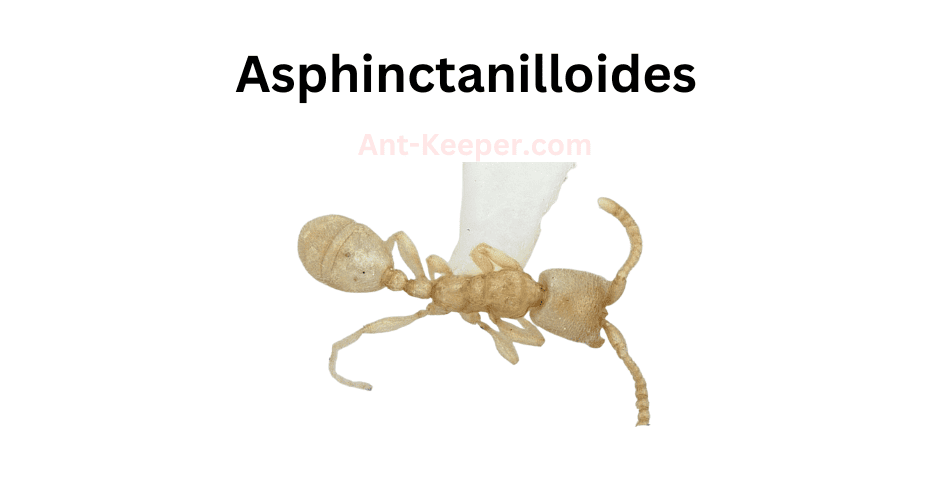
Asphinctanilloides is a genus of ants that belongs to the family Formicidae.
The ants in this genus are known for their small size and unique morphology.
Asphinctanilloides ants have a distinct waist that is constricted, giving them a segmented appearance.
They are also known for their elongated mandibles, which are used for capturing prey and defending their colony.
Asphinctanilloides ants are typically found in forested areas, where they live in small colonies.
They are known to be aggressive towards other ant species and will defend their territory fiercely.
Asphinctanilloides ants are omnivorous, feeding on a variety of insects, fruits, and seeds.
One species of Asphinctanilloides, Asphinctanilloides be, is particularly interesting due to its unique behavior.
This species is known to be a specialist predator of springtails, a type of small arthropod that is found in soil and leaf litter.
Asphinctanilloides be will actively hunt for springtails, using its elongated mandibles to capture and subdue its prey.
Asphinctanilloides be is also known for its ability to camouflage itself.
The ants will cover themselves in soil and debris, making them difficult to spot by predators and prey alike.
This behavior is thought to be an adaptation to their forested habitat, where they need to blend in with their surroundings to avoid detection.
Overall, Asphinctanilloides ants are a fascinating group of insects that exhibit unique behaviors and adaptations.
Asphinctanilloides be, in particular, is an interesting species due to its specialized predatory behavior and camouflage abilities.
13) Leaf-Cutter Ants, Atta

Leaf-cutter ants are a fascinating species of ants that belong to the genus Atta and Acromyrmex.
These ants are known for their unique behavior of cutting and carrying pieces of leaves back to their nests.
They are found in various habitats, including rainforests, grasslands, and deserts.
Leaf-cutter ants are social insects that live in large colonies consisting of millions of individuals.
The colonies are divided into different castes, including the queen, workers, and soldiers.
The queen is responsible for laying eggs, while the workers and soldiers are responsible for foraging, nest maintenance, and defense.
The most distinctive feature of leaf-cutter ants is their ability to cut and carry pieces of leaves that are much larger than their body size.
They use their powerful mandibles to cut the leaves into small pieces, which they then carry back to their nests.
The leaves are not used as food but are instead used to cultivate a fungus that serves as the primary food source for the colony.
Leaf-cutter ants are also known for their impressive communication skills.
They use a complex system of chemical signals to communicate with each other and coordinate their activities.
They also use pheromones to mark trails and identify food sources.
Despite their impressive abilities, leaf-cutter ants face many threats in their natural habitats.
Habitat destruction, climate change, and pesticide use are just a few of the challenges that these ants face.
Conservation efforts are underway to protect these fascinating insects and their important role in the ecosystem.
14) Cercopia Ants, Azteca
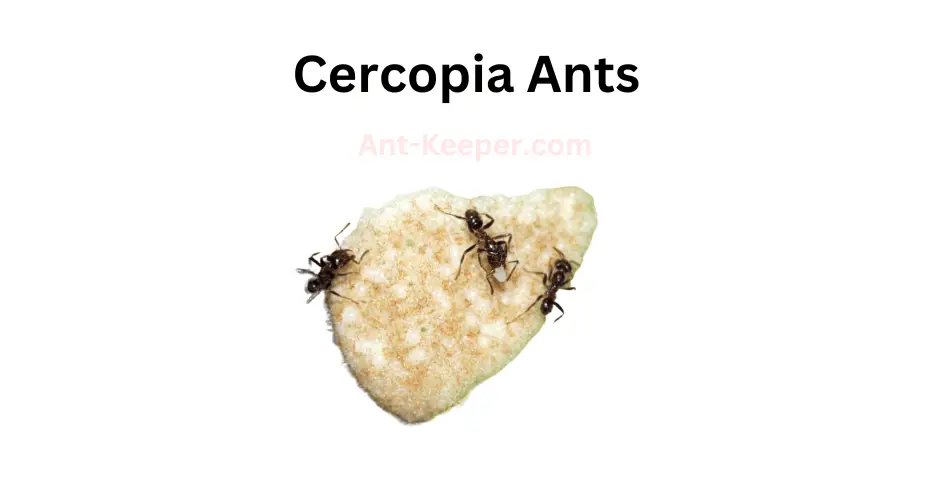
Cercopia ants are a species of ants that belong to the Formicidae family.
They are known for their large size, with workers measuring up to 1.5 centimeters in length.
These ants are typically reddish-brown in color and have a distinctive, elongated head.
Cercopia ants are primarily found in forested areas and are known to build their nests in soil or under rocks.
They are omnivorous and feed on a variety of food sources, including insects, fruits, and nectar.
One unique characteristic of Cercopia ants is their ability to produce formic acid, which they use as a defense mechanism against predators.
When threatened, these ants will release formic acid from their bodies, which can cause irritation and pain to potential attackers.
Cercopia ants are also known for their complex social structure, with colonies consisting of multiple queens and thousands of workers.
These ants communicate with each other through a variety of chemical signals, including pheromones.
Overall, Cercopia ants are a fascinating species of ants that play an important role in their ecosystem.
Their large size, unique defense mechanisms, and complex social structure make them a subject of interest for scientists and nature enthusiasts alike.
15) Bariamyrma

Bariamyrmabe is a species of ant that belongs to the family Formicidae.
These ants are known for their unique physical characteristics and behavior.
Bariamyrmabe ants are small in size, measuring only a few millimeters in length.
They have a dark brown or black coloration and a shiny exoskeleton.
One of the most distinctive features of Bariamyrmabe ants is their mandibles.
These ants have large, powerful mandibles that they use to capture prey and defend their colony.
Bariamyrmabe ants are also known for their aggressive behavior.
They will attack other ants and insects that come too close to their colony.
Bariamyrmabe ants are social insects that live in colonies.
These colonies can range in size from a few dozen to several thousand individuals.
The colony is led by a queen ant, who is responsible for laying eggs and producing new members of the colony.
Bariamyrmabe ants are omnivores, meaning they eat both plants and animals.
They primarily feed on small insects, but they will also consume nectar and other plant materials.
These ants are important members of their ecosystem, as they help to control the populations of other insects and contribute to the pollination of plants.
Overall, Bariamyrmabe ants are fascinating creatures that play an important role in their environment.
Their unique physical characteristics and behavior make them a fascinating subject for study and observation.
16) Basiceros

Basicerosbe is a species of ant that belongs to the family Formicidae.
These ants are known for their small size, typically measuring between 2-3 millimeters in length.
They have a dark brown or black coloration and a slender body shape.
Basicerosbe ants are typically found in forested areas, where they build their nests in soil or leaf litter.
They are known to be highly social insects, living in colonies that can number in the thousands.
Within these colonies, there is a clear division of labor, with different ants taking on specific roles such as foraging, caring for the young, and defending the colony.
One interesting aspect of Basicerosbe ants is their ability to communicate with one another through the use of chemical signals.
They release pheromones that can signal to other ants the location of food sources or potential threats to the colony.
Basicerosbe ants are also known for their predatory behavior, feeding on a variety of small insects and other arthropods.
They have been observed using their strong mandibles to capture prey and carry it back to the colony.
Overall, Basicerosbe ants are fascinating creatures that play an important role in their ecosystem.
Their social behavior and predatory habits make them a valuable subject of study for scientists and researchers.
17) Belonopelta
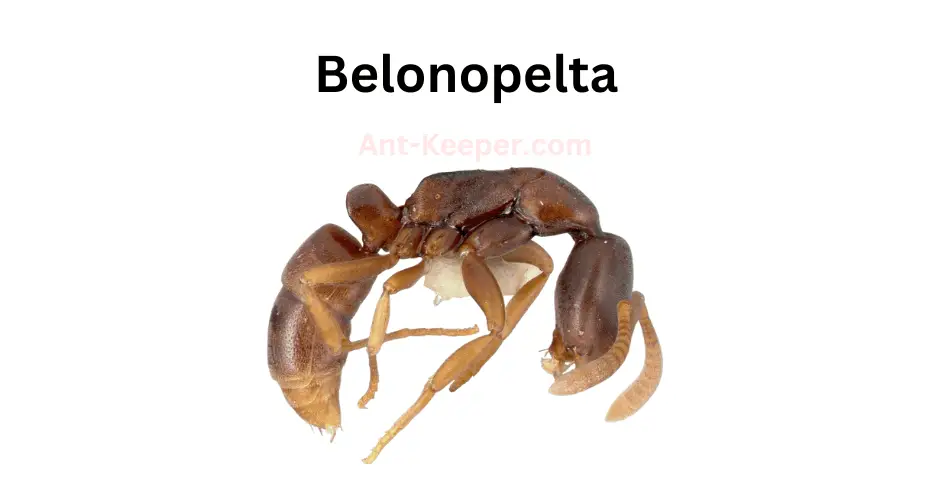
Belonopeltabe is a species of ant that belongs to the Formicidae family.
These ants are known for their unique physical characteristics, including their elongated mandibles and slender bodies.
Belonopeltabe ants are typically found in forested areas and are known to be active during the day.
One of the most interesting aspects of Belonopeltabe ants is their social behavior.
These ants live in colonies that can range in size from a few dozen to several thousand individuals.
Within these colonies, there is a strict hierarchy, with a queen ant at the top and various worker ants performing different tasks.
Belonopeltabe ants are omnivorous, meaning they eat both plant and animal matter.
They are known to feed on insects, fruits, and nectar.
These ants are also important in the ecosystem as they help to disperse seeds and control insect populations.
Despite their small size, Belonopeltabe ants are known for their aggressive behavior.
They will defend their colonies fiercely, using their mandibles to bite and their stingers to inject venom.
However, they are not considered a significant threat to humans.
Overall, Belonopeltabe ants are a fascinating species that play an important role in the ecosystem.
Their unique physical characteristics and social behavior make them a subject of interest for scientists and nature enthusiasts alike.
18) Blepharidatta

Blepharidatta is a species of ant belonging to the family Formicidae.
These ants are known for their unique physical characteristics, including their large eyes and elongated mandibles.
The name "Blepharidatta" is derived from the Greek words "blepharon" meaning eyelid and "datta" meaning giver, referring to the ant's large eyes.
Blepharidatta ants are typically found in forested areas and are known to be arboreal, meaning they live in trees.
They are also known to be aggressive and territorial, often engaging in battles with other ant species for resources and territory.
The diet of Blepharidatta ants consists mainly of insects and other small invertebrates.
They are also known to feed on nectar and honeydew produced by aphids and other plant-sucking insects.
Blepharidatta ants are social insects, living in colonies that can range in size from a few dozen to several thousand individuals.
The colony is typically led by a queen ant, who is responsible for laying eggs and maintaining the colony's population.
Overall, Blepharidatta ants are fascinating creatures with unique physical and behavioral characteristics that make them an important part of their ecosystem.
19) Bothriomyrmex
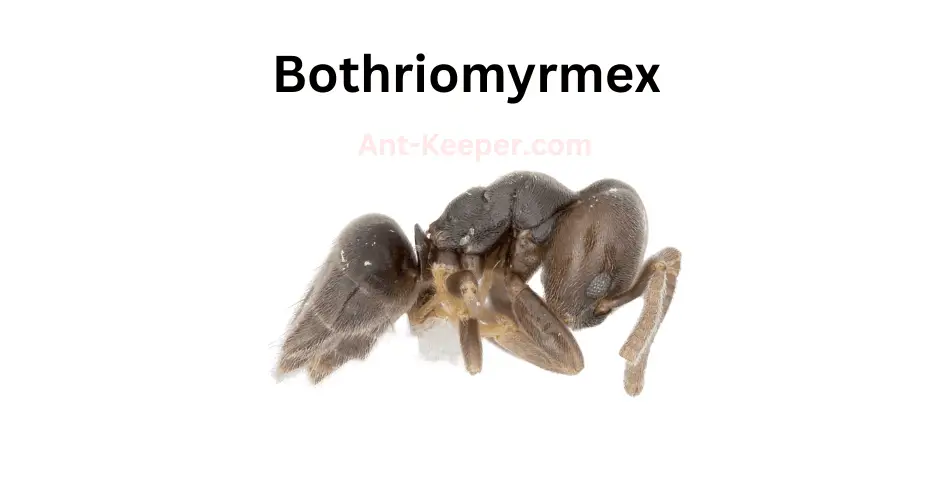
Bothriomyrmex is a genus of ants that belongs to the family Formicidae.
The ants in this genus are small in size, measuring between 2-4 mm in length.
They are known for their distinctive appearance, with a narrow waist and a long, curved spine on their thorax.
Bothriomyrmex ants are typically found in tropical and subtropical regions, where they live in colonies that can range in size from a few dozen to several hundred individuals.
They are known for their aggressive behavior and will defend their nests fiercely against intruders.
These ants are omnivorous, feeding on a variety of foods including insects, nectar, and plant sap.
They are also known to tend to aphids and other insects that produce honeydew, which they collect and consume.
Bothriomyrmex ants are important members of their ecosystems, playing a role in seed dispersal and soil aeration.
They are also preyed upon by a variety of predators, including birds, reptiles, and other insects.
Overall, Bothriomyrmex ants are fascinating creatures that play an important role in the ecosystems where they live.
Their unique appearance and behavior make them a subject of interest for scientists and nature enthusiasts alike.
20) Rover Ants, Brachymyrmex
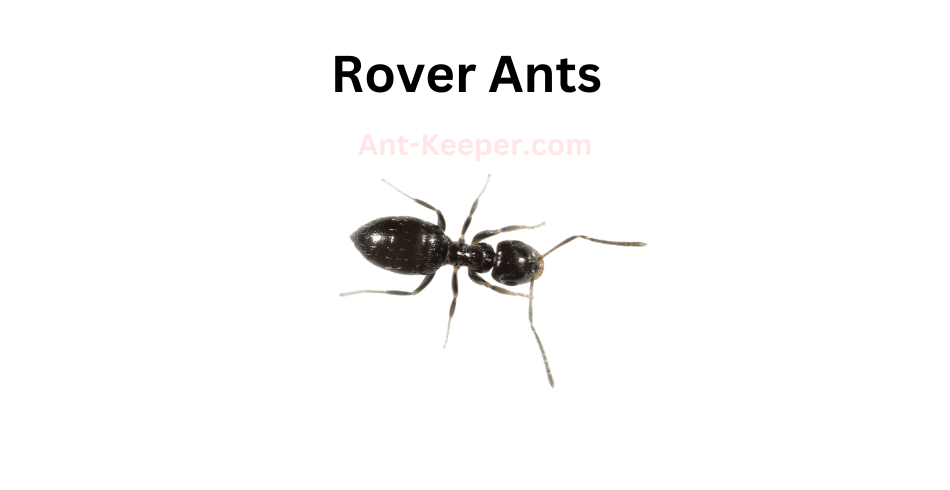
Rover ants, also known as Brachymyrmex spp., are a species of small, dark-colored ants that are commonly found in urban and suburban areas.
These ants are known for their ability to quickly move their nests from one location to another, hence their name "rover ants."
Rover ants are typically between 1.5 and 2.5 millimeters in length and have a dark brown or black coloration.
They have a slender body with a distinct waist and long, thin legs.
These ants are known for their aggressive behavior towards other ant species and will often invade and take over their nests.
Rover ants are omnivorous and will feed on a variety of food sources, including insects, sweets, and plant material.
They are also known to be attracted to human food and can become a nuisance in homes and other buildings.
One unique characteristic of rover ants is their ability to form "supercolonies." These supercolonies can consist of multiple nests and can span large areas.
This behavior allows rover ants to quickly adapt to changing environments and find new food sources.
Overall, rover ants are a common and adaptable species that can be found in many different environments.
While they can be a nuisance in homes and other buildings, they play an important role in the ecosystem as scavengers and predators of other insects.
21) Carpenter And Sugar Ants, Camponotus

Carpenter ants and sugar ants are two common species of ants found in many regions of the world.
Carpenter ants are known for their ability to excavate wood and create nests within it.
They are typically larger in size than sugar ants and have a black or dark brown coloration.
Carpenter ants are also known for their strong mandibles, which they use to chew through wood and other materials.
Sugar ants, on the other hand, are smaller in size and have a yellow or brown coloration.
They are named for their preference for sugary foods and are often found in kitchens and other areas where food is stored.
Sugar ants are also known for their ability to form large colonies, with thousands of individual ants working together to gather food and care for their young.
Both carpenter ants and sugar ants play important roles in their ecosystems.
Carpenter ants help to break down dead wood and other plant material, which helps to recycle nutrients back into the soil.
Sugar ants help to disperse seeds and pollinate plants, which helps to maintain healthy ecosystems.
However, both species can also be pests when they invade human homes and buildings.
Carpenter ants can cause damage to wooden structures, while sugar ants can contaminate food and be a nuisance to homeowners.
It is important to take steps to prevent ant infestations and to control them if they do occur, in order to protect both human health and the health of the environment.
22) Sneaking Ants, Cardiocondyla

Sneaking Ants, also known as Camponotus obscuripes, are a species of ant that are commonly found in forested areas.
These ants are known for their ability to move quietly and quickly, making them difficult to detect.
Sneaking Ants are typically black or dark brown in color and range in size from 5 to 12 millimeters in length.
They have a distinctive, flattened head and a narrow waist, which helps them to navigate through tight spaces.
One of the most interesting aspects of Sneaking Ants is their behavior.
These ants are known for their ability to sneak up on other insects and steal their food.
They are also known to raid the nests of other ant species, taking their eggs and larvae back to their own colony to raise as their own.
Sneaking Ants are omnivorous, meaning they eat both plant and animal matter.
They have been observed feeding on nectar, honeydew, and small insects.
They are also known to scavenge for food, often taking advantage of the leftovers from other insects.
In terms of reproduction, Sneaking Ants have a unique system.
The colony is typically led by a single queen, who is responsible for laying eggs.
However, there are also a number of worker ants who are capable of laying eggs as well.
These eggs are typically unfertilized and produce male ants, which are used for mating purposes.
Overall, Sneaking Ants are a fascinating species with unique behaviors and adaptations.
Their ability to move quietly and quickly makes them a formidable predator, and their omnivorous diet allows them to thrive in a variety of environments.
23) Marauder Ants, Carebara

Marauder ants are a species of ants known for their aggressive behavior and large colony sizes.
They are typically found in tropical and subtropical regions, where they inhabit a variety of habitats including forests, grasslands, and urban areas.
These ants are known for their ability to raid other ant colonies and steal their resources, including food and brood.
They have powerful mandibles that allow them to overpower other ants and carry their prey back to their own colony.
Marauder ants are also known for their ability to adapt to changing environments.
They can quickly adjust their foraging patterns and nesting sites in response to changes in their surroundings, allowing them to thrive in a variety of habitats.
Despite their aggressive behavior, marauder ants play an important role in their ecosystems.
They help to control populations of other insects and contribute to nutrient cycling in the soil.
Overall, marauder ants are a fascinating species of ants that have adapted to thrive in a variety of environments.
Their aggressive behavior and large colony sizes make them a formidable force in the ant world.
24) Carebarella

The Carebarellabe ant is a fascinating species known for its unique physical characteristics and social behavior.
These ants are relatively small in size, measuring only a few millimeters in length, and are typically reddish-brown in color.
One of the most distinctive features of the Carebarellabe ant is its mandibles, which are elongated and curved, resembling the shape of a sickle.
These mandibles are used for a variety of tasks, including cutting and carrying food, defending the colony, and even grooming other ants.
Carebarellabe ants are highly social insects, living in large colonies that can contain thousands of individuals.
Within the colony, there is a strict hierarchy, with a queen ant at the top and various worker ants performing different tasks such as foraging for food, caring for the young, and defending the colony.
Interestingly, Carebarellabe ants have also been observed engaging in a behavior known as "tandem running." This involves two ants running together, with the leading ant guiding the other to a food source or new nest location.
This behavior is thought to be a form of communication and cooperation within the colony.
Overall, the Carebarellabe ant is a fascinating species that continues to intrigue scientists and nature enthusiasts alike.
Its unique physical characteristics and social behavior make it a valuable subject of study for those interested in the natural world.
25) Centromyrmex
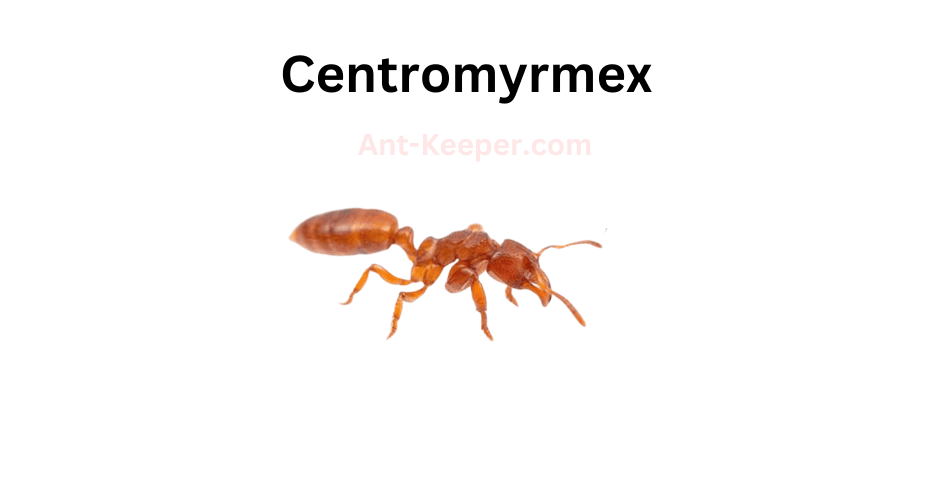
Centromyrmex is a genus of ants that belongs to the family Formicidae.
These ants are known for their unique morphology and behavior.
They are typically found in tropical regions and are known to inhabit forested areas.
Centromyrmex ants are characterized by their large size and elongated mandibles.
They are also known for their aggressive behavior and are often seen engaging in territorial disputes with other ant species.
These ants are primarily carnivorous and feed on other insects and small invertebrates.
One of the most interesting aspects of Centromyrmex ants is their reproductive behavior.
These ants are known to engage in a behavior called "pleometrosis," which involves multiple queens coexisting within a single colony.
This behavior is rare among ants and is thought to be an adaptation to the harsh conditions of their environment.
Overall, Centromyrmex ants are a fascinating and unique species that continue to intrigue scientists and researchers around the world.
Their behavior and morphology provide valuable insights into the evolution and adaptation of ants in tropical ecosystems.
26) Turtle Ants, Cephalotes
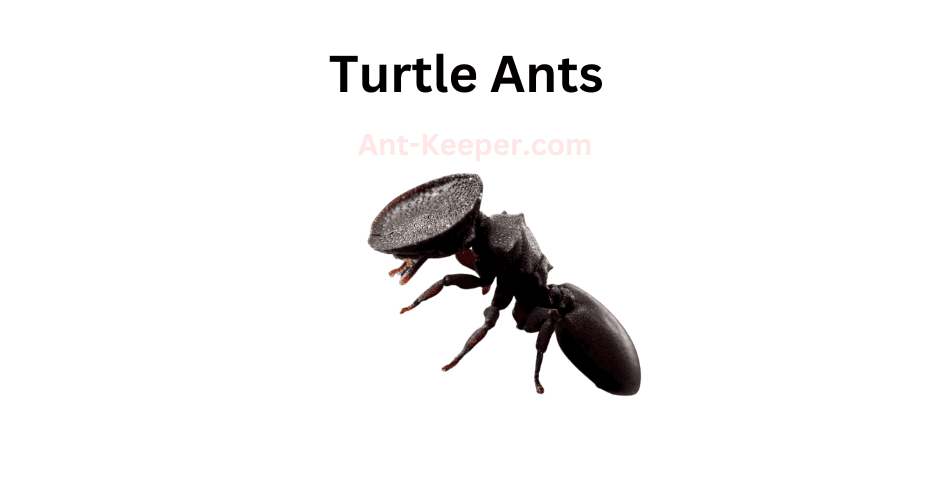
Turtle ants, also known as Cephalotes spp., are a genus of arboreal ants found in tropical regions around the world.
These ants are named for their unique ability to tuck their legs and antennae under their bodies, resembling a turtle when threatened.
Turtle ants are known for their specialized morphology, including a flattened head and elongated, spiny legs that allow them to navigate through the dense vegetation of their forest habitats.
They also possess a unique, disc-shaped structure on their thorax that allows them to block the entrance to their nests, protecting them from predators.
These ants are primarily herbivorous, feeding on the sugary exudates produced by plants and occasionally preying on small insects.
They are also known for their symbiotic relationship with a species of bacteria that lives in specialized structures on their bodies, providing them with essential nutrients.
Turtle ants are social insects, living in large colonies that can contain thousands of individuals.
They have a complex social hierarchy, with specialized castes of workers, soldiers, and reproductive individuals.
The queen ant is responsible for laying eggs, which hatch into larvae that are cared for by the workers.
Overall, turtle ants are fascinating creatures with unique adaptations that allow them to thrive in their forest habitats.
Their specialized morphology, diet, and social behavior make them an important part of the ecosystem and a subject of interest for researchers studying ant biology.
27) Army Ants, Cerapachys
Army ants are a type of ant that belong to the subfamily Dorylinae.
They are known for their aggressive behavior and their ability to form large colonies that can contain up to several million individuals.
Army ants are found in tropical and subtropical regions around the world, and they play an important role in the ecosystems where they live.
One of the most distinctive features of army ants is their nomadic lifestyle.
Unlike other ants that build permanent nests, army ants are constantly on the move, searching for food and new nesting sites.
They are also known for their impressive hunting skills.
When they come across prey, they swarm over it in large numbers, overwhelming it with their sheer numbers and powerful jaws.
Army ants are also social insects, with a complex hierarchy that determines the roles of each individual in the colony.
The queen is the largest ant in the colony and is responsible for laying eggs.
The workers are responsible for foraging, caring for the young, and defending the colony.
The soldiers are larger and have stronger jaws, which they use to protect the colony from predators.
Despite their aggressive behavior, army ants are an important part of many ecosystems.
They help to control the populations of other insects and small animals, and they provide food for larger predators such as birds and mammals.
In some cultures, army ants are even used as a source of food for humans.
Overall, army ants are fascinating creatures that have adapted to life in some of the most challenging environments on Earth.
Their nomadic lifestyle, impressive hunting skills, and complex social structure make them one of the most interesting species of ants in the world.
28) Cheliomyrmex
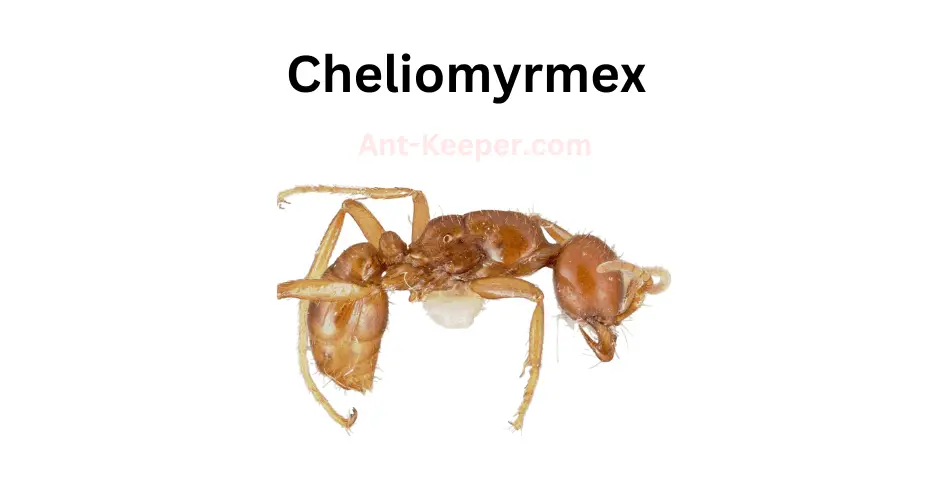
Cheliomyrmex is a genus of ants that belongs to the subfamily Dolichoderinae.
These ants are known for their unique physical characteristics, including a long and slender body, elongated mandibles, and a distinctively shaped head.
The genus is relatively small, with only a few known species.
Cheliomyrmex ants are typically found in tropical and subtropical regions, where they inhabit forested areas and feed on a variety of food sources, including insects, nectar, and plant sap.
They are known for their aggressive behavior and will defend their nests fiercely against intruders.
One of the most interesting aspects of Cheliomyrmex ants is their reproductive strategy.
Unlike many other ant species, Cheliomyrmex queens do not mate with multiple males.
Instead, they mate with a single male and store his sperm in a specialized organ called the spermatheca.
This allows the queen to fertilize her eggs over a long period of time, without the need for repeated mating.
Overall, Cheliomyrmex ants are fascinating creatures that offer a unique glimpse into the diversity of life on our planet.
Their distinctive physical features, aggressive behavior, and unusual reproductive strategy make them a fascinating subject for scientific study.
29) Acrobat Ants, Crematogaster

Acrobat ants, also known as Crematogaster spp., are a genus of ants that are found in various parts of the world.
These ants are known for their unique ability to contort their bodies and move in acrobatic ways, hence their name.
Acrobat ants are relatively small, with workers measuring between 2-5mm in length.
They are typically brown or black in color, with a slender body and long legs.
These ants are known for their aggressive behavior and will readily defend their nests against intruders.
One of the most interesting features of acrobat ants is their ability to use their mandibles to grip onto surfaces and contort their bodies in unusual ways.
This allows them to move along narrow branches, twigs, and other surfaces that would be difficult for other ants to navigate.
They are also able to use this ability to escape from predators, such as birds and other insects.
Acrobat ants are omnivorous, meaning that they will eat both plant and animal matter.
They are known to feed on insects, nectar, and honeydew, as well as fruits and seeds.
These ants are also known to tend to aphids, protecting them from predators in exchange for the sweet honeydew that the aphids produce.
In terms of their social structure, acrobat ants are typically organized into colonies that are led by a queen.
The queen is responsible for laying eggs, while the workers are responsible for foraging, caring for the young, and defending the nest.
Overall, acrobat ants are fascinating creatures that have adapted unique abilities to survive in their environments.
Their acrobatic abilities and aggressive behavior make them a formidable force in the insect world.
30) Cryptic Ants, Cryptopone
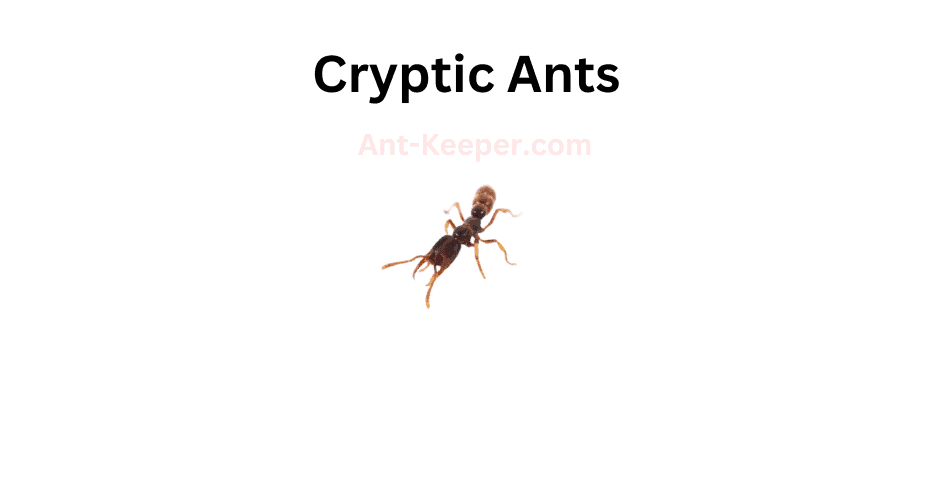
Cryptic ants are a species of ants that are known for their ability to blend in with their surroundings.
They are typically small in size, measuring only a few millimeters in length, and have a dark brown or black coloration that helps them to remain inconspicuous.
One of the most interesting features of cryptic ants is their ability to mimic the appearance of other insects.
For example, some species of cryptic ants have been observed mimicking the appearance of spiders, which helps them to avoid detection by predators that might otherwise prey on them.
Cryptic ants are also known for their highly social behavior.
They live in large colonies that can contain thousands of individuals, and they work together to gather food, care for their young, and defend their territory from other ants and predators.
Despite their small size, cryptic ants play an important role in their ecosystem.
They help to aerate the soil, control pest populations, and provide food for other animals.
In addition, they are an important food source for many birds and other predators.
Overall, cryptic ants are a fascinating species of ants that have evolved a number of unique adaptations to help them survive in their environment.
Their ability to blend in with their surroundings and mimic other insects is just one example of the many ways in which they have adapted to their surroundings over time.
31) Cylindromyrmex

Cylindromyrmex is a genus of ants that belongs to the subfamily of Myrmicinae.
These ants are known for their cylindrical body shape and elongated mandibles.
The workers of Cylindromyrmex are typically small in size, measuring around 2-3 mm in length.
They have a dark brown or black coloration and a shiny exoskeleton.
Cylindromyrmex ants are found in a variety of habitats, including forests, grasslands, and deserts.
They are known to be aggressive predators, feeding on other insects and small arthropods.
These ants are also known to have a unique hunting behavior, where they actively search for prey rather than waiting for it to come to them.
The reproductive caste of Cylindromyrmex ants consists of winged males and females.
The males are typically smaller than the females and have longer antennae.
The females have a larger body size and are responsible for laying eggs and starting new colonies.
Cylindromyrmex ants are known for their ability to adapt to different environments.
They have been observed living in both arboreal and ground-dwelling habitats.
These ants are also known to have a symbiotic relationship with certain plant species, where they protect the plants from herbivores in exchange for food and shelter.
Overall, Cylindromyrmex ants are fascinating creatures that have adapted to a wide range of environments.
Their unique hunting behavior and symbiotic relationships make them an important part of many ecosystems.
32) Cyphomyrmex

Cyphomyrmex is a genus of ants that belongs to the subfamily Myrmicinae.
These ants are known for their unique nesting habits, as they construct their nests in soil or leaf litter and feed on fungus that grows within the nest.
The workers of Cyphomyrmex are small in size, measuring between 2-4 mm in length, and are typically reddish-brown in color.
One of the distinguishing features of Cyphomyrmex ants is their mandibles, which are elongated and curved, allowing them to easily manipulate and transport small pieces of fungus.
These ants are also known for their ability to produce a variety of chemicals, including formic acid, which they use for defense against predators.
Cyphomyrmex ants are found in a variety of habitats, including forests, grasslands, and deserts.
They are typically found in areas with high humidity and moderate temperatures, as these conditions are ideal for the growth of the fungus that they feed on.
Overall, Cyphomyrmex ants are fascinating creatures that have adapted to a unique way of life.
Their ability to cultivate and feed on fungus within their nests is a testament to their ingenuity and resourcefulness, and their small size and chemical defenses make them a formidable force in the world of ants.
33) Daceton
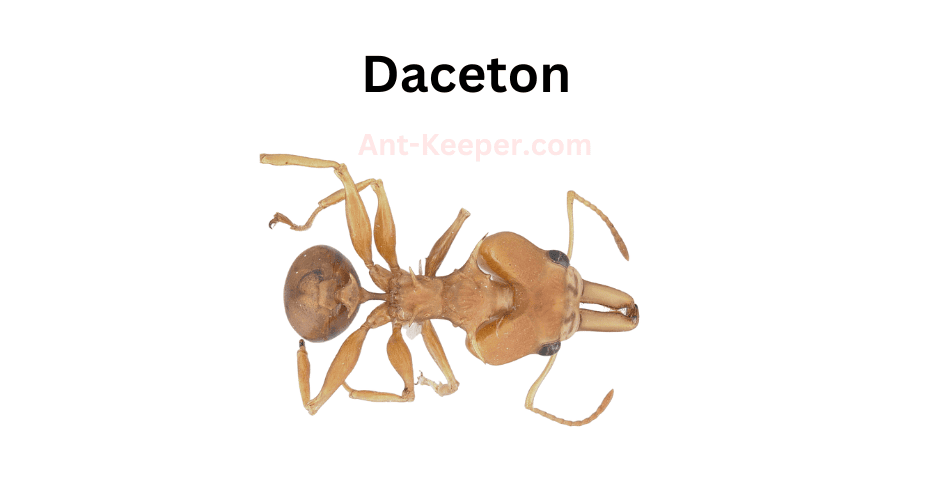
Daceton is a genus of ants belonging to the subfamily Ponerinae.
These ants are commonly known as "dracula ants" due to their unique feeding behavior.
They are found in tropical regions and are known for their aggressive behavior towards other ant species.
Daceton ants are relatively large, with workers measuring up to 10mm in length.
They have long, slender mandibles that are used to capture prey.
Unlike most ants, Daceton ants do not feed on sugary substances.
Instead, they feed on the hemolymph (blood) of other insects, which they obtain by piercing their prey with their mandibles.
Daceton ants are also known for their unique nesting behavior.
They build their nests in the soil, but instead of creating tunnels and chambers, they create a network of interconnected tubes.
These tubes are used to transport food and larvae between different parts of the nest.
Daceton ants are highly territorial and will aggressively defend their nests against other ant species.
They are also known to engage in battles with other Daceton colonies.
These battles can last for hours and involve hundreds of ants.
Overall, Daceton ants are fascinating creatures with unique behaviors and adaptations.
Their aggressive nature and feeding habits make them a formidable force in the ant world.
34) Discothyrea
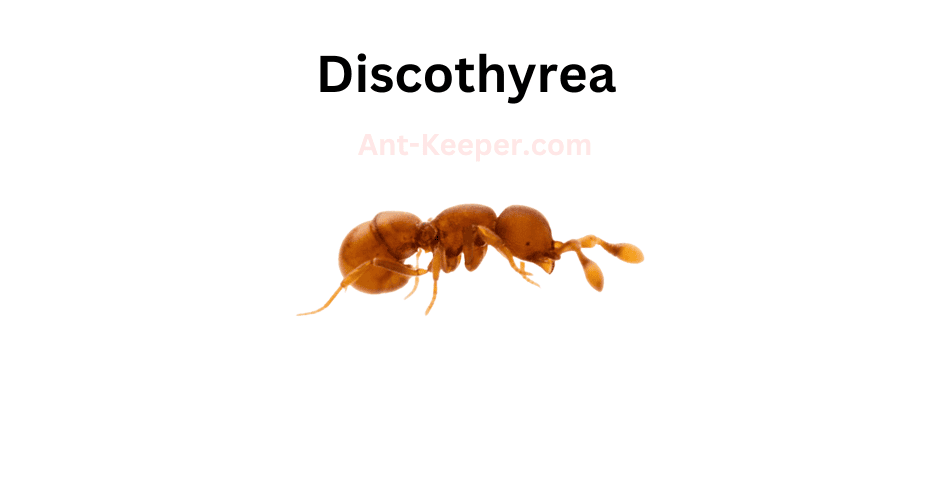
Discothyreabe is a species of ant that belongs to the Formicidae family.
These ants are known for their unique physical characteristics, including their elongated mandibles and slender bodies.
The workers of this species are typically around 3-4mm in length, while the queen can grow up to 7mm.
Discothyreabe ants are primarily found in forested areas, where they build their nests in soil or leaf litter.
They are known to be aggressive towards other ant species and will defend their territory fiercely.
These ants are also known to be nocturnal, which means they are most active during the night.
One of the most interesting aspects of Discothyreabe ants is their feeding habits.
They are known to be generalist feeders, which means they will eat a wide variety of foods.
They have been observed feeding on insects, nectar, and even carrion.
This adaptability allows them to thrive in a variety of environments.
Despite their small size, Discothyreabe ants play an important role in their ecosystem.
They help to control insect populations and contribute to soil health through their nest-building activities.
They are also an important food source for many other animals, including birds and small mammals.
Overall, Discothyreabe ants are a fascinating species that have adapted to thrive in a variety of environments.
Their unique physical characteristics and feeding habits make them an important part of their ecosystem.
35) Dolly Ants, Dolichoderus

Dolly Ants, also known as Dolichoderus spp., are a species of ant that belong to the family Formicidae.
These ants are known for their distinctive elongated heads and bodies, which give them a unique appearance compared to other ant species.
Dolly Ants are typically found in forested areas, where they build their nests in soil or under rocks.
They are known to be highly social insects, living in large colonies that can contain thousands of individuals.
Within these colonies, there is a strict division of labor, with different ants taking on specific roles such as foraging, caring for the young, and defending the colony.
One interesting aspect of Dolly Ant behavior is their use of chemical communication.
These ants use pheromones to communicate with each other, leaving trails of scent that other ants can follow to locate food sources or to find their way back to the nest.
They also use pheromones to signal danger, which can trigger a coordinated response from the colony to defend against predators.
Dolly Ants are omnivorous, feeding on a variety of foods including insects, nectar, and plant sap.
They are also known to have a mutualistic relationship with certain plant species, where they protect the plants from herbivores in exchange for a source of food.
Overall, Dolly Ants are a fascinating species of ant with unique physical and behavioral characteristics.
Their social structure and use of chemical communication make them an important subject of study for researchers interested in understanding the behavior of social insects.
36) Pyramid Ants, Dorymyrmex
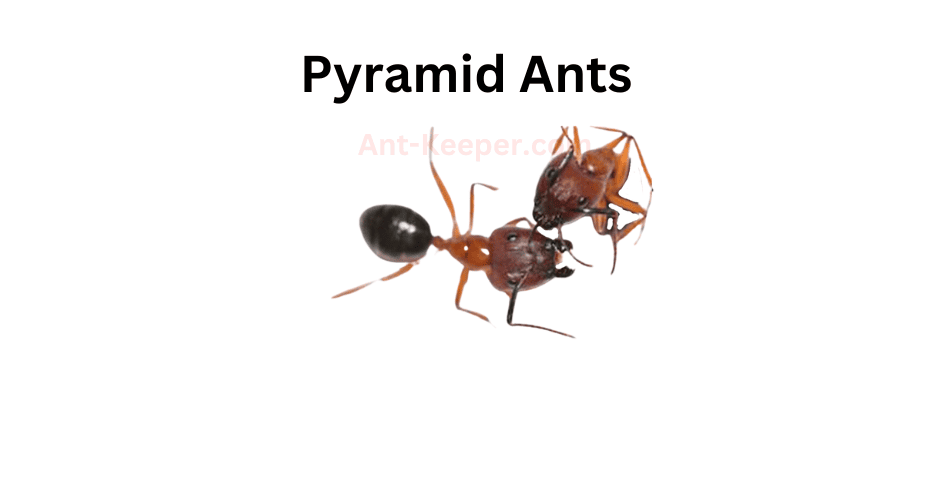
Pyramid ants, also known as Dorymyrmex pyramicus, are a species of ant that belongs to the family Formicidae.
These ants are commonly found in dry and arid regions, where they build their nests in the form of small pyramids made of sand or soil.
The workers of pyramid ants are small, measuring around 3-4 mm in length, and are reddish-brown in color.
They have a slender body with long legs and antennae, which they use to communicate with each other through chemical signals.
Pyramid ants are known for their aggressive behavior towards other ant species and insects that invade their territory.
They use their strong mandibles to defend their nest and food sources, and can deliver a painful sting if threatened.
These ants are omnivorous, feeding on a variety of food sources including insects, seeds, and nectar.
They are also known to tend to aphids, which they protect from predators in exchange for the sweet honeydew that the aphids produce.
Pyramid ants are important members of their ecosystem, playing a role in seed dispersal and soil aeration.
They are also preyed upon by a variety of animals, including birds, lizards, and other insects.
Overall, pyramid ants are fascinating creatures that have adapted to survive in harsh and arid environments.
Their unique nesting behavior and aggressive nature make them an interesting species to study and observe in the wild.
37) Army Ants, Eciton
Army ants are a type of ant that belong to the subfamily Dorylinae.
They are known for their aggressive behavior and their ability to form large colonies that can contain up to several million individuals.
Army ants are found in tropical and subtropical regions around the world, and they play an important role in the ecosystems where they live.
One of the most distinctive features of army ants is their nomadic lifestyle.
Unlike other ants that build permanent nests, army ants are constantly on the move, searching for food and new nesting sites.
They are also known for their impressive hunting skills.
When they come across prey, they swarm over it in large numbers, overwhelming it with their sheer numbers and powerful jaws.
Army ants are also social insects, with a complex hierarchy that determines the roles of each individual in the colony.
The queen is the largest ant in the colony and is responsible for laying eggs.
The workers are responsible for foraging, caring for the young, and defending the colony.
The soldiers are larger and have stronger jaws, which they use to protect the colony from predators.
Despite their aggressive behavior, army ants are an important part of many ecosystems.
They help to control the populations of other insects and small animals, and they provide food for larger predators such as birds and mammals.
In some cultures, army ants are even used as a source of food for humans.
Overall, army ants are fascinating creatures that have adapted to life in some of the most challenging environments on Earth.
Their nomadic lifestyle, impressive hunting skills, and complex social structure make them one of the most interesting species of ants in the world.
38) Ectatomma

Ectatomma is a genus of ants that belongs to the family Formicidae.
These ants are commonly known as "dracula ants" due to their unique feeding behavior.
Ectatomma ants are found in various habitats, including forests, grasslands, and deserts.
The workers of Ectatomma ants are polymorphic, meaning they come in different sizes.
The larger workers are known as "majors," while the smaller ones are called "minors." The majors are responsible for defending the colony and foraging for food, while the minors take care of the brood and tend to the queen.
One of the most fascinating aspects of Ectatomma ants is their feeding behavior.
These ants are obligate predators, meaning they only feed on other insects.
However, they do not simply kill their prey and consume it.
Instead, they use their mandibles to puncture the exoskeleton of their prey and suck out its hemolymph, which is the insect equivalent of blood.
This feeding behavior is similar to that of a vampire, hence the nickname "dracula ants."
Ectatomma ants are also known for their unique nesting habits.
They build their nests in the soil, but instead of creating a traditional entrance, they create a small hole that leads to a tunnel system.
This tunnel system can extend for several meters and can have multiple chambers for the brood, food storage, and the queen.
Overall, Ectatomma ants are fascinating creatures with unique behaviors and adaptations that make them stand out from other ant species.
39) Eurhopalothrix

Eurhopalothrix is a genus of ants that belongs to the subfamily Myrmicinae.
The ants in this genus are small and have a distinctive appearance, with elongated bodies and long, thin legs.
They are known for their unique behavior of using their mandibles to hold onto the legs of their nestmates while they move around, which is thought to help them navigate through their complex nest structures.
Eurhopalothrix ants are found in a variety of habitats, including forests, grasslands, and deserts.
They are typically found in the soil or leaf litter, where they forage for food and build their nests.
These ants are omnivorous, feeding on a variety of small insects, fungi, and plant material.
One species of Eurhopalothrix that has been studied extensively is Eurhopalothrix heliscata.
This ant is known for its unique nest structure, which consists of a series of interconnected chambers and tunnels.
The ants in this species are also known for their aggressive behavior towards other ant species, and will often attack and kill intruders that enter their territory.
Overall, Eurhopalothrix ants are fascinating creatures that play an important role in their ecosystems.
Their unique behavior and nest structures make them a subject of interest for researchers studying ant behavior and ecology.
40) Forelius
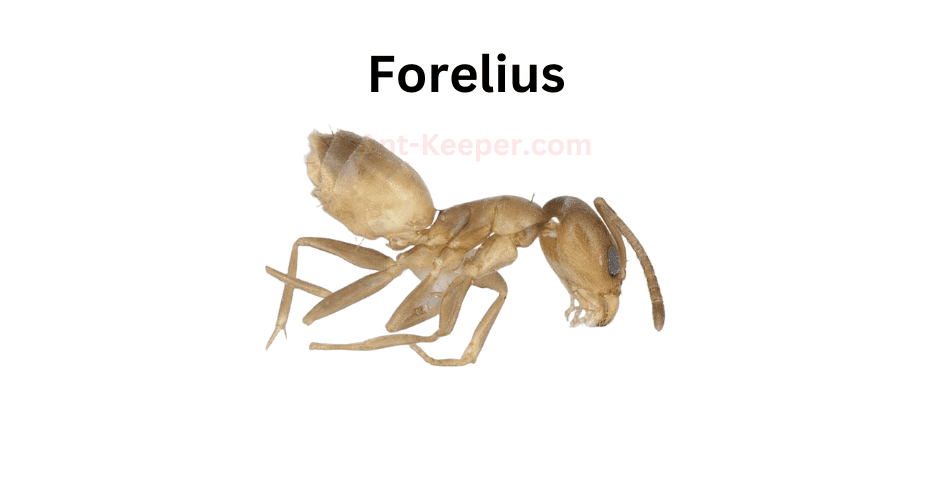
Forelius is a genus of ants that belongs to the family Formicidae.
These ants are commonly found in arid and semi-arid regions, and they are known for their small size and aggressive behavior.
Forelius ants are typically yellow or brown in color, and they have a slender body with long legs and antennae.
Forelius ants are social insects that live in colonies.
The colonies are usually small, with only a few hundred individuals, and they are often found nesting in the soil or under rocks.
The ants are omnivorous, and they feed on a variety of foods, including insects, nectar, and seeds.
One of the most interesting aspects of Forelius ants is their aggressive behavior.
These ants are known for their ability to defend their territory and resources against other ant species.
They will attack and kill other ants that come too close to their nest or food sources.
This behavior is thought to be an adaptation to the harsh and competitive environment in which they live.
Forelius ants also have a unique method of communication.
They use chemical signals, or pheromones, to communicate with each other.
These signals are used to mark trails, identify nestmates, and signal danger.
The ants also use tactile communication, such as touching antennae, to exchange information.
Overall, Forelius ants are fascinating insects that have adapted to survive in harsh and competitive environments.
Their aggressive behavior and unique communication methods make them a fascinating subject for study.
41) Gigantiops

Gigantiops is a genus of ants belonging to the family Formicidae.
These ants are known for their large size and unique physical characteristics.
The workers of Gigantiops are typically around 10-12 mm in length, making them some of the largest ants in the world.
They have elongated mandibles that are used for capturing prey and defending their colony.
Gigantiops ants are found in a variety of habitats, including rainforests and other tropical regions.
They are known to be arboreal, meaning they live in trees and other high places.
These ants are also known for their aggressive behavior, and will readily attack other insects and even small animals if they feel threatened.
One of the most interesting aspects of Gigantiops ants is their social structure.
Like many other ant species, they live in colonies that are organized around a queen.
However, unlike most ants, Gigantiops colonies are relatively small, with only a few hundred individuals.
This makes them easier to study and observe in the wild.
Overall, Gigantiops ants are fascinating creatures that offer a unique glimpse into the world of social insects.
Their large size, aggressive behavior, and unique social structure make them a popular subject of study for entomologists and other scientists.
42) Gnamptogenys
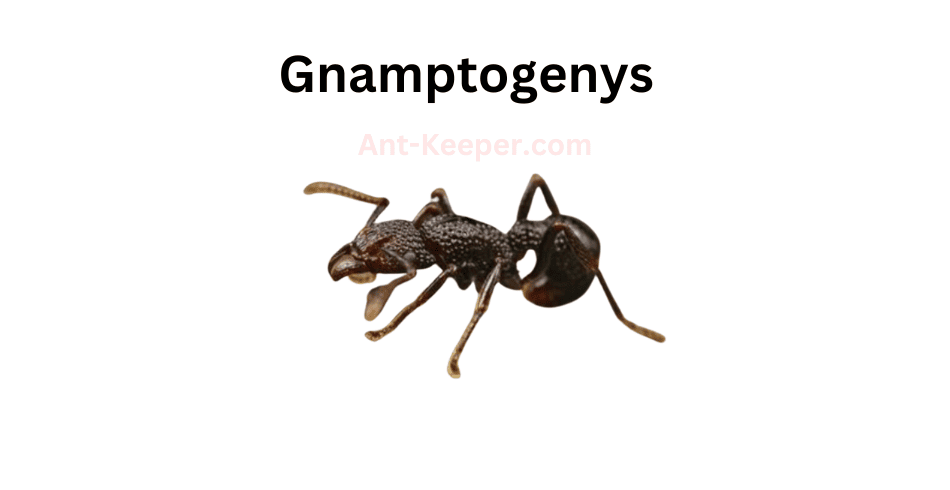
Gnamptogenys is a genus of ants that belongs to the subfamily Ectatomminae.
These ants are known for their predatory behavior and are commonly found in tropical regions.
The genus Gnamptogenys is characterized by their elongated mandibles, which are used to capture and subdue their prey.
Gnamptogenys ants are typically small in size, measuring between 2-5mm in length.
They have a dark brown or black coloration and a slender body shape.
These ants are known for their aggressive behavior and are often found hunting in groups.
One of the unique features of Gnamptogenys ants is their ability to use their mandibles to capture and subdue prey that is much larger than themselves.
They are also known to use their mandibles to defend their nests from predators.
Gnamptogenys ants are primarily found in forested areas, where they hunt for insects and other small invertebrates.
They are also known to scavenge for food, and will often feed on dead insects and other organic matter.
Overall, Gnamptogenys ants are fascinating creatures that play an important role in their ecosystem.
Their predatory behavior helps to control insect populations, while their scavenging behavior helps to recycle organic matter.
43) Heteroponera
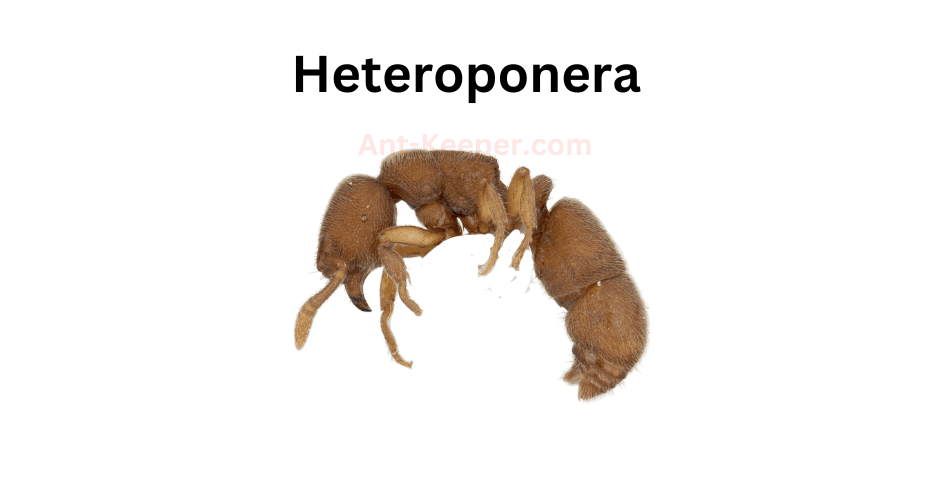
Heteroponerabe is a species of ant that belongs to the Heteroponera genus.
These ants are known for their aggressive behavior and are often found in forested areas.
They have a dark brown or black coloration and are relatively small in size, measuring around 5-7mm in length.
Heteroponerabe ants are solitary hunters and are known to be very efficient at capturing prey.
They have strong mandibles that they use to subdue their prey, which can include other insects, spiders, and even small vertebrates.
These ants are also known to scavenge for food, and will often feed on the carcasses of dead animals.
One interesting aspect of Heteroponerabe ants is their reproductive behavior.
Unlike many other ant species, Heteroponerabe queens do not mate with multiple males.
Instead, they mate with a single male and then store his sperm in a specialized organ called the spermatheca.
This allows the queen to fertilize her eggs over a long period of time, without the need for repeated mating.
Overall, Heteroponerabe ants are fascinating creatures that play an important role in their ecosystem.
While they may be aggressive and intimidating, they are also highly efficient hunters and scavengers that help to keep their environment in balance.
44) Hylomyrma
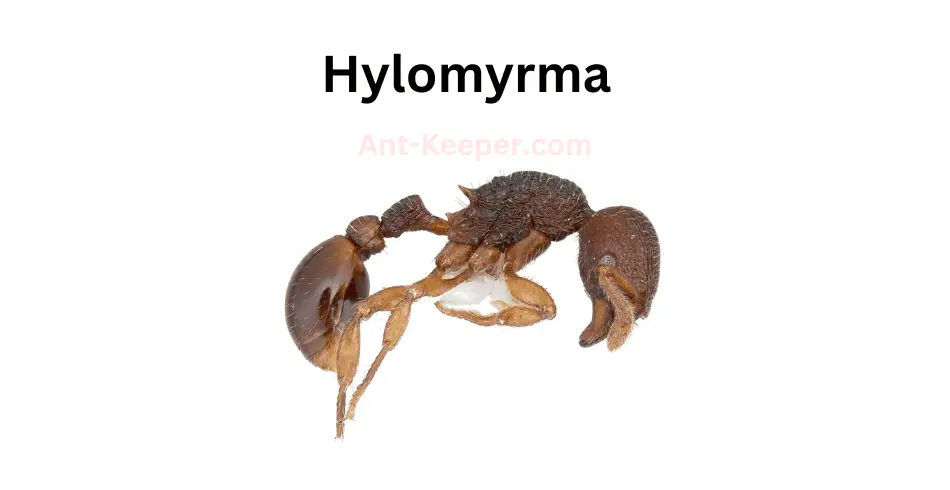
Hylomyrmabe is a species of ant that belongs to the subfamily of Formicinae.
These ants are known for their unique physical characteristics, including their elongated mandibles and slender bodies.
They are typically found in forested areas, where they build their nests in soil or under logs.
Hylomyrmabe ants are known for their aggressive behavior and are often seen attacking other insects and even small animals.
They are also known to be territorial and will defend their nests fiercely against intruders.
These ants are omnivorous and feed on a variety of food sources, including insects, nectar, and honeydew.
They are also known to cultivate and protect aphids, which produce honeydew that the ants feed on.
Hylomyrmabe ants are social insects and live in colonies that can range in size from a few dozen to several thousand individuals.
The colony is typically led by a queen ant, who is responsible for laying eggs and maintaining the colony's population.
Overall, Hylomyrmabe ants are fascinating creatures that play an important role in their ecosystem.
Their aggressive behavior and unique physical characteristics make them a fascinating species to study and observe.
45) Crypt Ants, Hypoponera

Crypt ants, also known as fungus-growing ants, are a group of ants that cultivate fungi for food.
They are found in various habitats, including forests, grasslands, and deserts.
Crypt ants are known for their unique nesting behavior, as they construct underground chambers to house their fungal gardens.
These ants have a symbiotic relationship with the fungi they cultivate.
The ants provide the fungi with a suitable environment for growth, while the fungi provide the ants with a source of food.
The ants also protect their fungal gardens from other insects and parasites.
Crypt ants are social insects, living in colonies that can range from a few dozen to several thousand individuals.
The colonies are organized into castes, with the queen being the largest and most important member.
The queen is responsible for laying eggs, while the workers are responsible for tending to the fungal gardens and caring for the young.
One interesting aspect of crypt ants is their ability to create "satellite" nests.
These nests are smaller chambers located near the main nest, and they serve as storage areas for food and as a place for the queen to lay eggs.
The satellite nests are connected to the main nest by underground tunnels, allowing the ants to move between them.
Overall, crypt ants are fascinating insects that have developed a unique way of obtaining food.
Their symbiotic relationship with fungi and their complex nesting behavior make them an important species to study in the field of entomology.
46) Kalathomyrmex

Kalathomyrmex is a genus of ants that belongs to the subfamily Myrmicinae.
These ants are relatively small in size, with workers measuring between 2.5 to 3.5 millimeters in length.
The genus is characterized by its unique morphology, including a distinctive head shape and a narrow waist.
Kalathomyrmex ants are known to inhabit a variety of habitats, including forests, grasslands, and deserts.
They are typically found nesting in soil or leaf litter, and are known to be active foragers, feeding on a variety of food sources including insects, seeds, and nectar.
The reproductive biology of Kalathomyrmex ants is not well understood, but it is believed that they have a typical ant reproductive system, with queens and males mating during a nuptial flight.
The colony size of Kalathomyrmex ants is relatively small, with only a few hundred individuals per colony.
Overall, Kalathomyrmex ants are an interesting and unique genus of ants that are still being studied by scientists to better understand their behavior, ecology, and evolutionary history.
47) Army Ants, Labidus
Army ants are a type of ant that belong to the subfamily Dorylinae.
They are known for their aggressive behavior and their ability to form large colonies that can contain up to several million individuals.
Army ants are found in tropical and subtropical regions around the world, and they play an important role in the ecosystems where they live.
One of the most distinctive features of army ants is their nomadic lifestyle.
Unlike other ants that build permanent nests, army ants are constantly on the move, searching for food and new nesting sites.
They are also known for their impressive hunting skills.
When they come across prey, they swarm over it in large numbers, overwhelming it with their sheer numbers and powerful jaws.
Army ants are also social insects, with a complex hierarchy that determines the roles of each individual in the colony.
The queen is the largest ant in the colony and is responsible for laying eggs.
The workers are responsible for foraging, caring for the young, and defending the colony.
The soldiers are larger and have stronger jaws, which they use to protect the colony from predators.
Despite their aggressive behavior, army ants are an important part of many ecosystems.
They help to control the populations of other insects and small animals, and they provide food for larger predators such as birds and mammals.
In some cultures, army ants are even used as a source of food for humans.
Overall, army ants are fascinating creatures that have adapted to life in some of the most challenging environments on Earth.
Their nomadic lifestyle, impressive hunting skills, and complex social structure make them one of the most interesting species of ants in the world.
48) Lachnomyrmex

Lachnomyrmex is a genus of ants that belongs to the subfamily Formicinae.
These ants are known for their unique morphology and behavior.
They are small in size, measuring between 2-5 mm in length, and have a distinctive appearance with a slender body and long legs.
The head of Lachnomyrmex ants is elongated and narrow, with large compound eyes and long antennae.
Lachnomyrmex ants are primarily arboreal, meaning they live in trees and other vegetation.
They are known to form small colonies, with a queen and a few dozen workers.
These ants are highly territorial and will defend their nests aggressively against intruders.
One of the most interesting aspects of Lachnomyrmex ants is their relationship with other insects.
They are known to form mutualistic relationships with aphids, which provide them with a source of honeydew in exchange for protection.
Lachnomyrmex ants will actively tend to the aphids, protecting them from predators and moving them to new feeding sites when necessary.
Overall, Lachnomyrmex ants are fascinating creatures with unique behaviors and relationships with other insects.
Their small size and arboreal lifestyle make them difficult to study, but researchers continue to learn more about these ants and their role in the ecosystem.
49) Moisture Ants, Lasius
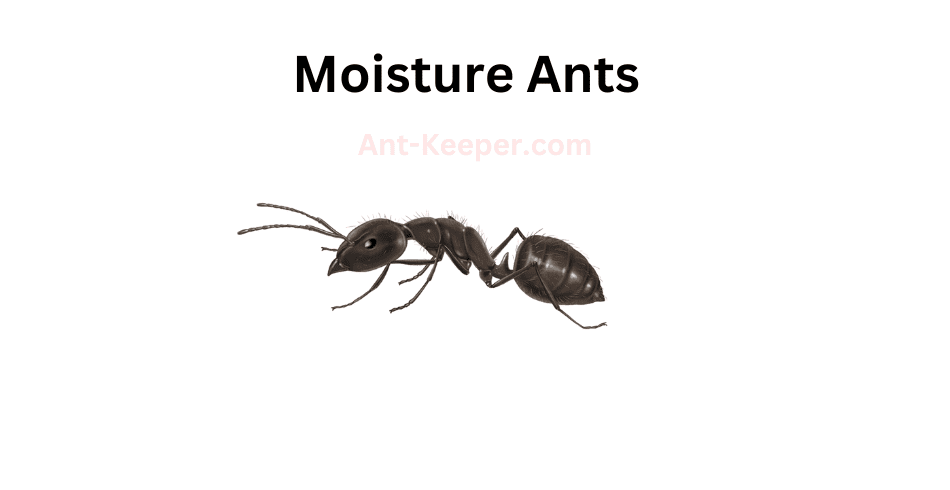
Moisture ants are a type of ant that is commonly found in damp environments.
They are known for their ability to thrive in areas with high levels of moisture, such as in rotting wood or in soil that is constantly moist.
These ants are typically small in size, measuring only a few millimeters in length, and are usually yellow or brown in color.
Moisture ants are social insects that live in colonies, with each colony consisting of a queen, workers, and soldiers.
The queen is responsible for laying eggs, while the workers and soldiers are responsible for maintaining the colony and protecting it from predators.
One of the unique characteristics of moisture ants is their ability to create satellite colonies.
These colonies are established in nearby locations and are connected to the main colony by a network of tunnels.
This allows the ants to expand their territory and increase their chances of survival.
Moisture ants are also known for their ability to control the moisture levels in their environment.
They do this by building intricate nests that are designed to regulate the humidity levels inside.
This is important for the survival of the colony, as too much moisture can lead to the growth of harmful fungi and bacteria.
Overall, moisture ants are fascinating creatures that have adapted to thrive in environments that would be inhospitable to many other species.
Their ability to control moisture levels and create satellite colonies makes them a formidable force in their ecosystem.
50) Lenomyrmex

Lenomyrmex is a genus of ants that belongs to the subfamily Myrmicinae.
These ants are known for their unique morphology, which includes a long and slender body, elongated mandibles, and a distinctive head shape.
The genus is relatively small, with only a few known species.
Lenomyrmex ants are typically found in forested areas, where they nest in soil or leaf litter.
They are known to be aggressive predators, feeding on a variety of insects and other arthropods.
These ants are also known to exhibit a high degree of social organization, with colonies consisting of hundreds or even thousands of individuals.
One of the most interesting aspects of Lenomyrmex ants is their reproductive behavior.
Unlike many other ant species, Lenomyrmex queens do not mate with multiple males.
Instead, they mate with a single male and then store his sperm in a specialized organ called the spermatheca.
This allows the queen to fertilize eggs over a long period of time, without the need for repeated matings.
Overall, Lenomyrmex ants are fascinating creatures that offer a unique glimpse into the complex world of social insects.
Their distinctive morphology, predatory behavior, and reproductive strategies make them a valuable subject of study for entomologists and other researchers.
51) Leptanilloides

Leptanilloides is a genus of ants that belongs to the subfamily Dorylinae.
These ants are known for their small size and cryptic behavior, making them difficult to study in the wild.
The genus is characterized by their elongated mandibles, which are used for capturing prey and defending the colony.
Leptanilloides ants are typically found in tropical regions, where they inhabit leaf litter and soil.
They are known to form small colonies, with only a few hundred individuals.
The colonies are typically headed by a single queen, who is responsible for laying eggs and maintaining the colony.
One interesting aspect of Leptanilloides ants is their behavior towards other ant species.
They are known to be highly aggressive towards other ants, and will attack and kill any intruders that enter their territory.
This behavior is thought to be a result of competition for resources, as Leptanilloides ants rely heavily on small arthropods for food.
Despite their small size and cryptic behavior, Leptanilloides ants play an important role in their ecosystems.
They help to control populations of small arthropods, and their aggressive behavior towards other ants may help to maintain balance in ant communities.
Further research is needed to fully understand the ecology and behavior of these fascinating ants.
52) Razorjaw Ants, Leptogenys

The Razorjaw Ant, also known as the Pachycondyla villosa, is a species of ant belonging to the subfamily Ponerinae.
These ants are known for their sharp mandibles, which are used for hunting and defense.
The workers of this species are typically around 8-10mm in length, while the queen can reach up to 15mm.
Razorjaw Ants are found in a variety of habitats, including forests, grasslands, and deserts.
They are known to be aggressive predators, feeding on a variety of insects and other arthropods.
These ants are also known to scavenge for food, and will even attack and kill other ant species to steal their food.
The nests of Razorjaw Ants are typically found in soil or leaf litter, and can be quite large.
The queen is responsible for laying eggs, and the workers are responsible for caring for the brood and maintaining the nest.
These ants are also known for their ability to defend their nest, and will aggressively attack any intruders.
Overall, the Razorjaw Ant is a fascinating species of ant known for its sharp mandibles, aggressive behavior, and impressive hunting skills.
53) Linepithema

Linepithema is a genus of ants that belongs to the subfamily Dolichoderinae.
The ants in this genus are small in size, measuring between 1.5 to 3 millimeters in length.
They are known for their ability to form large colonies, which can consist of thousands of individuals.
Linepithema ants are typically found in urban and suburban areas, where they feed on a variety of food sources, including sweets, meats, and fats.
They are also known to feed on the honeydew produced by aphids and other insects.
One of the most interesting aspects of Linepithema ants is their ability to form supercolonies.
These supercolonies can span hundreds of meters and contain millions of individuals.
This is made possible by the ants' ability to recognize and tolerate individuals from other colonies, which allows them to merge and form larger groups.
Despite their small size, Linepithema ants are known for their aggressive behavior.
They will defend their territory and food sources fiercely, often attacking other ants and insects that come too close.
They are also known to be able to adapt quickly to changing environments, which has allowed them to thrive in many different parts of the world.
Overall, Linepithema ants are fascinating creatures that have adapted to life in urban and suburban environments.
Their ability to form supercolonies and adapt quickly to changing conditions has made them a successful and resilient species.
54) Velvety Tree Ants, Liometopum

Velvety Tree Ants, also known as Liometopum occidentale, are a species of ant that belong to the family Formicidae.
These ants are commonly found in forested areas and are known for their unique appearance and behavior.
Velvety Tree Ants are typically black or dark brown in color and have a velvety texture to their bodies.
They are relatively large ants, with workers measuring up to 10mm in length.
These ants are also known for their distinctive mandibles, which are used for cutting and carrying food.
One of the most interesting aspects of Velvety Tree Ants is their nesting behavior.
These ants build large nests in trees, which can be up to several meters in diameter.
The nests are made from a combination of plant material and the ants' own saliva, which creates a strong and durable structure.
Velvety Tree Ants are omnivorous, meaning that they eat both plant and animal matter.
They are known to feed on a variety of insects, as well as honeydew produced by aphids and other insects.
These ants are also known to cultivate fungi within their nests, which they use as a food source.
In terms of their ecological role, Velvety Tree Ants are important predators and scavengers in forest ecosystems.
They help to control populations of other insects and contribute to nutrient cycling by breaking down organic matter.
Overall, Velvety Tree Ants are a fascinating and important species of ant that play an important role in forest ecosystems.
Their unique appearance and behavior make them a popular subject of study for scientists and nature enthusiasts alike.
55) Martialis

Martialis is a genus of ants that belongs to the subfamily Martialinae.
These ants are known for their unique morphology and behavior.
They are small in size, measuring only a few millimeters in length, and have elongated mandibles that are used for hunting and defense.
Martialis ants are also known for their subterranean lifestyle.
They live in underground nests and are rarely seen above ground.
Their nests are typically located in soil or leaf litter, and they are known to be highly territorial.
One of the most interesting aspects of Martialis ants is their diet.
They are obligate predators, which means that they only feed on other insects.
They are known to prey on a variety of insects, including termites, cockroaches, and other ants.
Despite their small size, Martialis ants are considered to be one of the most primitive ant genera.
They have a number of unique characteristics that set them apart from other ants, including their elongated mandibles and subterranean lifestyle.
Overall, Martialis ants are a fascinating group of insects that have captured the attention of scientists and ant enthusiasts alike.
Their unique morphology and behavior make them a valuable subject for further study, and they continue to provide insights into the evolution and diversity of ants.
56) Mayaponera
Mayaponerabe is a species of ant that belongs to the Formicidae family.
These ants are known for their unique physical characteristics and behavior.
They are small in size, measuring only a few millimeters in length, and have a dark brown or black coloration.
One of the most distinctive features of Mayaponerabe ants is their mandibles.
These are long and slender, and are used to capture prey and defend the colony.
The ants are also known for their aggressive behavior, and will attack any intruders that come too close to their nest.
Mayaponerabe ants are typically found in forested areas, where they build their nests in the soil or in decaying wood.
They are omnivorous, feeding on a variety of insects, fruits, and seeds.
The ants are also known to cultivate fungi, which they use as a food source.
The reproductive cycle of Mayaponerabe ants is unique.
The colony is headed by a queen, who is responsible for laying eggs.
The queen produces two types of offspring: workers and soldiers.
The workers are responsible for foraging and caring for the young, while the soldiers defend the colony.
Mayaponerabe ants play an important role in their ecosystem.
They help to control the population of other insects, and their cultivation of fungi helps to break down decaying organic matter.
Despite their small size, these ants are a vital part of the forest ecosystem.
57) Megalomyrmex
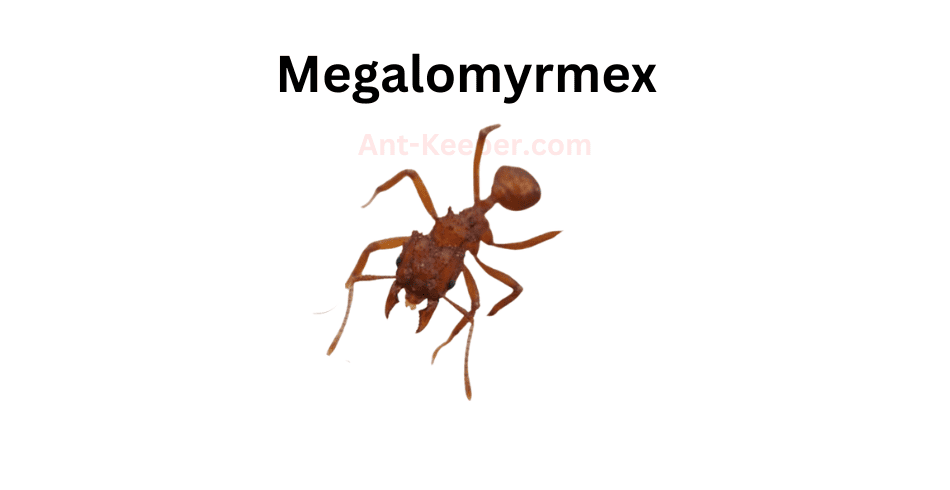
Megalomyrmex is a genus of ants belonging to the subfamily Myrmicinae.
These ants are known for their large size and aggressive behavior.
The workers of Megalomyrmex are typically between 5-10 mm in length, with the queen being even larger.
They have a distinctive appearance, with a broad head and mandibles that are used for hunting and defense.
Megalomyrmex ants are found in a variety of habitats, including forests, grasslands, and deserts.
They are known to be opportunistic predators, feeding on a wide range of insects and other small animals.
They are also known to engage in symbiotic relationships with other insects, such as aphids and mealybugs, which they protect in exchange for a sugary secretion known as honeydew.
One of the most interesting aspects of Megalomyrmex ants is their social behavior.
They are highly organized, with a complex caste system that includes workers, soldiers, and a queen.
The queen is responsible for laying eggs, while the workers and soldiers are responsible for maintaining the nest and defending it from predators.
Despite their aggressive behavior, Megalomyrmex ants are not considered to be a major pest species.
They are generally beneficial to the ecosystem, playing an important role in controlling insect populations and contributing to soil health.
However, they can become a nuisance if they invade homes or other structures in search of food or shelter.
Overall, Megalomyrmex ants are fascinating creatures that have much to teach us about the complexities of social behavior and the importance of insects in the natural world.
58) Trailing Pharaoh And Timid Ants, Monomorium

The Trailing Pharaoh ant, also known as the Monomorium pharaonis, is a small, reddish-brown ant species that is commonly found in urban areas.
These ants are known for their ability to form large colonies, which can consist of thousands of individuals.
One interesting behavior of the Trailing Pharaoh ant is their tendency to trail behind other ants.
This behavior is thought to be a form of communication, as the trailing ants are able to follow the scent trail left by the leading ants.
This behavior is also used to locate food sources, as the trailing ants are able to follow the trail to the source of the food.
In contrast to the bold behavior of the Trailing Pharaoh ant, the Timid ant, also known as the Temnothorax species, is a much more cautious species.
These ants are small and brown, and are often found in wooded areas.
They are known for their timid behavior, and will often retreat into their nests when threatened.
Despite their timid nature, the Timid ant is still able to form large colonies.
They are also known for their ability to adapt to changing environments, and can be found in a variety of habitats, including forests, meadows, and even urban areas.
Overall, both the Trailing Pharaoh ant and the Timid ant are fascinating species that demonstrate unique behaviors and adaptations.
By studying these ants, scientists can gain a better understanding of the complex social behaviors and ecological roles of ants in their respective environments.
59) Mycetagroicus

Mycetagroicusbe is a species of ant that belongs to the family Formicidae.
These ants are known for their unique behavior of cultivating fungi as their primary food source.
They are commonly found in forested areas and have a symbiotic relationship with the fungi they cultivate.
Mycetagroicusbe ants are small in size, measuring between 2-3 mm in length.
They have a dark brown or black coloration and a slender body shape.
These ants are social insects and live in colonies that can range from a few hundred to several thousand individuals.
One of the most interesting aspects of Mycetagroicusbe ants is their farming behavior.
They cultivate a specific type of fungus called Leucoagaricus gongylophorus, which they feed on.
The ants collect small pieces of plant material and bring them back to their nest, where they use them to cultivate the fungus.
The ants then feed on the fungus, which provides them with all the nutrients they need to survive.
Mycetagroicusbe ants have a complex social structure, with different castes of ants performing different tasks within the colony.
The queen ant is responsible for laying eggs, while the worker ants are responsible for foraging, caring for the young, and maintaining the nest.
Overall, Mycetagroicusbe ants are fascinating creatures that have evolved a unique way of obtaining their food.
Their farming behavior is a testament to the ingenuity of nature and the complex relationships that exist between different species in the natural world.
60) Mycetarotes

Mycetarotesbe is a species of ant that belongs to the Formicidae family.
These ants are known for their unique behavior of cultivating fungi as their primary food source.
They are commonly found in forested areas and have a symbiotic relationship with the fungi they cultivate.
Mycetarotesbe ants are small in size, measuring around 2-3 mm in length.
They have a dark brown or black coloration and a distinctively shaped head that is wider than their thorax.
These ants are known for their strong mandibles, which they use to cut and transport plant material to their underground nests.
One of the most interesting aspects of Mycetarotesbe ants is their farming behavior.
They cultivate a specific type of fungus called Leucocoprinus gongylophorus, which they feed on exclusively.
The ants collect plant material, such as leaves and twigs, and bring it back to their nests where they use it to grow the fungus.
The ants then feed on the fungus, which provides them with all the nutrients they need to survive.
Mycetarotesbe ants live in large colonies that can contain thousands of individuals.
They have a complex social structure, with different castes of ants performing different tasks.
The queen ant is responsible for laying eggs, while the worker ants are responsible for foraging, farming, and caring for the young.
Overall, Mycetarotesbe ants are fascinating creatures that have evolved a unique way of life.
Their farming behavior and symbiotic relationship with fungi make them an important species in forest ecosystems.
61) Mycetophylax

Mycetophylax is a genus of ants that belongs to the subfamily Myrmicinae.
The ants in this genus are known for their unique behavior of cultivating fungi as their primary food source.
Mycetophylax ants are small in size, with workers measuring between 2-4 mm in length.
They have a dark brown or black coloration and a slender body shape.
Mycetophylax ants are social insects that live in colonies.
The colonies are typically small, with only a few hundred individuals.
The ants are highly organized and have a strict division of labor.
The queen is responsible for laying eggs, while the workers take care of the brood, forage for food, and defend the colony.
One of the most interesting aspects of Mycetophylax ants is their unique relationship with fungi.
The ants cultivate a specific type of fungus that grows on plant material.
The ants collect the plant material and bring it back to the colony, where they chew it up and mix it with their saliva.
The resulting paste is then used to inoculate the fungus, which grows on specialized structures called fungal gardens.
The ants tend to the gardens, removing any harmful bacteria or fungi and ensuring that the fungus has the right conditions to grow.
The ants feed on the fungus, which provides them with all the nutrients they need to survive.
In return, the ants protect the fungus from predators and other threats.
This mutualistic relationship between the ants and the fungus is essential for the survival of both species.
Mycetophylax ants are fascinating creatures that have evolved a unique way of life.
Their ability to cultivate fungi as their primary food source is a testament to the ingenuity of nature.
Despite their small size, these ants play an important role in their ecosystem and are a vital part of the web of life.
62) Mycetosoritis

Mycetosoritis is a genus of ants that belongs to the family Formicidae.
These ants are known for their unique behavior of cultivating fungi as their primary food source.
The name Mycetosoritis is derived from the Greek words "myceto" meaning fungus and "soritis" meaning gatherer.
Mycetosoritis ants are small in size, measuring between 2 to 4 millimeters in length.
They have a dark brown or black coloration and a distinctively shaped head with a narrow neck.
These ants are found in a variety of habitats, including forests, grasslands, and deserts.
One of the most interesting aspects of Mycetosoritis ants is their symbiotic relationship with fungi.
These ants cultivate fungi in underground gardens, which they tend to and protect from pests and other threats.
The fungi, in turn, provide the ants with a nutritious food source.
Mycetosoritis ants are also known for their aggressive behavior towards other ant species.
They will defend their territory and food sources fiercely, often engaging in battles with rival ant colonies.
Despite their small size, Mycetosoritis ants play an important role in their ecosystem.
By cultivating fungi, they help to break down organic matter and recycle nutrients back into the soil.
They also serve as a food source for other animals, such as birds and small mammals.
Overall, Mycetosoritis ants are fascinating creatures that have evolved unique adaptations to survive in their environment.
Their symbiotic relationship with fungi and aggressive behavior towards rivals make them a fascinating subject for scientific study.
63) Mycocepurus

Mycocepurus is a genus of ants that belongs to the family Formicidae.
These ants are known for their unique relationship with fungi, which they cultivate and feed on.
Mycocepurus ants are small in size, with workers measuring between 2-4 mm in length.
One of the most interesting aspects of Mycocepurus ants is their farming behavior.
They cultivate a specific type of fungus called Leucoagaricus gongylophorus, which they feed on exclusively.
The ants carry the fungus with them wherever they go, and they even have specialized structures on their bodies that help them transport and cultivate the fungus.
Mycocepurus ants are also known for their social behavior.
They live in large colonies, with a queen ant at the center of the group.
The queen is responsible for laying eggs, while the workers take care of the young and maintain the fungus gardens.
Despite their small size, Mycocepurus ants play an important role in their ecosystem.
They help to break down organic matter and recycle nutrients, and they also serve as a food source for other animals.
Overall, Mycocepurus ants are fascinating creatures that have developed a unique and complex relationship with fungi.
Their behavior and social structure make them an interesting subject for scientific study, and they serve as an important part of their ecosystem.
64) Mite-Eating Ants, Myrmecina

The Mite-Eating Ant, also known as the Pheidole megacephala, is a species of ant that is commonly found in tropical and subtropical regions around the world.
These ants are known for their unique feeding habits, as they primarily feed on mites and other small arthropods.
The Mite-Eating Ant is a relatively small ant, with workers measuring between 2-3mm in length.
They have a distinctive head shape, with a large and elongated head that is almost as wide as their thorax.
Their bodies are typically a reddish-brown color, with darker legs and antennae.
These ants are highly social, living in large colonies that can contain thousands of individuals.
The colonies are typically divided into two groups: workers and reproductive individuals.
The workers are responsible for foraging for food, caring for the young, and defending the colony, while the reproductive individuals are responsible for producing offspring.
One of the most interesting aspects of the Mite-Eating Ant is their feeding habits.
These ants are specialized predators, feeding almost exclusively on mites and other small arthropods.
They use their large mandibles to capture and kill their prey, and then carry it back to the colony to be consumed.
In addition to their unique feeding habits, the Mite-Eating Ant is also known for its ability to adapt to a wide range of environments.
They are able to thrive in both natural and urban environments, and can be found in a variety of habitats, including forests, grasslands, and even in homes and buildings.
Overall, the Mite-Eating Ant is a fascinating species of ant that has adapted to a unique niche in the ecosystem.
Their specialized feeding habits and ability to thrive in a variety of environments make them an important species to study and understand.
65) Myrmelachista
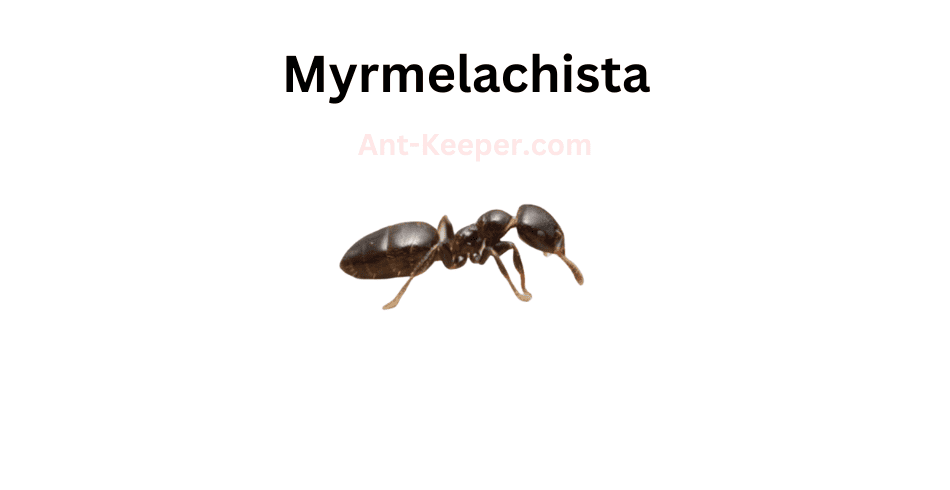
Myrmelachistabe is a species of ant that belongs to the Formicidae family.
These ants are known for their small size and are typically found in forested areas.
They are known to be aggressive and territorial, often engaging in battles with other ant colonies.
The workers of Myrmelachistabe are typically around 2-3mm in length and are dark brown in color.
They have a distinct head and thorax, with a narrow waist and long legs.
These ants are known to be omnivorous, feeding on a variety of food sources including insects, nectar, and plant sap.
Myrmelachistabe colonies are typically small, with only a few hundred individuals.
They are known to build their nests in soil or leaf litter, and often have multiple entrances.
These ants are also known for their ability to quickly relocate their nests if they feel threatened.
One interesting behavior of Myrmelachistabe is their use of chemical signals to communicate with each other.
They use pheromones to mark trails and to signal danger to other members of the colony.
This allows them to quickly respond to threats and to coordinate their activities.
Overall, Myrmelachistabe is a fascinating species of ant that plays an important role in forest ecosystems.
Their aggressive behavior and ability to quickly adapt to changing conditions make them a formidable opponent for other ant species.
66) Myrmicocrypta

Myrmicocrypta is a genus of ants that belongs to the family Formicidae.
These ants are known for their cryptic behavior, which means they are very good at hiding and avoiding detection.
The name Myrmicocrypta is derived from the Greek words "myrmico" meaning ant and "crypta" meaning hidden or concealed.
The ants of the Myrmicocrypta genus are small in size, measuring only a few millimeters in length.
They have a dark brown or black coloration and a slender body shape.
These ants are known for their ability to live in small colonies, which typically consist of a queen and a few workers.
One of the most interesting aspects of Myrmicocrypta ants is their nesting behavior.
These ants are known for nesting in small crevices and cracks in rocks, trees, and other natural structures.
They are also known to nest in the soil, where they create small tunnels and chambers.
Myrmicocrypta ants are omnivorous, which means they eat both plant and animal matter.
They are known to feed on small insects, nectar, and honeydew.
These ants are also known to tend to aphids, which produce honeydew that the ants feed on.
Overall, Myrmicocrypta ants are fascinating creatures that are well adapted to their environment.
Their cryptic behavior and nesting habits make them difficult to study, but researchers continue to learn more about these ants and their unique behaviors.
67) Army Ants, Neivamyrmex
Army ants are a type of ant that belong to the subfamily Dorylinae.
They are known for their aggressive behavior and their ability to form large colonies that can contain up to several million individuals.
Army ants are found in tropical and subtropical regions around the world, and they play an important role in the ecosystems where they live.
One of the most distinctive features of army ants is their nomadic lifestyle.
Unlike other ants that build permanent nests, army ants are constantly on the move, searching for food and new nesting sites.
They are also known for their impressive hunting skills.
When they come across prey, they swarm over it in large numbers, overwhelming it with their sheer numbers and powerful jaws.
Army ants are also social insects, with a complex hierarchy that determines the roles of each individual in the colony.
The queen is the largest ant in the colony and is responsible for laying eggs.
The workers are responsible for foraging, caring for the young, and defending the colony.
The soldiers are larger and have stronger jaws, which they use to protect the colony from predators.
Despite their aggressive behavior, army ants are an important part of many ecosystems.
They help to control the populations of other insects and small animals, and they provide food for larger predators such as birds and mammals.
In some cultures, army ants are even used as a source of food for humans.
Overall, army ants are fascinating creatures that have adapted to life in some of the most challenging environments on Earth.
Their nomadic lifestyle, impressive hunting skills, and complex social structure make them one of the most interesting species of ants in the world.
68) Neoponera
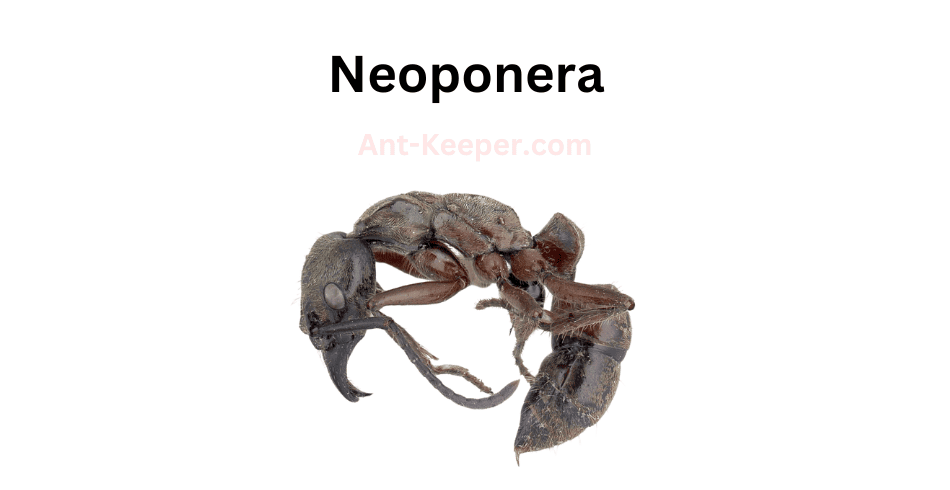
Neoponerabe is a species of ant that belongs to the Ponerinae subfamily.
These ants are known for their aggressive behavior and are often found in tropical regions.
The workers of Neoponerabe are typically around 5-6 mm in length and have a dark brown or black coloration.
One of the unique characteristics of Neoponerabe ants is their ability to hunt and capture large prey.
They are known to attack and kill insects that are much larger than themselves, such as grasshoppers and beetles.
This is made possible by their strong mandibles and powerful stingers.
Neoponerabe ants are also known for their social behavior.
They live in colonies that can range in size from a few dozen to several hundred individuals.
The colony is typically led by a queen ant, who is responsible for laying eggs and maintaining the overall health of the colony.
In addition to their aggressive behavior and social structure, Neoponerabe ants are also important members of their ecosystem.
They play a crucial role in controlling the populations of other insects and invertebrates, which helps to maintain the balance of the ecosystem.
Overall, Neoponerabe ants are fascinating creatures that have adapted to thrive in their tropical habitats.
Their unique characteristics and behaviors make them an important species to study and understand.
69) Nesomyrmex

Nesomyrmex is a genus of ants that belongs to the subfamily Myrmicinae.
These ants are small in size, measuring between 2-5 mm in length.
They are known for their distinctive appearance, with a slender body and elongated mandibles.
The coloration of Nesomyrmex ants varies between species, with some being black, while others are reddish-brown or yellowish-brown.
Nesomyrmex ants are primarily found in tropical and subtropical regions, where they inhabit a variety of habitats, including forests, grasslands, and deserts.
They are known to be highly adaptable and can thrive in both wet and dry environments.
These ants are social insects and live in colonies that can range in size from a few dozen to several hundred individuals.
The colony is typically led by a queen, who is responsible for laying eggs and maintaining the colony's reproductive population.
The workers, which are sterile females, are responsible for foraging for food, caring for the young, and defending the colony.
Nesomyrmex ants are known to be aggressive and will defend their colony fiercely against intruders.
They are also known to be opportunistic feeders, consuming a wide variety of food sources, including insects, seeds, and nectar.
Overall, Nesomyrmex ants are fascinating insects that play an important role in their ecosystems.
Their adaptability and resilience make them a valuable subject of study for scientists and researchers.
70) Army Ants, Nomamyrmex
Army ants are a type of ant that belong to the subfamily Dorylinae.
They are known for their aggressive behavior and their ability to form large colonies that can contain up to several million individuals.
Army ants are found in tropical and subtropical regions around the world, and they play an important role in the ecosystems where they live.
One of the most distinctive features of army ants is their nomadic lifestyle.
Unlike other ants that build permanent nests, army ants are constantly on the move, searching for food and new nesting sites.
They are also known for their impressive hunting skills.
When they come across prey, they swarm over it in large numbers, overwhelming it with their sheer numbers and powerful jaws.
Army ants are also social insects, with a complex hierarchy that determines the roles of each individual in the colony.
The queen is the largest ant in the colony and is responsible for laying eggs.
The workers are responsible for foraging, caring for the young, and defending the colony.
The soldiers are larger and have stronger jaws, which they use to protect the colony from predators.
Despite their aggressive behavior, army ants are an important part of many ecosystems.
They help to control the populations of other insects and small animals, and they provide food for larger predators such as birds and mammals.
In some cultures, army ants are even used as a source of food for humans.
Overall, army ants are fascinating creatures that have adapted to life in some of the most challenging environments on Earth.
Their nomadic lifestyle, impressive hunting skills, and complex social structure make them one of the most interesting species of ants in the world.
71) Crazy Ants, Nylanderia

Crazy ants, also known as Nylanderia fulva, are a species of ant that belong to the family Formicidae.
They are small in size, measuring only about 2.2 to 3 mm in length, and are reddish-brown in color.
These ants are known for their erratic and unpredictable behavior, hence the name "crazy ants."
Crazy ants are native to South America, but have since spread to other parts of the world, including North America, Asia, and Australia.
They are highly adaptable and can thrive in a variety of environments, including urban areas, forests, and grasslands.
One of the most notable characteristics of crazy ants is their ability to form large colonies with multiple queens.
This allows them to quickly establish themselves in new areas and outcompete other ant species.
Crazy ants are also known for their aggressive behavior towards other insects and animals, including humans.
In addition to their aggressive behavior, crazy ants are also known for their ability to cause damage to electrical equipment.
They are attracted to electrical currents and can easily short-circuit electronics, causing damage and potentially starting fires.
Despite their small size, crazy ants are a formidable species that can have a significant impact on their environment.
As they continue to spread to new areas, it is important to monitor their behavior and take steps to control their populations in order to minimize their impact on ecosystems and human infrastructure.
72) Ochetomyrmex

Ochetomyrmex is a genus of ants belonging to the subfamily Myrmicinae.
These ants are small in size, measuring between 2-4 mm in length.
They are known for their distinctive appearance, with a slender and elongated body shape and a narrow waist.
The head of Ochetomyrmex ants is also elongated, with large compound eyes and long antennae.
Ochetomyrmex ants are typically found in arid and semi-arid regions, where they inhabit sandy soils and rocky areas.
They are known to be opportunistic feeders, consuming a variety of food sources including insects, seeds, and nectar.
These ants are also known to be aggressive defenders of their nests, using their powerful mandibles to ward off potential threats.
One unique characteristic of Ochetomyrmex ants is their ability to tolerate high temperatures.
They are able to survive in environments with temperatures exceeding 40°C, making them well-suited to life in hot and dry regions.
Ochetomyrmex ants are also known for their ability to form large colonies, with some species having populations of up to several thousand individuals.
Overall, Ochetomyrmex ants are fascinating creatures that have adapted to thrive in some of the harshest environments on Earth.
Their unique physical characteristics and behaviors make them a subject of interest for researchers and enthusiasts alike.
73) Octostruma

Octostrumabe is a fascinating species of ant that belongs to the scientific family of Formicidae.
These ants are known for their unique physical characteristics and behavior, which make them stand out from other ant species.
One of the most distinctive features of Octostrumabe ants is their octagonal-shaped head.
This head shape is believed to be an adaptation that allows them to navigate through narrow spaces and crevices with ease.
Additionally, their bodies are covered in fine hairs that help them to grip onto surfaces and climb up walls and trees.
Octostrumabe ants are also known for their highly social behavior.
They live in large colonies that can contain thousands of individuals, and each ant has a specific role to play within the colony.
Some ants are responsible for foraging for food, while others care for the young or defend the colony from predators.
Interestingly, Octostrumabe ants have a unique way of communicating with each other.
They use a combination of chemical signals and physical touch to convey information about food sources, danger, and other important colony matters.
Overall, Octostrumabe ants are a fascinating species that continue to intrigue scientists and nature enthusiasts alike.
Their unique physical characteristics and social behavior make them a valuable subject of study for those interested in the natural world.
74) Trap-Jaw Ants, Odontomachus

Trap-jaw ants are a species of ants that belong to the genus Odontomachus.
These ants are known for their unique and powerful mandibles, which they use to capture prey and defend their colonies.
The mandibles of trap-jaw ants are capable of closing at incredible speeds, reaching up to 140 miles per hour.
This allows them to snap their jaws shut with incredible force, which can stun or kill their prey.
Trap-jaw ants are found in a variety of habitats, including forests, grasslands, and deserts.
They are typically active during the day and are known to be highly territorial.
These ants are also known for their ability to jump, which they use to escape danger or to capture prey.
Trap-jaw ants are omnivorous, meaning that they eat both plant and animal matter.
They are known to feed on a variety of insects, including other ants, as well as nectar and other sweet substances.
These ants are also known to be scavengers, feeding on dead insects and other organic matter.
The colonies of trap-jaw ants are typically small, with only a few hundred individuals.
However, they are highly organized and have a strict social hierarchy.
The queen is the largest member of the colony and is responsible for laying eggs.
The workers, which are all female, are responsible for foraging, caring for the young, and defending the colony.
Overall, trap-jaw ants are fascinating creatures that have evolved unique adaptations to help them survive in their environments.
Their powerful mandibles and jumping abilities make them formidable predators, while their social organization allows them to work together to protect their colonies and ensure their survival.
75) Oxyepoecus
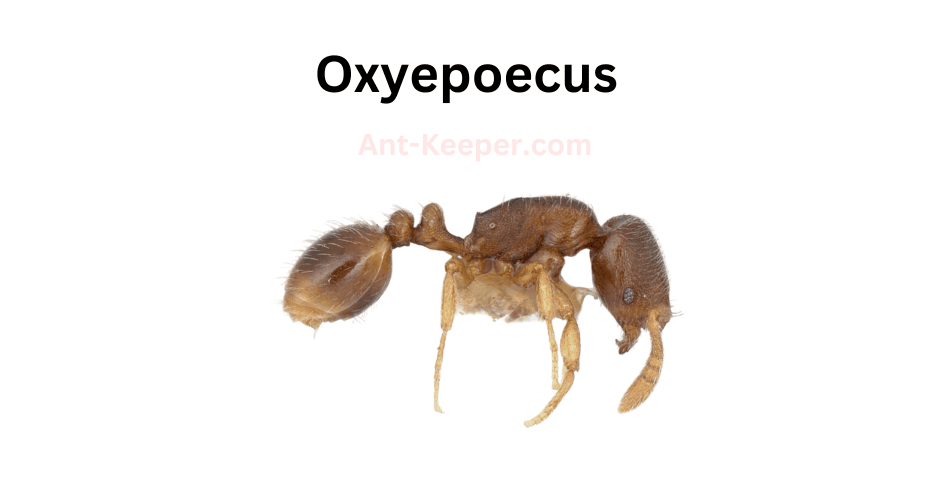
Oxyepoecusbe is a species of ant that belongs to the family Formicidae.
These ants are known for their unique physical characteristics, including their elongated mandibles and slender bodies.
They are typically found in tropical and subtropical regions, where they inhabit forested areas and build their nests in soil or leaf litter.
Oxyepoecusbe ants are social insects that live in colonies consisting of a queen, workers, and soldiers.
The queen is responsible for laying eggs, while the workers and soldiers are responsible for maintaining the nest and protecting it from predators.
These ants are known for their aggressive behavior and will defend their colony fiercely if threatened.
One of the most interesting aspects of Oxyepoecusbe ants is their diet.
These ants are omnivorous and will feed on a variety of foods, including insects, nectar, and plant sap.
They are also known to cultivate fungi within their nests, which they use as a food source.
Despite their small size, Oxyepoecusbe ants play an important role in their ecosystem.
They help to control insect populations and contribute to the nutrient cycling process by breaking down organic matter.
These ants are also an important food source for many other animals, including birds and reptiles.
Overall, Oxyepoecusbe ants are fascinating creatures that have adapted to thrive in their unique environments.
Their physical characteristics, social behavior, and dietary habits make them an important part of the ecosystem in which they live.
76) Pachycondyla
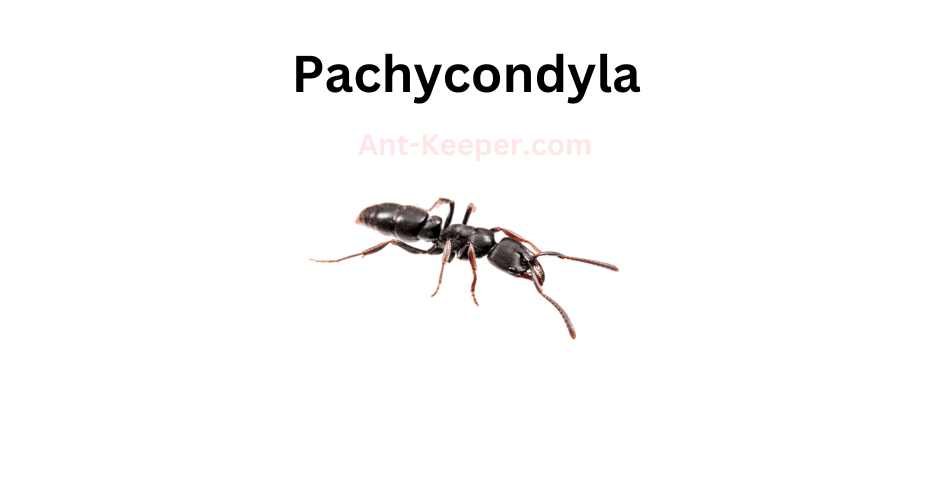
Pachycondylabe is a species of ant that belongs to the family Formicidae.
These ants are known for their large size and distinctive appearance.
They have a dark brown or black coloration and a robust body structure, which gives them a powerful and intimidating presence.
Pachycondylabe ants are primarily found in forested areas, where they build their nests in soil or leaf litter.
They are known to be aggressive and territorial, often engaging in battles with other ant species for resources and territory.
One of the most interesting features of Pachycondylabe ants is their ability to communicate through chemical signals.
They use pheromones to mark their trails and to signal danger or the presence of food to other members of their colony.
These ants are also known for their unique hunting strategies.
They are opportunistic predators, feeding on a variety of insects and other small animals.
They have been observed using their powerful mandibles to crush and dismember their prey before carrying it back to their nest.
Despite their intimidating appearance and aggressive behavior, Pachycondylabe ants play an important role in their ecosystem.
They help to control the populations of other insects and contribute to the nutrient cycling process by breaking down organic matter.
Overall, Pachycondylabe ants are a fascinating and important species that continue to intrigue scientists and nature enthusiasts alike.
77) Paraponera

Paraponerabe is a species of ant that belongs to the family of Formicidae.
These ants are known for their unique physical characteristics and behavior.
They are relatively large in size, with workers measuring up to 10mm in length.
The color of their bodies ranges from reddish-brown to black, and they have long, slender legs that allow them to move quickly and efficiently.
One of the most interesting aspects of Paraponerabe ants is their social behavior.
They live in small colonies, with each colony consisting of a queen, workers, and soldiers.
The queen is responsible for laying eggs, while the workers and soldiers are responsible for maintaining the colony and protecting it from predators.
Paraponerabe ants are also known for their aggressive behavior.
They are highly territorial and will defend their colony fiercely against any perceived threats.
Their soldiers have large mandibles that they use to attack and subdue their enemies.
Despite their aggressive behavior, Paraponerabe ants are also important members of their ecosystem.
They play a crucial role in maintaining the balance of their environment by controlling the populations of other insects and small animals.
Overall, Paraponerabe ants are fascinating creatures that have captured the attention of scientists and nature enthusiasts alike.
Their unique physical characteristics and behavior make them a valuable addition to the world of ants and the natural world as a whole.
78) Crazy Ants, Paratrechina

Crazy ants, also known as Nylanderia fulva, are a species of ant that belong to the family Formicidae.
They are small in size, measuring only about 2.2 to 3 mm in length, and are reddish-brown in color.
These ants are known for their erratic and unpredictable behavior, hence the name "crazy ants."
Crazy ants are native to South America, but have since spread to other parts of the world, including North America, Asia, and Australia.
They are highly adaptable and can thrive in a variety of environments, including urban areas, forests, and grasslands.
One of the most notable characteristics of crazy ants is their ability to form large colonies with multiple queens.
This allows them to quickly establish themselves in new areas and outcompete other ant species.
Crazy ants are also known for their aggressive behavior towards other insects and animals, including humans.
In addition to their aggressive behavior, crazy ants are also known for their ability to cause damage to electrical equipment.
They are attracted to electrical currents and can easily short-circuit electronics, causing damage and potentially starting fires.
Despite their small size, crazy ants are a formidable species that can have a significant impact on their environment.
As they continue to spread to new areas, it is important to monitor their behavior and take steps to control their populations in order to minimize their impact on ecosystems and human infrastructure.
79) Perissomyrmex

Perissomyrmex is a genus of ants belonging to the family Formicidae.
These ants are known for their unique morphology, which includes a long and slender body with elongated legs and antennae.
The genus is characterized by the presence of a single spine on the propodeum, which is a distinguishing feature from other ant genera.
Perissomyrmex ants are typically found in tropical and subtropical regions, where they inhabit a variety of habitats such as forests, grasslands, and savannas.
They are known to be active foragers, and their diet consists of a wide range of food sources including insects, nectar, and plant sap.
One interesting aspect of Perissomyrmex ants is their social behavior.
They are known to form small colonies with a few hundred individuals, and they exhibit a high degree of cooperation and division of labor.
The queen ant is responsible for laying eggs, while the workers are responsible for foraging, nest maintenance, and caring for the brood.
Despite their small size, Perissomyrmex ants play an important role in their ecosystem.
They are known to be important seed dispersers, and they also contribute to soil health through their activities.
Additionally, they serve as a food source for a variety of predators, including birds and other insects.
Overall, Perissomyrmex ants are a fascinating group of insects with unique morphology and interesting social behavior.
Their importance in their ecosystem highlights the need for continued research and conservation efforts to protect these important species.
80) Big Headed Ants, Pheidole

Big Headed Ants, also known as Pheidole megacephala, are a species of ant that belong to the family Formicidae.
These ants are known for their distinctive large heads, which are used for defense and communication within their colonies.
Big Headed Ants are typically found in tropical and subtropical regions, where they build their nests in soil, leaf litter, and other organic matter.
They are omnivorous, feeding on a variety of insects, seeds, and other small organisms.
One of the most interesting aspects of Big Headed Ants is their social behavior.
They live in large colonies, with a queen ant at the center of the hierarchy.
The queen is responsible for laying eggs, while the other ants in the colony perform various tasks such as foraging for food, caring for the young, and defending the colony from predators.
Big Headed Ants are also known for their ability to displace other ant species in their habitats.
They are aggressive and have been known to attack and kill other ants, as well as compete with them for resources.
Despite their aggressive behavior, Big Headed Ants are not considered a major pest species.
However, their ability to displace other ant species and their potential impact on native ecosystems make them an important species to study and monitor.
81) Platythyrea

Platythyreabe is a species of ant that belongs to the family Formicidae.
These ants are known for their unique physical characteristics, including their flattened bodies and elongated mandibles.
Platythyreabe ants are typically found in forested areas and are known to be active foragers, often hunting for small insects and other invertebrates.
One of the most interesting aspects of Platythyreabe ants is their social behavior.
These ants live in colonies that are typically composed of several hundred individuals.
Within these colonies, there is a strict hierarchy, with a single queen ant at the top.
The queen is responsible for laying eggs, while the other ants in the colony are responsible for caring for the young and maintaining the nest.
Platythyreabe ants are also known for their aggressive behavior.
When threatened, these ants will use their elongated mandibles to defend themselves and their colony.
They are also known to release a chemical signal that alerts other ants in the colony to the presence of a threat.
Despite their aggressive behavior, Platythyreabe ants play an important role in their ecosystem.
They help to control populations of small insects and other invertebrates, and they also serve as a food source for larger predators.
Overall, Platythyreabe ants are fascinating creatures that offer a unique glimpse into the complex world of social insects.
82) Typical American Harvester Ants, Pogonomyrmex
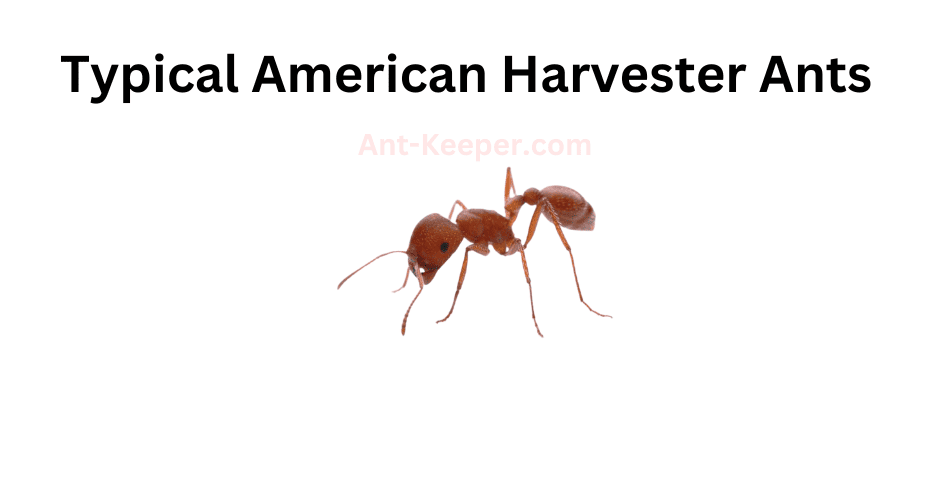
The typical American Harvester Ant (Pogonomyrmex spp.) is a species of ant that belongs to the family Formicidae.
These ants are commonly found in grasslands and deserts throughout North America.
They are known for their impressive ability to harvest and store seeds, which they use as a primary food source.
The American Harvester Ant is a medium-sized ant, with workers ranging in size from 4 to 8 mm in length.
They have a distinctive reddish-brown coloration and a large head with powerful mandibles.
These ants are highly social and live in large colonies, with a single queen responsible for laying eggs and producing new workers.
One of the most notable characteristics of the American Harvester Ant is their impressive seed harvesting behavior.
These ants use their powerful mandibles to cut and collect seeds from nearby plants, which they then carry back to their nest.
Once inside the nest, the ants store the seeds in underground chambers, where they can be accessed as needed.
In addition to their seed harvesting behavior, American Harvester Ants are also known for their aggressive defense of their nests.
These ants will fiercely defend their colony against any perceived threat, using their powerful mandibles to bite and sting intruders.
Overall, the American Harvester Ant is a fascinating species of ant with unique behaviors and adaptations that allow them to thrive in their native habitats.
Their impressive seed harvesting abilities and aggressive defense strategies make them an important part of many North American ecosystems.
83) Winter Ants, Prenolepis

Winter ants, also known as Formica exsectoides, are a species of ant that are commonly found in temperate regions.
These ants are known for their ability to survive harsh winter conditions, which is where they get their name from.
Winter ants are typically black or dark brown in color and can range in size from 4 to 8 millimeters in length.
They are social insects and live in large colonies that can contain thousands of individuals.
These colonies are typically located underground, where the ants construct elaborate tunnels and chambers.
One of the most interesting things about winter ants is their ability to survive the cold winter months.
Unlike many other ant species, winter ants do not hibernate during the winter.
Instead, they have developed a number of adaptations that allow them to survive in the cold.
One of these adaptations is the ability to regulate their body temperature.
Winter ants are able to generate heat by shivering their muscles, which allows them to maintain a temperature of around 25 degrees Celsius even when the outside temperature drops below freezing.
Winter ants also have a unique diet that helps them survive the winter.
They feed on the honeydew produced by aphids, which is a sugary substance that provides them with the energy they need to survive.
Overall, winter ants are a fascinating species of ant that have adapted to survive in some of the harshest conditions on earth.
Their ability to regulate their body temperature and feed on a unique diet make them a truly remarkable species.
84) Prionopelta
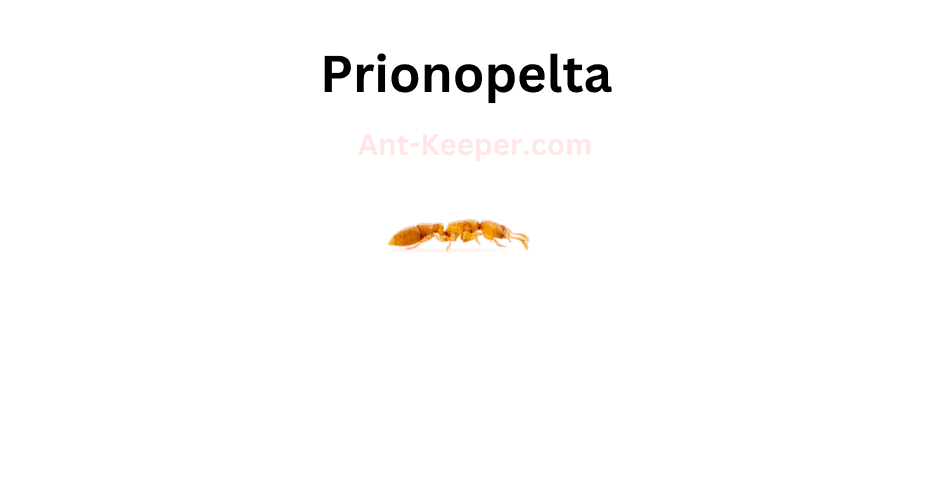
Prionopeltabe is a species of ant that belongs to the family Formicidae.
These ants are known for their unique physical characteristics and behavior.
They have a dark brown or black body with a shiny exoskeleton.
Their head is elongated and narrow, with large mandibles that are used for hunting and defense.
The workers of this species are small, measuring only a few millimeters in length, while the queen can grow up to 10 millimeters.
Prionopeltabe ants are known for their aggressive behavior and are often found in large colonies.
They are omnivorous and feed on a variety of food sources, including insects, fruits, and nectar.
These ants are also known to farm aphids for their honeydew, which they use as a food source.
One of the most interesting aspects of Prionopeltabe ants is their unique nesting behavior.
They build their nests in the soil, but instead of creating a single entrance, they create multiple entrances that lead to a central chamber.
This allows the ants to quickly move from one area of the nest to another, making it easier for them to defend their colony from predators.
Overall, Prionopeltabe ants are fascinating creatures that play an important role in their ecosystem.
Their aggressive behavior and unique nesting habits make them a valuable subject of study for scientists and researchers.
85) Probolomyrmex
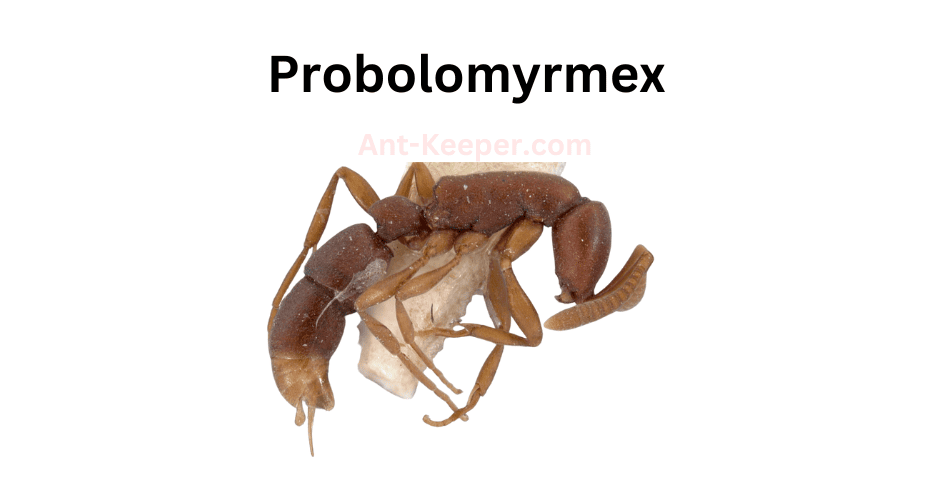
Probolomyrmex is a genus of ants that belongs to the subfamily Proceratiinae.
These ants are known for their unique morphology, which includes a long and slender body, a narrow head, and elongated mandibles.
The genus is characterized by the presence of a distinct petiole, which separates the thorax and the abdomen.
Probolomyrmex ants are typically found in tropical and subtropical regions, where they inhabit a variety of habitats, including forests, grasslands, and deserts.
They are known to be highly aggressive and territorial, often engaging in fierce battles with other ant species.
One of the most interesting aspects of Probolomyrmex ants is their social behavior.
These ants are known to be highly organized, with a well-defined caste system that includes workers, soldiers, and reproductive individuals.
The workers are responsible for foraging, nest maintenance, and caring for the young, while the soldiers defend the colony against predators and other threats.
Despite their small size, Probolomyrmex ants play an important role in their ecosystem.
They are known to be efficient predators, feeding on a variety of insects and other small invertebrates.
They also help to aerate the soil and distribute nutrients, which can have a positive impact on plant growth.
Overall, Probolomyrmex ants are a fascinating and important group of insects that are worthy of further study and conservation efforts.
86) Hairy Curltail Ants, Proceratium

The Hairy Curltail Ant (Camponotus pilicornis) is a species of ant belonging to the genus Camponotus.
These ants are known for their distinctive hairy appearance, which covers their entire body.
The hairs on their body are long and curly, giving them a unique and striking appearance.
Hairy Curltail Ants are typically found in forested areas, where they build their nests in dead wood or under rocks.
They are known to be highly territorial and will aggressively defend their nests against intruders.
These ants are also known to be omnivorous, feeding on a variety of food sources including insects, nectar, and honeydew.
The Hairy Curltail Ant is a relatively large ant species, with workers measuring between 6-12mm in length.
The queen ant is even larger, measuring up to 15mm in length.
These ants are also known for their strong mandibles, which they use to defend their nests and capture prey.
One interesting aspect of the Hairy Curltail Ant is their ability to communicate with each other through the use of pheromones.
These chemical signals are used to mark trails, identify nestmates, and coordinate foraging activities.
Overall, the Hairy Curltail Ant is a fascinating species of ant with a unique appearance and interesting behaviors.
Their presence in forested areas can have important ecological implications, as they play a role in the ecosystem as both predators and scavengers.
87) Procryptocerus

Procryptocerus is a genus of ants that belongs to the family Formicidae.
These ants are known for their unique physical characteristics, including their elongated mandibles and slender bodies.
The genus Procryptocerus is comprised of several species, each with their own distinct features and behaviors.
One of the most notable species within the Procryptocerus genus is Procryptocerus insinuator.
These ants are typically found in tropical regions and are known for their aggressive behavior.
They are also known for their ability to construct elaborate nests, which are often built in trees or other elevated locations.
Procryptocerus insinuator ants are omnivorous, meaning that they consume both plant and animal matter.
They are also known to engage in trophallaxis, a behavior in which food is shared among members of the colony through regurgitation.
In addition to their physical and behavioral characteristics, Procryptocerus insinuator ants are also of interest to researchers due to their potential medicinal properties.
Studies have shown that these ants produce compounds that have antimicrobial and anti-inflammatory properties, which could have potential applications in the development of new drugs.
Overall, the Procryptocerus genus is a fascinating group of ants that continue to intrigue scientists and researchers alike.
Their unique physical characteristics, behaviors, and potential medicinal properties make them a valuable subject of study in the field of entomology.
88) Protalaridris
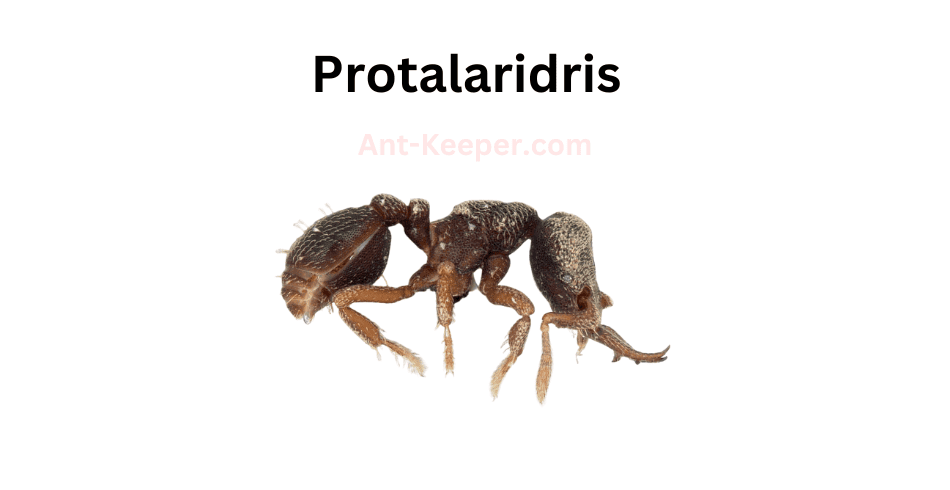
Protalaridrisbe is a species of ant that belongs to the family Formicidae.
These ants are small in size, measuring only a few millimeters in length.
They are known for their unique physical characteristics, including their elongated mandibles and slender bodies.
Protalaridrisbe ants are typically found in forested areas, where they live in small colonies.
They are known for their aggressive behavior and will defend their territory fiercely against other ant species.
These ants are also known for their ability to climb trees and other vertical surfaces, which allows them to forage for food in a variety of different environments.
One of the most interesting aspects of Protalaridrisbe ants is their reproductive behavior.
Unlike many other ant species, these ants do not have a queen.
Instead, they rely on a system of multiple reproductive females, known as gamergates, to produce offspring.
These gamergates are able to mate with males and lay eggs, ensuring the survival of the colony.
Overall, Protalaridrisbe ants are a fascinating species that have adapted to thrive in a variety of different environments.
Their unique physical characteristics and reproductive behavior make them a subject of interest for researchers and ant enthusiasts alike.
89) Twig Ants, Pseudomyrmex

Twig ants, also known as twig-dwelling ants, are a species of ants that are commonly found living on twigs and branches of trees.
They belong to the family Formicidae and are known for their unique nesting behavior.
Twig ants are small in size, measuring only a few millimeters in length.
They have a slender body and long legs that help them move around easily on the twigs.
Their color varies from light brown to dark brown, and they have a shiny exoskeleton.
These ants are social insects and live in colonies that can range from a few dozen to several hundred individuals.
They have a queen ant that lays eggs and is responsible for the growth and survival of the colony.
The workers, which are sterile females, are responsible for foraging for food, caring for the young, and defending the colony.
Twig ants are omnivores and feed on a variety of food sources, including insects, nectar, and honeydew.
They are also known to tend to aphids and other insects that produce honeydew, which they use as a food source.
One of the most interesting aspects of twig ants is their nesting behavior.
They build their nests on twigs and branches of trees, using materials such as plant fibers, soil, and debris.
The nests are often camouflaged to blend in with the surrounding environment, making them difficult to spot.
Twig ants are an important part of the ecosystem, as they help to control the population of other insects and contribute to the nutrient cycling process.
They are also used in scientific research to study social behavior and communication in insects.
90) Pseudoponera
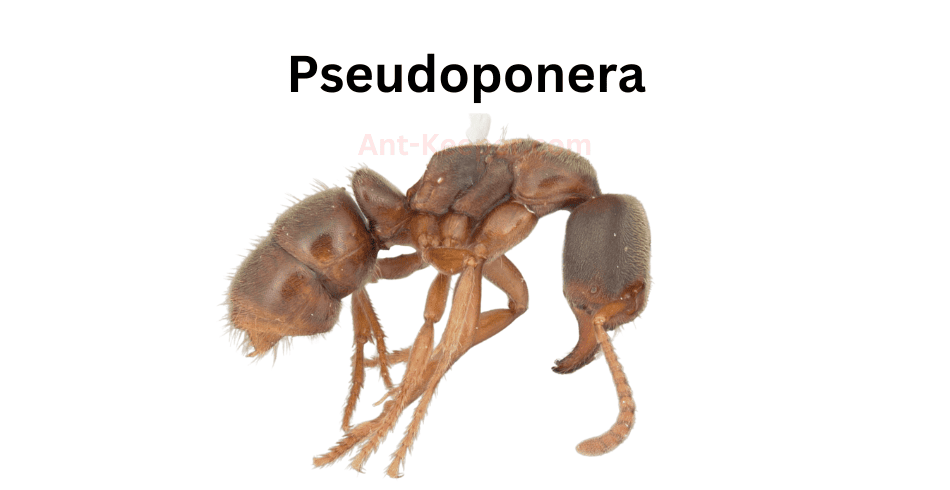
Pseudoponerabe is a species of ant that belongs to the family Formicidae.
These ants are known for their unique physical characteristics and behavior.
They are small in size, measuring only a few millimeters in length, and have a dark brown or black coloration.
One of the most distinctive features of Pseudoponerabe ants is their elongated mandibles.
These mandibles are used for a variety of tasks, including hunting, defense, and nest building.
The ants are also known for their aggressive behavior, and will not hesitate to attack other insects or animals that they perceive as a threat.
Pseudoponerabe ants are typically found in forested areas, where they build their nests in the soil or in decaying wood.
They are omnivorous, feeding on a variety of insects, fruits, and seeds.
The ants are also known to engage in trophallaxis, a behavior in which they exchange food with other members of their colony.
Like many other ant species, Pseudoponerabe ants have a complex social structure.
They live in colonies that can contain thousands of individuals, with each ant having a specific role to play in the colony's survival.
The queen ant is responsible for laying eggs, while the worker ants are responsible for foraging, nest building, and caring for the young.
Overall, Pseudoponerabe ants are fascinating creatures that play an important role in their ecosystem.
Their unique physical characteristics and behavior make them a fascinating subject for study, and their presence in forested areas helps to maintain the delicate balance of nature.
91) Ponerine Ants, Pseudoponera

Ponerine ants are a diverse group of ants belonging to the subfamily Ponerinae.
They are found in various habitats, including forests, grasslands, and deserts, and are known for their aggressive behavior and powerful stings.
Ponerine ants are typically medium to large in size, with workers ranging from 3 to 15 millimeters in length.
They have a distinctive appearance, with elongated bodies and long, curved mandibles that they use to capture prey and defend their colonies.
These ants are solitary hunters, and their diet consists mainly of other insects, spiders, and small invertebrates.
They are also known to scavenge on carrion and plant nectar.
Ponerine ants are highly territorial and will aggressively defend their nests against intruders.
They are known for their painful stings, which can cause swelling and discomfort in humans.
Despite their aggressive behavior, ponerine ants play an important role in their ecosystems.
They help to control populations of other insects and contribute to soil health through their nest-building activities.
Overall, ponerine ants are a fascinating and important group of ants that play a vital role in many ecosystems around the world.
92) Rasopone
Rasoponebe is a species of ant that belongs to the genus Rasopone.
These ants are known for their small size and dark brown coloration.
They are typically found in forested areas and are known to be highly aggressive towards other ant species.
Rasoponebe ants are social insects that live in colonies.
The colonies are usually small, with only a few hundred individuals.
The queen ant is responsible for laying eggs, while the worker ants are responsible for foraging for food and caring for the young.
One interesting aspect of Rasoponebe ants is their ability to use chemical signals to communicate with each other.
They use pheromones to mark trails and to identify members of their own colony.
This helps them to navigate their environment and to find food sources.
Rasoponebe ants are also known for their aggressive behavior towards other ant species.
They will often attack and kill ants from other colonies, and will even invade and take over the nests of other ant species.
Overall, Rasoponebe ants are fascinating creatures that play an important role in their ecosystem.
Their aggressive behavior and ability to communicate with each other make them a unique and interesting species to study.
93) Rhopalothrix
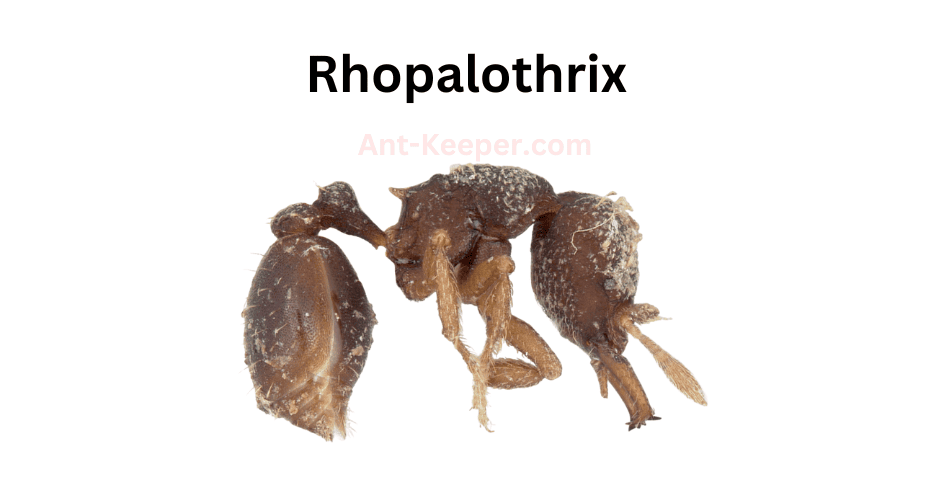
Rhopalothrix is a genus of ants belonging to the family Formicidae.
These ants are known for their unique morphology and behavior.
The workers of Rhopalothrix are small in size, measuring between 2-4 mm in length.
They have a distinct head shape, with a narrow and elongated head that is wider at the base.
The antennae of Rhopalothrix are also elongated and have a distinct club-like shape at the end.
Rhopalothrix ants are known for their cryptic behavior.
They are often found living in small colonies in the leaf litter or soil.
These ants are also known for their specialized diet, which consists of small arthropods such as mites and springtails.
Rhopalothrix ants have been observed using their elongated heads to probe into small crevices and cracks in the soil to capture their prey.
One of the most interesting aspects of Rhopalothrix ants is their reproductive behavior.
Unlike most ants, Rhopalothrix colonies are often headed by a single queen.
However, in some species, multiple queens may be present in a colony.
These queens are known to engage in a behavior called "pleometrosis," where they work together to establish a new colony.
This behavior is rare in ants and is thought to be an adaptation to living in harsh environments.
Overall, Rhopalothrix ants are a fascinating group of insects with unique morphology and behavior.
Their specialized diet and reproductive behavior make them an important subject of study for entomologists and ecologists alike.
94) Rogeria

The Rogeriabe ant is a fascinating species that belongs to the Formicidae family.
These ants are known for their unique physical characteristics and behavior patterns that set them apart from other ant species.
One of the most distinctive features of the Rogeriabe ant is its size.
These ants are relatively small, measuring only a few millimeters in length.
However, what they lack in size, they make up for in strength and agility.
Rogeriabe ants are incredibly fast and can move quickly over a variety of terrains.
Another notable characteristic of the Rogeriabe ant is its coloration.
These ants have a dark brown or black body with reddish-brown legs and antennae.
This coloration helps them blend in with their surroundings and avoid detection by predators.
In terms of behavior, Rogeriabe ants are highly social creatures that live in large colonies.
These colonies can contain thousands of individual ants, each with a specific role to play in the group.
Some ants are responsible for foraging for food, while others care for the young or defend the colony from predators.
Overall, the Rogeriabe ant is a fascinating species that has much to teach us about the natural world.
Its unique physical characteristics and behavior patterns make it a valuable subject of study for scientists and researchers around the world.
95) Sericomyrmex

Sericomyrmex is a genus of ants that belongs to the subfamily Myrmicinae.
These ants are known for their unique symbiotic relationship with fungi, which they cultivate in underground gardens.
The ants feed on the fungus, and in turn, the fungus benefits from the ants' care and protection.
Sericomyrmex ants are small in size, with workers measuring between 2 and 4 millimeters in length.
They have a distinctive appearance, with elongated heads and mandibles that are adapted for cutting and carrying plant material.
The ants are typically reddish-brown in color, with some species having darker or lighter markings on their bodies.
One of the most interesting aspects of Sericomyrmex ants is their social structure.
These ants live in large colonies that can contain thousands of individuals.
The colony is headed by a queen, who is responsible for laying eggs and maintaining the population.
Workers are responsible for foraging for food, caring for the young, and tending to the fungus gardens.
Sericomyrmex ants are found in a variety of habitats, including forests, grasslands, and deserts.
They are most commonly found in tropical and subtropical regions, where the climate is warm and humid.
These ants play an important role in their ecosystems, as they help to break down plant material and recycle nutrients.
Overall, Sericomyrmex ants are fascinating creatures that have evolved unique adaptations to survive in their environments.
Their symbiotic relationship with fungi is a testament to the complex interactions that occur in nature, and studying these ants can provide valuable insights into the workings of ecosystems.
96) Simopelta
Simopelta is a genus of ants that belongs to the subfamily Ponerinae.
These ants are known for their unique morphology and behavior.
They are small in size, measuring around 2-3 mm in length, and have a dark brown or black coloration.
The head of Simopelta ants is elongated and narrow, with large mandibles that are used for hunting and defense.
Simopelta ants are primarily found in tropical and subtropical regions, where they inhabit forested areas and leaf litter.
They are known to be arboreal, meaning they live in trees and are often found nesting in hollow branches or twigs.
These ants are also known to be highly aggressive and territorial, often engaging in battles with other ant species.
One of the most interesting aspects of Simopelta ants is their unique relationship with other ant species.
They are known to be obligate social parasites, meaning they rely on other ant species for survival.
Simopelta ants invade the nests of other ant species and take over, using the host ants as a source of food and labor.
In some cases, Simopelta ants have been known to completely replace the host ant colony with their own.
Despite their parasitic behavior, Simopelta ants play an important role in their ecosystem.
They help to control the population of other ant species and contribute to nutrient cycling in forested areas.
Overall, Simopelta ants are fascinating creatures that continue to intrigue scientists and ant enthusiasts alike.
97) Fire Ants, Solenopsis

Fire ants are a type of ant that belongs to the Solenopsis genus.
They are known for their reddish-brown color and their aggressive behavior.
Fire ants are social insects that live in colonies, which can range in size from a few hundred to several thousand individuals.
Fire ants are omnivorous and feed on a variety of foods, including insects, seeds, and other small animals.
They are also known to scavenge for food and will often invade other ant colonies to steal their resources.
One of the most distinctive features of fire ants is their ability to sting.
They have a stinger located at the end of their abdomen, which they use to inject venom into their prey or enemies.
Fire ant stings can be painful and can cause an allergic reaction in some people.
Fire ants are also known for their ability to build large mounds, which can reach heights of up to 18 inches.
These mounds are made of soil and are used as a nesting site for the colony.
Fire ants are considered to be an invasive species in many parts of the world, as they can cause damage to crops and wildlife.
They are also a nuisance to humans, as their stings can be painful and their mounds can be unsightly.
Overall, fire ants are fascinating insects that have adapted to thrive in a variety of environments.
While they can be a nuisance, they are an important part of the ecosystem and play a vital role in controlling insect populations.
98) Sphinctomyrmex

Sphinctomyrmex is a genus of ants that belongs to the subfamily Myrmicinae.
These ants are known for their unique morphology, which includes a distinct constriction between the thorax and abdomen, giving them their common name of "waist ants."
Sphinctomyrmex ants are relatively small, with workers measuring between 2-5mm in length.
They are typically reddish-brown in color, with a shiny exoskeleton.
These ants are known for their aggressive behavior, and will readily defend their nests against intruders.
One of the most interesting aspects of Sphinctomyrmex ants is their reproductive strategy.
Unlike many other ant species, Sphinctomyrmex queens do not mate with multiple males.
Instead, they mate with a single male and store his sperm in a specialized organ called the spermatheca.
This allows the queen to produce offspring with a high degree of relatedness, which may confer certain advantages in terms of colony cohesion and cooperation.
Sphinctomyrmex ants are found in a variety of habitats, including forests, grasslands, and deserts.
They are known to forage on the ground and in the understory, and will feed on a variety of food sources, including insects, nectar, and honeydew.
Overall, Sphinctomyrmex ants are a fascinating group of insects that exhibit a number of unique traits and behaviors.
Their distinctive morphology, aggressive behavior, and unusual reproductive strategy make them a subject of interest for researchers and ant enthusiasts alike.
99) Stegomyrmex
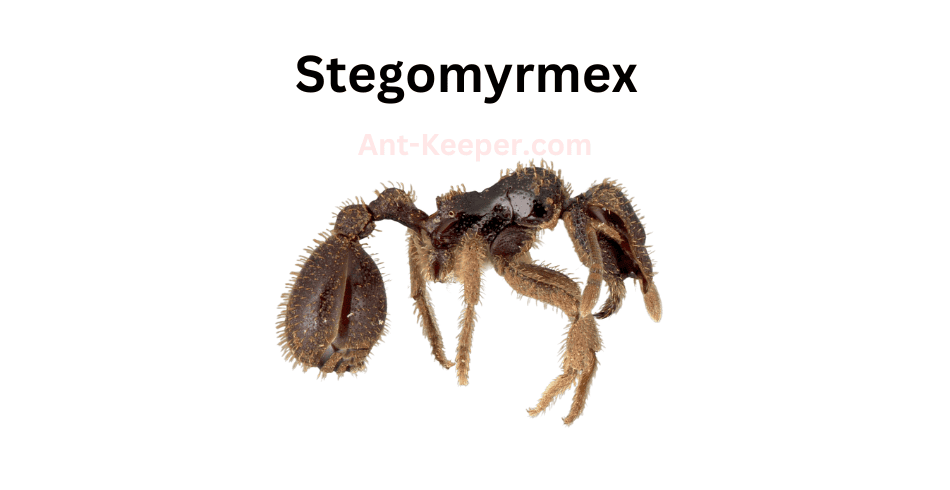
Stegomyrmex is a genus of ants that belongs to the subfamily Myrmicinae.
The ants in this genus are small in size, measuring between 2 to 5 millimeters in length.
They are known for their unique morphology, which includes a distinctively shaped petiole and postpetiole.
The petiole is elongated and has a flattened top, while the postpetiole is rounded and has a distinct constriction between it and the gaster.
Stegomyrmex ants are typically found in arid and semi-arid regions, where they nest in sandy soils or under rocks.
They are known to be aggressive and territorial, and will defend their nests against intruders.
These ants are omnivorous, feeding on a variety of food sources including insects, seeds, and nectar.
One species of Stegomyrmex, Stegomyrmexplutonis, is known for its unique behavior of raiding the nests of other ant species and stealing their brood.
This behavior is thought to be a strategy for acquiring new workers and increasing the size of their own colony.
Stegomyrmex ants are important members of their ecosystems, playing a role in seed dispersal and soil aeration.
They are also used as model organisms in studies of ant behavior and ecology.
100) Leaf-Litter Ants, Stenamma

Leaf-litter ants are a group of ants that are commonly found in forested areas around the world.
They are known for their ability to live and forage in the leaf litter layer of the forest floor, where they play an important role in nutrient cycling and soil health.
Leaf-litter ants are typically small in size, ranging from 1-5mm in length.
They are often reddish-brown or black in color, and have a slender, elongated body shape.
These ants are social insects, living in colonies that can range in size from a few dozen to several thousand individuals.
One of the key characteristics of leaf-litter ants is their ability to forage for food in the leaf litter layer.
They are known to feed on a variety of organic matter, including dead insects, fungi, and plant material.
Leaf-litter ants are also important decomposers, breaking down organic matter and returning nutrients to the soil.
In addition to their role in nutrient cycling, leaf-litter ants also play an important role in the ecosystem as prey for other animals.
They are a food source for a variety of predators, including birds, reptiles, and other insects.
Overall, leaf-litter ants are an important and fascinating group of insects that play a critical role in maintaining the health and functioning of forest ecosystems around the world.
101) Vampire Ants, Stigmatomma
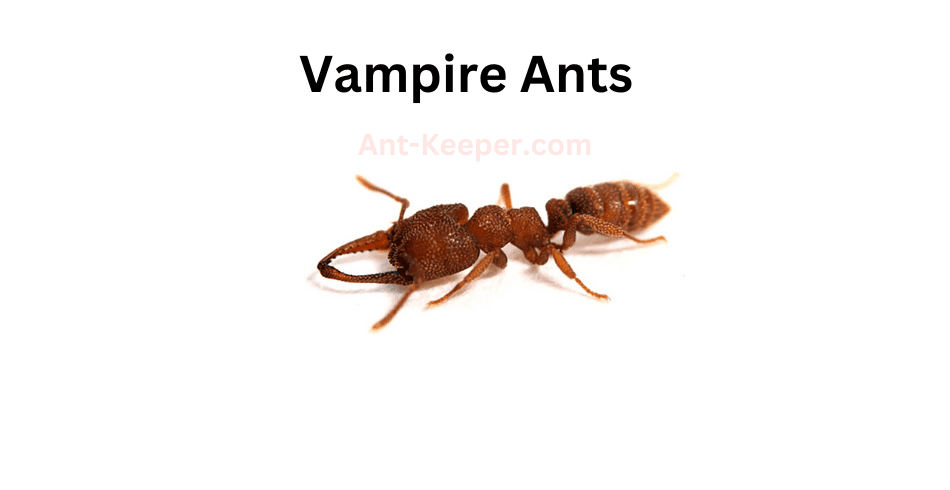
Vampire ants, also known as blood-sucking ants, are a species of ants that feed on the blood of other insects.
These ants are known for their unique feeding behavior, which involves biting into the exoskeleton of their prey and then sucking out their blood.
Vampire ants are typically found in tropical and subtropical regions, where they live in colonies of up to several thousand individuals.
They are known for their aggressive behavior and will attack other insects, including larger prey such as grasshoppers and caterpillars.
One of the most interesting aspects of vampire ants is their ability to adapt to their environment.
In some cases, these ants have been known to feed on the blood of their own colony members when other sources of food are scarce.
Vampire ants are also known for their unique physical characteristics.
They have long, curved mandibles that are used to bite into the exoskeleton of their prey.
They also have specialized mouthparts that allow them to suck out the blood of their victims.
Despite their aggressive behavior and blood-sucking tendencies, vampire ants play an important role in their ecosystem.
They help to control the populations of other insects and contribute to the overall balance of their environment.
Overall, vampire ants are a fascinating species of ants that have adapted to their environment in unique and interesting ways.
Their behavior and physical characteristics make them a subject of interest for scientists and nature enthusiasts alike.
102) Miniature Trap-Jaw Ants, Strumigenys

The Miniature Trap-Jaw Ants, scientifically known as Odontomachus sp., are a species of ants that belong to the family Formicidae.
These ants are known for their unique and powerful mandibles, which they use to capture prey and defend their colonies.
The Miniature Trap-Jaw Ants are relatively small in size, measuring only a few millimeters in length.
They have a dark brown or black coloration and a slender body shape.
Their most distinctive feature is their mandibles, which are elongated and can snap shut with incredible force.
These mandibles are used to capture prey, crush seeds, and defend the colony against predators.
The Miniature Trap-Jaw Ants are found in a variety of habitats, including forests, grasslands, and deserts.
They are known to be active during the day and are often seen foraging for food.
These ants are omnivorous and feed on a variety of food sources, including insects, nectar, and seeds.
The Miniature Trap-Jaw Ants are social insects and live in colonies that can range in size from a few dozen to several thousand individuals.
The colony is typically led by a queen, who is responsible for laying eggs and maintaining the colony's population.
The workers are responsible for foraging, caring for the young, and defending the colony.
Overall, the Miniature Trap-Jaw Ants are fascinating insects that have evolved unique adaptations to survive in their environment.
Their powerful mandibles and social behavior make them an important part of many ecosystems.
103) Talaridris
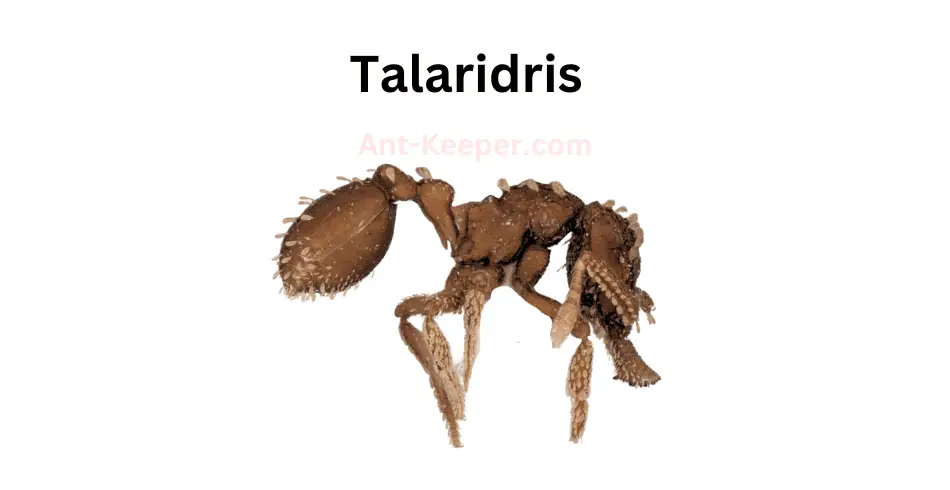
Talaridrisbe is a species of ant that belongs to the Formicidae family.
These ants are small in size, measuring only a few millimeters in length.
They are known for their distinctive black coloration and their ability to form large colonies.
Talaridrisbe ants are typically found in forested areas, where they build their nests in soil or leaf litter.
They are omnivorous, feeding on a variety of insects, fruits, and seeds.
These ants are also known to tend to aphids, which they use for their honeydew.
One of the most interesting aspects of Talaridrisbe ants is their social behavior.
They live in large colonies that are organized into a hierarchical structure.
The queen ant is the largest member of the colony and is responsible for laying eggs.
The worker ants, which make up the majority of the colony, are responsible for foraging, caring for the young, and defending the colony.
Talaridrisbe ants are also known for their ability to communicate with each other through chemical signals.
They use pheromones to mark trails and to signal danger or the presence of food.
Overall, Talaridrisbe ants are fascinating creatures that play an important role in their ecosystem.
Their social behavior and communication methods make them a subject of interest for scientists studying animal behavior and communication.
104) Tapinoma

Tapinoma is a genus of ants that belongs to the family Formicidae.
The species Tapinoma is a small ant that measures about 2-3 mm in length.
They are commonly found in urban and suburban areas, and are known to invade homes and buildings in search of food and shelter.
Tapinoma ants are light brown in color and have a slender body with long legs.
They have a distinctively shaped head that is wider than their thorax, and they possess a pair of antennae that are bent at a right angle.
These ants are known for their ability to form large colonies, which can consist of thousands of individuals.
Tapinoma ants are omnivorous and feed on a variety of food sources, including insects, nectar, and honeydew.
They are also known to scavenge for food in garbage cans and other waste areas.
These ants are attracted to sweet and sugary substances, and will often invade kitchens and pantries in search of food.
Tapinoma ants are not known to be aggressive towards humans, but they can become a nuisance when they invade homes and buildings.
They are known to build their nests in wall voids, under floors, and in other hidden areas.
If left unchecked, these ants can cause damage to structures and can contaminate food sources.
Overall, Tapinoma ants are a common pest in many parts of the world.
While they are not harmful to humans, they can be a nuisance when they invade homes and buildings.
Proper pest control measures can help to prevent infestations and keep these ants at bay.
105) Tatuidris
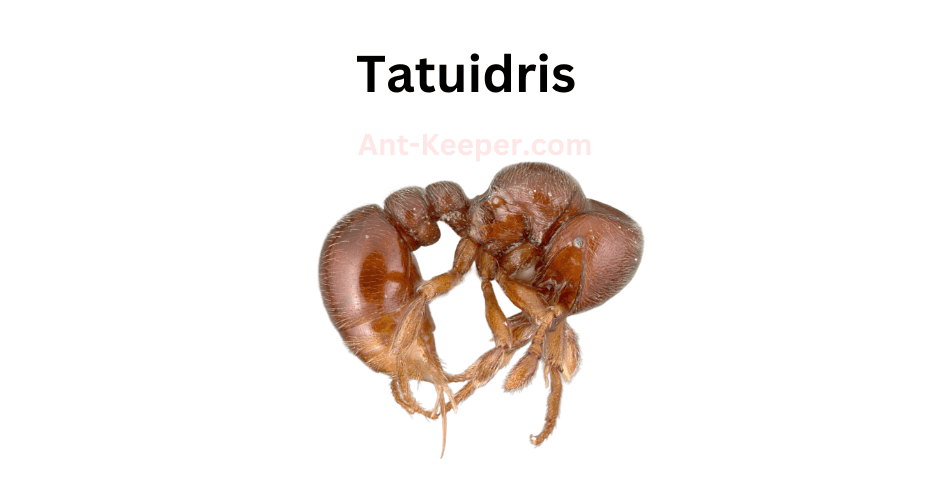
Tatuidrisbe is a species of ant that belongs to the family of Mutillidae.
These ants are commonly known as velvet ants due to their dense and hairy bodies.
The females of this species are wingless and have a bright red and black coloration, while the males have wings and are black in color.
Tatuidrisbe ants are solitary and are often found in sandy or rocky habitats.
They are known to be parasitic and lay their eggs in the nests of other ant species.
The larvae of Tatuidrisbe feed on the eggs and larvae of the host ants, eventually killing them.
These ants are also known for their painful sting, which is why they are sometimes referred to as cow killers.
The sting of Tatuidrisbe ants is not fatal to humans, but it can cause intense pain and swelling.
Despite their aggressive behavior, Tatuidrisbe ants play an important role in their ecosystem.
They help control the population of other ant species and contribute to the overall balance of their habitat.
Overall, Tatuidrisbe ants are fascinating creatures with unique characteristics and behaviors.
Their bright coloration, parasitic nature, and painful sting make them a memorable species in the world of ants.
106) Pale-Footed Ants, Technomyrmex
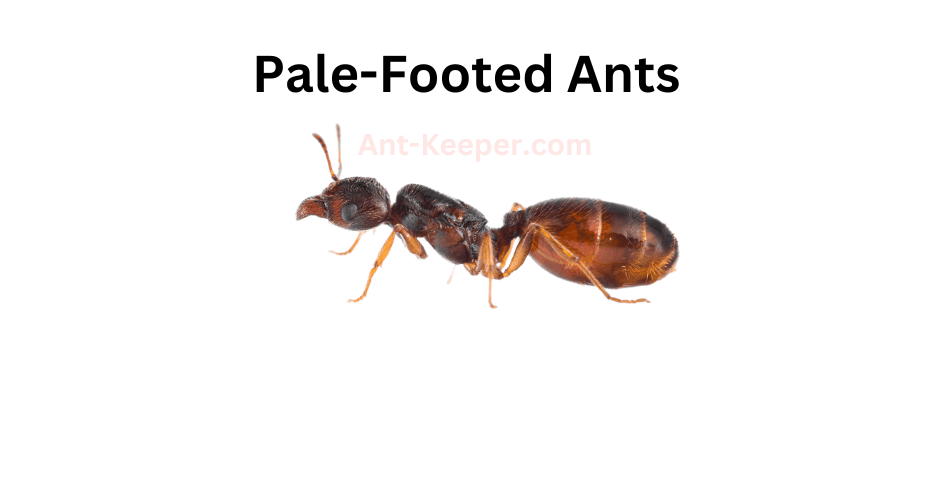
Pale-Footed Ants, also known as Pheidole pallidula, are a species of ant belonging to the family Formicidae.
These ants are typically small in size, measuring around 2-3mm in length, and are characterized by their pale yellowish-brown coloration and distinctive pale-colored feet.
Pale-Footed Ants are known for their highly organized social structure, which is divided into different castes including workers, soldiers, and reproductive individuals.
Workers are responsible for foraging for food, caring for the young, and maintaining the nest, while soldiers are tasked with defending the colony from predators and other threats.
One of the most interesting aspects of Pale-Footed Ant behavior is their ability to engage in "tandem running," a process in which two ants run together, with the follower using its antennae to track the movements of the leader.
This behavior is thought to help the ants navigate their environment more efficiently and locate food sources more quickly.
Pale-Footed Ants are also known for their unique feeding habits, which include a preference for sweet liquids such as nectar and honeydew.
They are also known to engage in trophallaxis, a process in which food is shared between members of the colony through mouth-to-mouth transfer.
Overall, Pale-Footed Ants are a fascinating species with a complex social structure and unique behaviors.
Their small size and inconspicuous appearance make them easy to overlook, but their importance in maintaining ecological balance and contributing to the overall health of their ecosystem should not be underestimated.
107) Slave-Making Ants, Temnothorax

The Slave-Making Ants, also known as Dulosis ants, are a group of social insects that engage in a unique behavior of raiding and enslaving other ant colonies.
These ants belong to the subfamily Formicinae and are found in various parts of the world.
The Slave-Making Ants have a complex social structure, with a queen, workers, and soldiers.
The queen is responsible for laying eggs, while the workers and soldiers carry out various tasks such as foraging, nest building, and defense.
However, unlike other ant species, the Slave-Making Ants do not rely solely on their own colony for survival.
Instead, these ants raid nearby colonies of other ant species, using their superior strength and numbers to overpower the defenders.
The Slave-Making Ants then carry off the pupae of the conquered colony back to their own nest.
Once the pupae hatch, they are raised by the Slave-Making Ants and forced to work as slaves for the colony.
The Slave-Making Ants have evolved a number of adaptations to facilitate their slave-raiding behavior.
For example, they have a highly developed sense of smell, which allows them to locate and target specific ant colonies.
They also have strong mandibles and powerful stingers, which they use to subdue their prey.
Despite their aggressive behavior, the Slave-Making Ants play an important role in their ecosystem.
By raiding other ant colonies, they help to control the population of competing ant species.
Additionally, the enslaved ants provide a source of food and labor for the Slave-Making Ants, allowing them to thrive in environments where resources are scarce.
Overall, the Slave-Making Ants are a fascinating and unique species of ant, with a complex social structure and a highly specialized behavior.
While their slave-raiding behavior may seem cruel, it is an important part of their survival strategy and has helped them to thrive in a variety of environments.
108) Pavement Ants, Tetramorium
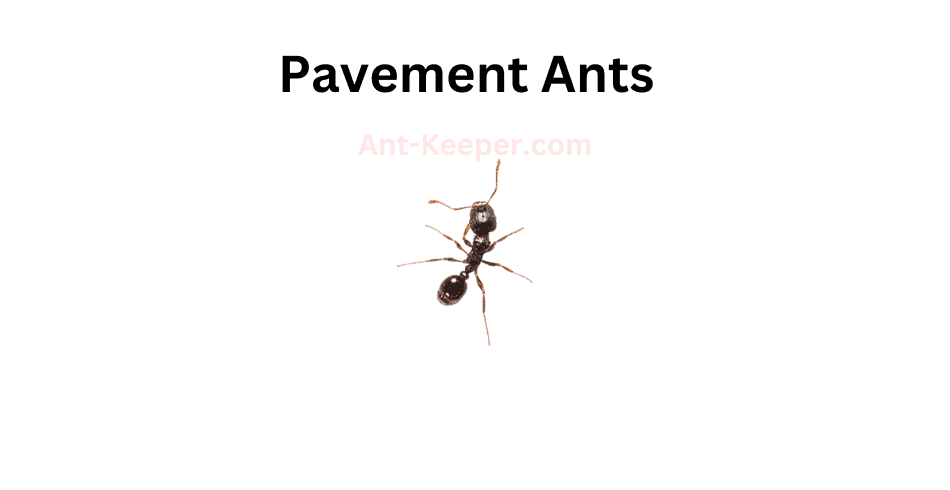
Pavement ants, also known as Tetramorium caespitum, are a species of ant that belong to the family Formicidae.
These ants are commonly found in urban and suburban areas, where they build their nests in cracks and crevices in pavement, sidewalks, and buildings.
Pavement ants are small in size, measuring between 2.5 to 4 mm in length.
They are typically dark brown or black in color, with lighter colored legs and antennae.
These ants are known for their aggressive behavior and will defend their nests fiercely against intruders.
Pavement ants are omnivorous, feeding on a variety of foods including insects, seeds, and sweet substances such as honeydew and nectar.
They are also known to scavenge for food in garbage cans and other waste areas.
Pavement ants are social insects, living in colonies that can range in size from a few hundred to several thousand individuals.
The colony is typically led by a queen ant, who is responsible for laying eggs and maintaining the colony.
Pavement ants are considered a nuisance pest, as they can invade homes and buildings in search of food and shelter.
They are also known to cause damage to pavement and other structures by excavating soil and creating tunnels.
Overall, pavement ants are a common and adaptable species of ant that play an important role in urban ecosystems.
While they may be a nuisance to humans, they are an important food source for many other animals and help to maintain the balance of the ecosystem.
109) Thaumatomyrmex
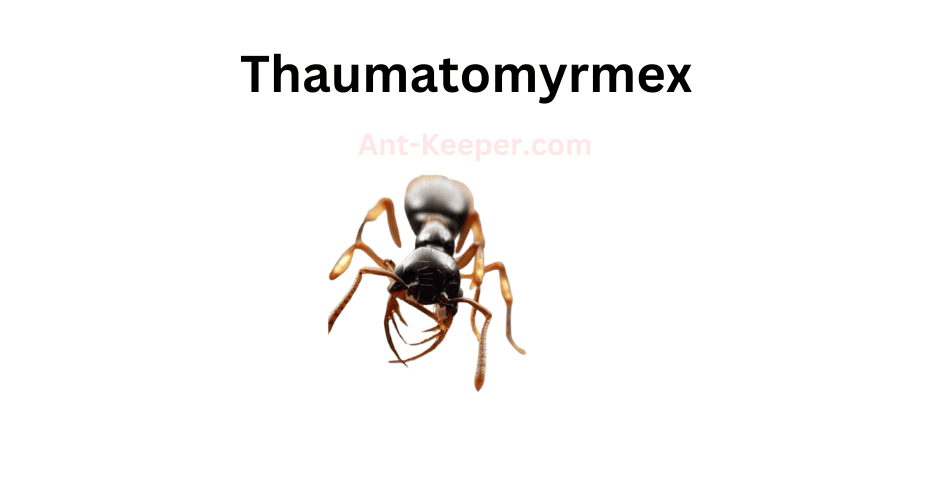
Thaumatomyrmex is a genus of ants that belongs to the subfamily Ponerinae.
The ants in this genus are known for their unique morphology and behavior.
Thaumatomyrmex ants are small in size, measuring between 2-5 mm in length.
They have a distinctive head shape, with a narrow and elongated mandible that is used for capturing prey.
Thaumatomyrmex ants are also known for their aggressive behavior.
They are solitary hunters and do not form large colonies like other ant species.
Instead, they hunt individually or in small groups.
Thaumatomyrmex ants are known to attack and kill other ant species, including those that are much larger than themselves.
The diet of Thaumatomyrmex ants consists mainly of other insects, such as termites and other ants.
They are also known to feed on nectar and honeydew produced by aphids and other plant-sucking insects.
Thaumatomyrmex ants are found in a variety of habitats, including forests, grasslands, and deserts.
They are most commonly found in tropical and subtropical regions.
Overall, Thaumatomyrmex ants are fascinating creatures with unique morphology and behavior.
Their aggressive hunting behavior and solitary lifestyle make them stand out among other ant species.
110) Trachymyrmex
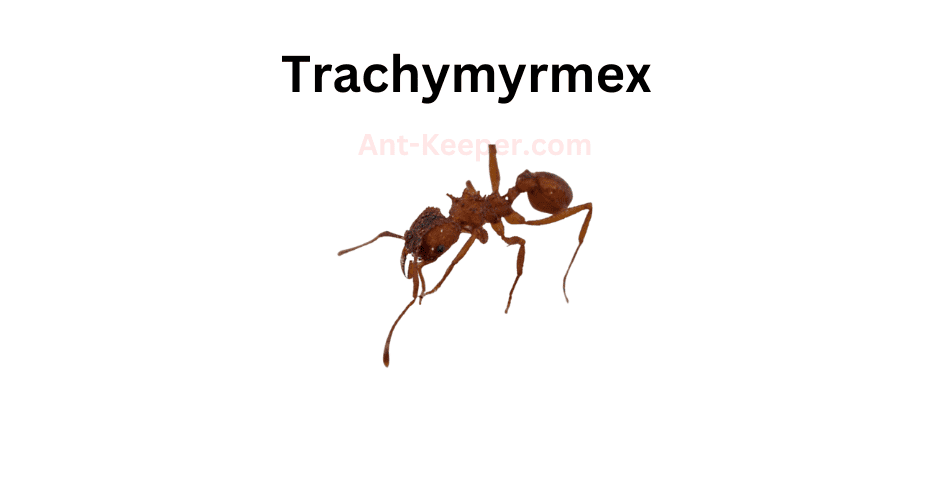
Trachymyrmex is a genus of ants that belongs to the subfamily Myrmicinae.
These ants are known for their fungus-growing behavior, which involves cultivating a specific type of fungus in their nests as a food source.
Trachymyrmex ants are small in size, typically measuring between 2-5mm in length.
They have a distinctive appearance, with a dark brown or black body and long, slender legs.
Trachymyrmex ants are highly social insects, living in large colonies that can contain thousands of individuals.
The colonies are organized into castes, with specialized workers responsible for different tasks such as foraging, nest maintenance, and caring for the young.
The queen ant is the largest member of the colony and is responsible for laying eggs.
One of the most interesting aspects of Trachymyrmex ants is their relationship with the fungus they cultivate.
The ants collect plant material, which they bring back to the nest and use to grow the fungus.
The fungus, in turn, provides the ants with a nutritious food source.
The ants also have a complex system of waste management, which involves removing waste from the nest and depositing it in specific areas where it can be used to fertilize the fungus.
Trachymyrmex ants are found in a variety of habitats, including forests, grasslands, and deserts.
They are important members of their ecosystems, playing a role in nutrient cycling and soil health.
However, like many other ant species, Trachymyrmex ants can also be considered pests, as they can damage crops and invade homes.
Overall, Trachymyrmex ants are fascinating creatures with complex social behaviors and a unique relationship with the fungus they cultivate.
Their importance in their ecosystems and potential as pests make them an important subject of study for scientists and pest control professionals alike.
111) Tranopelta
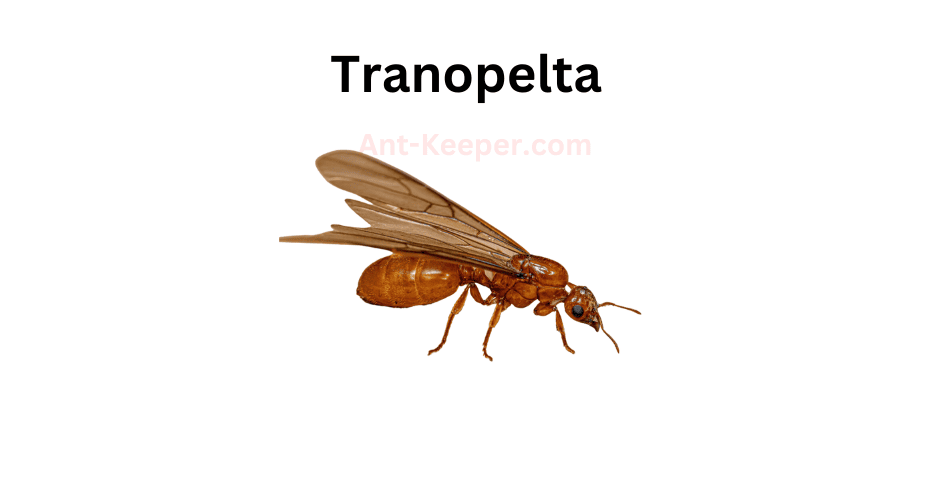
Tranopelta is a genus of ants belonging to the subfamily Ponerinae.
These ants are known for their unique morphology and behavior.
The workers of Tranopelta are small in size, measuring between 2-4 mm in length.
They have a dark brown to black coloration and possess a slender body with long legs.
The head of Tranopelta ants is elongated and narrow, with large mandibles that are used for hunting and defense.
Tranopelta ants are primarily found in tropical and subtropical regions, where they inhabit forested areas and leaf litter.
They are known to be active predators, feeding on a variety of small invertebrates such as insects, spiders, and other ants.
Tranopelta ants are also known to engage in trophallaxis, a behavior where food is shared among colony members through mouth-to-mouth feeding.
The reproductive behavior of Tranopelta ants is unique compared to other ant species.
The males of Tranopelta are wingless and remain within the nest, where they mate with the winged females.
The females then leave the nest to establish new colonies, where they become the queen and lay eggs.
Overall, Tranopelta ants are fascinating creatures with unique morphology and behavior.
Their predatory nature and reproductive behavior make them an important part of the ecosystem in which they inhabit.
112) Typhlomyrmex
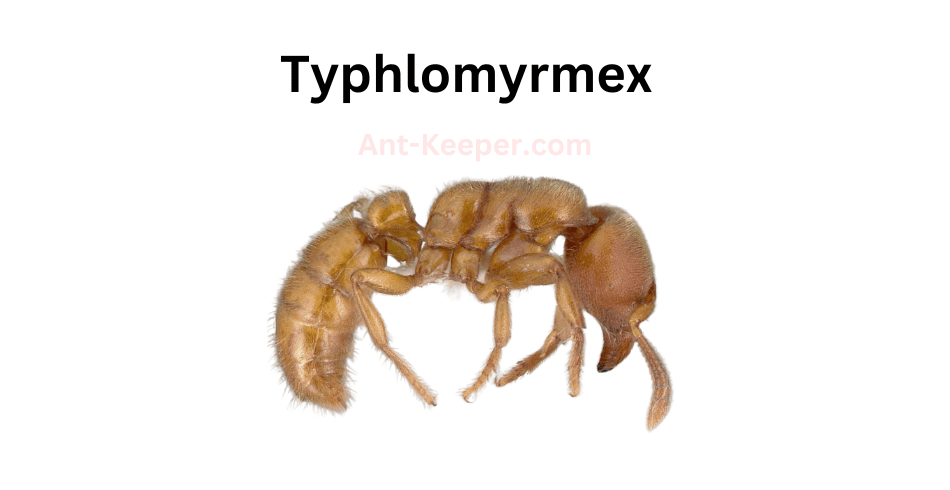
Typhlomyrmex is a genus of ants that belongs to the subfamily Myrmicinae.
These ants are known for their subterranean lifestyle and are commonly referred to as "blind ants" due to their lack of functional eyes.
The genus is characterized by their elongated mandibles and the presence of a unique gland on the underside of their head, which produces a sticky substance used for nest building.
Typhlomyrmex ants are typically found in tropical and subtropical regions, where they inhabit soil and leaf litter.
They are known to form small colonies, with only a few hundred individuals.
These ants are also known for their unique feeding habits, as they primarily feed on the exudates of plant roots and fungi.
The reproductive behavior of Typhlomyrmex ants is also unique, as they are known to have a reproductive caste that is intermediate between workers and queens.
These "intercastes" are capable of laying eggs and can even mate with males, but they do not have the full reproductive capabilities of a queen.
Overall, Typhlomyrmex ants are fascinating creatures that have adapted to life underground in a variety of ways.
Their unique morphology, feeding habits, and reproductive behavior make them a fascinating subject for study in the field of entomology.
113) Wasmannia
The Wasmanniabe ant is a fascinating species that belongs to the Formicidae family.
It is known for its unique physical characteristics and behavior, which make it stand out from other ant species.
One of the most distinctive features of the Wasmanniabe ant is its size.
It is relatively small, measuring only a few millimeters in length.
However, what it lacks in size, it makes up for in strength.
This ant is incredibly strong and can carry objects that are many times its own weight.
Another interesting aspect of the Wasmanniabe ant is its social behavior.
It lives in colonies that can consist of thousands of individuals.
The colony is led by a queen ant, who is responsible for laying eggs and ensuring the survival of the colony.
The other ants in the colony have specific roles, such as foraging for food, caring for the young, and defending the colony from predators.
The Wasmanniabe ant is also known for its intelligence.
It has been observed using tools to gather food and navigate its environment.
Additionally, it has a complex communication system that allows it to coordinate with other ants in the colony.
Overall, the Wasmanniabe ant is a remarkable species that has adapted to its environment in unique ways.
Its physical strength, social behavior, and intelligence make it a fascinating subject for scientific study.
114) Xenomyrmex

Xenomyrmex is a genus of ants that belongs to the subfamily Myrmicinae.
The ants in this genus are small in size, measuring between 2-4 mm in length.
They are known for their distinctive morphology, which includes a unique shape of the head and mandibles.
Xenomyrmex ants are typically found in forested areas, where they nest in soil or leaf litter.
They are known to be predatory, feeding on other insects and small invertebrates.
The ants are also known to have a mutualistic relationship with certain plant species, where they protect the plants from herbivores in exchange for food and shelter.
The taxonomy of Xenomyrmex is still being studied, and there are currently only a few recognized species within the genus.
However, recent research has suggested that there may be many more species yet to be discovered.
Overall, Xenomyrmex ants are an important part of forest ecosystems, playing a role in both predation and mutualism.
Their unique morphology and behavior make them an interesting subject for further study.
115) Leaf-Cutter Ants, Atta Mexicana

Leaf-cutter ants are a fascinating species of ants that belong to the genus Atta and Acromyrmex.
These ants are known for their unique behavior of cutting and carrying pieces of leaves back to their nests.
They are found in various habitats, including rainforests, grasslands, and deserts.
Leaf-cutter ants are social insects that live in large colonies consisting of millions of individuals.
The colonies are divided into different castes, including the queen, workers, and soldiers.
The queen is responsible for laying eggs, while the workers and soldiers are responsible for foraging, nest maintenance, and defense.
The most distinctive feature of leaf-cutter ants is their ability to cut and carry pieces of leaves that are much larger than their body size.
They use their powerful mandibles to cut the leaves into small pieces, which they then carry back to their nests.
The leaves are not used as food but are instead used to cultivate a fungus that serves as the primary food source for the colony.
Leaf-cutter ants are also known for their impressive communication skills.
They use a complex system of chemical signals to communicate with each other and coordinate their activities.
They also use pheromones to mark trails and identify food sources.
Despite their impressive abilities, leaf-cutter ants face many threats in their natural habitats.
Habitat destruction, climate change, and pesticide use are just a few of the challenges that these ants face.
Conservation efforts are underway to protect these fascinating insects and their important role in the ecosystem.
116) Rover Ants, Brachymyrmex Obscurior

Rover ants, also known as Brachymyrmex spp., are a species of small, dark-colored ants that are commonly found in urban and suburban areas.
These ants are known for their ability to quickly move their nests from one location to another, hence their name "rover ants."
Rover ants are typically between 1.5 and 2.5 millimeters in length and have a dark brown or black coloration.
They have a slender body with a distinct waist and long, thin legs.
These ants are known for their aggressive behavior towards other ant species and will often invade and take over their nests.
Rover ants are omnivorous and will feed on a variety of food sources, including insects, sweets, and plant material.
They are also known to be attracted to human food and can become a nuisance in homes and other buildings.
One unique characteristic of rover ants is their ability to form "supercolonies." These supercolonies can consist of multiple nests and can span large areas.
This behavior allows rover ants to quickly adapt to changing environments and find new food sources.
Overall, rover ants are a common and adaptable species that can be found in many different environments.
While they can be a nuisance in homes and other buildings, they play an important role in the ecosystem as scavengers and predators of other insects.
117) Florida Carpenter Ants, Camponotus Atriceps
The Florida Carpenter Ant (Camponotus floridanus) is a species of ant that belongs to the genus Camponotus.
These ants are known for their large size, with workers measuring up to 1.5 cm in length.
They are typically black or dark brown in color, with a smooth and shiny exoskeleton.
Florida Carpenter Ants are known for their ability to excavate wood and create nests inside trees, logs, and wooden structures.
They are considered a pest species in many areas due to their destructive behavior.
However, they also play an important role in the ecosystem by helping to break down dead wood and other organic matter.
These ants are social insects that live in colonies consisting of a queen, workers, and soldiers.
The queen is responsible for laying eggs, while the workers are responsible for foraging, caring for the young, and maintaining the nest.
The soldiers are larger and have stronger mandibles, which they use to defend the colony against predators.
Florida Carpenter Ants are omnivorous, feeding on a variety of foods including insects, nectar, and honeydew.
They are also known to feed on plant sap and fruits.
These ants are active during the day and can be seen foraging in large numbers.
Overall, the Florida Carpenter Ant is an interesting and important species of ant that plays a significant role in the ecosystem.
While they can be a nuisance to humans, they are an essential part of the natural world and should be respected and protected.
118) Carpenter And Sugar Ants, Camponotus Novogranadensis

Carpenter ants and sugar ants are two common species of ants found in many regions of the world.
Carpenter ants are known for their ability to excavate wood and create nests within it.
They are typically larger in size than sugar ants and have a black or dark brown coloration.
Carpenter ants are also known for their strong mandibles, which they use to chew through wood and other materials.
Sugar ants, on the other hand, are smaller in size and have a yellow or brown coloration.
They are named for their preference for sugary foods and are often found in kitchens and other areas where food is stored.
Sugar ants are also known for their ability to form large colonies, with thousands of individual ants working together to gather food and care for their young.
Both carpenter ants and sugar ants play important roles in their ecosystems.
Carpenter ants help to break down dead wood and other plant material, which helps to recycle nutrients back into the soil.
Sugar ants help to disperse seeds and pollinate plants, which helps to maintain healthy ecosystems.
However, both species can also be pests when they invade human homes and buildings.
Carpenter ants can cause damage to wooden structures, while sugar ants can contaminate food and be a nuisance to homeowners.
It is important to take steps to prevent ant infestations and to control them if they do occur, in order to protect both human health and the health of the environment.
119) Compact Carpenter Ants, Camponotus Planatus
The Compact Carpenter Ant, also known as Camponotus planatus, is a species of ant that belongs to the family Formicidae.
These ants are typically small in size, measuring between 4 to 6 millimeters in length.
They have a black or dark brown body with a shiny appearance.
Compact Carpenter Ants are known for their ability to build nests in small spaces, such as cracks in walls or between rocks.
They are also known to build nests in dead wood, which they excavate to create galleries and chambers for their colony.
These ants are omnivorous, meaning they consume both plant and animal matter.
They primarily feed on honeydew, nectar, and insects.
They are also known to scavenge for food, and will consume dead insects and other small animals.
Compact Carpenter Ants are social insects, living in colonies that can range in size from a few dozen to several thousand individuals.
The colony is typically led by a queen, who is responsible for laying eggs and producing new members of the colony.
The workers, which make up the majority of the colony, are responsible for foraging for food, caring for the young, and maintaining the nest.
Overall, the Compact Carpenter Ant is a fascinating species of ant that is well adapted to living in small spaces and scavenging for food.
Their ability to excavate wood and build nests in tight spaces makes them an important part of many ecosystems.
120) Six-Spotted Carpenter Ants, Camponotus Sexguttatus
The Six-Spotted Carpenter Ant (Camponotus sexguttatus) is a species of ant belonging to the genus Camponotus.
These ants are commonly found in wooded areas and are known for their ability to excavate wood to create their nests.
They are typically black in color and have six white spots on their abdomen, which is how they get their name.
The Six-Spotted Carpenter Ant is a relatively large ant, with workers ranging from 6 to 12 mm in length.
They are polymorphic, meaning that they have different sizes of workers within their colony.
The larger workers are responsible for excavating the wood and caring for the young, while the smaller workers are responsible for foraging for food.
These ants are omnivorous, meaning that they eat both plant and animal matter.
They have been known to feed on honeydew, nectar, and other sugary substances, as well as insects and other small animals.
The Six-Spotted Carpenter Ant is a social insect, living in colonies that can contain thousands of individuals.
They communicate with each other using chemical signals called pheromones, which help them to coordinate their activities and find food sources.
While the Six-Spotted Carpenter Ant is not considered a major pest, they can cause damage to wooden structures if their nests are located inside.
They are also known to bite if they feel threatened, although their bites are not typically harmful to humans.
Overall, the Six-Spotted Carpenter Ant is an interesting and important species of ant, playing a vital role in their ecosystem and providing valuable insights into the behavior of social insects.
121) Saint Valentine Ants, Crematogaster Crinosa
The Saint Valentine Ants, also known as the Love Ants, are a species of ants that belong to the Formicidae family.
These ants are known for their unique behavior during the mating season, which occurs in the early spring.
During the mating season, the male Saint Valentine Ants will search for a female to mate with.
Once they find a suitable mate, they will present her with a gift of food or other resources.
This gift-giving behavior is believed to be a way for the male ants to demonstrate their fitness and ability to provide for their future offspring.
After mating, the female Saint Valentine Ants will lay their eggs in a nest.
The eggs will hatch into larvae, which will be cared for by the worker ants.
The worker ants will feed and protect the larvae until they pupate and eventually emerge as adult ants.
The Saint Valentine Ants are known for their social behavior and their ability to work together to build and maintain their nests.
They communicate with each other using chemical signals, which allows them to coordinate their activities and work efficiently.
Overall, the Saint Valentine Ants are a fascinating species of ants that exhibit unique behaviors during the mating season.
Their social behavior and ability to work together make them an important part of their ecosystem.
122) Acrobat Ants, Crematogaster Distans

Acrobat ants, also known as Crematogaster spp., are a genus of ants that are found in various parts of the world.
These ants are known for their unique ability to contort their bodies and move in acrobatic ways, hence their name.
Acrobat ants are relatively small, with workers measuring between 2-5mm in length.
They are typically brown or black in color, with a slender body and long legs.
These ants are known for their aggressive behavior and will readily defend their nests against intruders.
One of the most interesting features of acrobat ants is their ability to use their mandibles to grip onto surfaces and contort their bodies in unusual ways.
This allows them to move along narrow branches, twigs, and other surfaces that would be difficult for other ants to navigate.
They are also able to use this ability to escape from predators, such as birds and other insects.
Acrobat ants are omnivorous, meaning that they will eat both plant and animal matter.
They are known to feed on insects, nectar, and honeydew, as well as fruits and seeds.
These ants are also known to tend to aphids, protecting them from predators in exchange for the sweet honeydew that the aphids produce.
In terms of their social structure, acrobat ants are typically organized into colonies that are led by a queen.
The queen is responsible for laying eggs, while the workers are responsible for foraging, caring for the young, and defending the nest.
Overall, acrobat ants are fascinating creatures that have adapted unique abilities to survive in their environments.
Their acrobatic abilities and aggressive behavior make them a formidable force in the insect world.
123) Acrobat Ants, Crematogaster Torosa

Acrobat ants, also known as Crematogaster spp., are a genus of ants that are found in various parts of the world.
These ants are known for their unique ability to contort their bodies and move in acrobatic ways, hence their name.
Acrobat ants are relatively small, with workers measuring between 2-5mm in length.
They are typically brown or black in color, with a slender body and long legs.
These ants are known for their aggressive behavior and will readily defend their nests against intruders.
One of the most interesting features of acrobat ants is their ability to use their mandibles to grip onto surfaces and contort their bodies in unusual ways.
This allows them to move along narrow branches, twigs, and other surfaces that would be difficult for other ants to navigate.
They are also able to use this ability to escape from predators, such as birds and other insects.
Acrobat ants are omnivorous, meaning that they will eat both plant and animal matter.
They are known to feed on insects, nectar, and honeydew, as well as fruits and seeds.
These ants are also known to tend to aphids, protecting them from predators in exchange for the sweet honeydew that the aphids produce.
In terms of their social structure, acrobat ants are typically organized into colonies that are led by a queen.
The queen is responsible for laying eggs, while the workers are responsible for foraging, caring for the young, and defending the nest.
Overall, acrobat ants are fascinating creatures that have adapted unique abilities to survive in their environments.
Their acrobatic abilities and aggressive behavior make them a formidable force in the insect world.
124) Fungus-Growing Ants, Cyphomyrmex Minutus
Fungus-growing ants, also known as attine ants, are a group of ants that cultivate fungi as their primary food source.
These ants are found in various habitats, including tropical rainforests, savannas, and deserts.
Fungus-growing ants have a complex social structure, with a queen and several castes of workers.
The queen is responsible for laying eggs, while the workers are responsible for foraging, tending to the fungus gardens, and defending the colony.
The fungus gardens are the heart of the colony, and the ants take great care to maintain them.
The ants cultivate a specific species of fungus, which they feed with freshly cut leaves.
The fungus breaks down the leaves and converts them into a nutrient-rich substrate that the ants can consume.
Fungus-growing ants have evolved a mutualistic relationship with the fungus they cultivate.
The ants provide the fungus with a constant supply of food and a suitable environment for growth, while the fungus provides the ants with a nutritious food source.
However, the relationship between the ants and the fungus is not always harmonious.
The fungus is susceptible to infection by parasitic fungi, which can devastate the colony.
To prevent this, the ants have evolved a sophisticated system of hygiene, which includes removing infected fungus and burying it outside the colony.
Fungus-growing ants are an important part of many ecosystems, as they help to break down plant material and recycle nutrients.
They also provide a food source for other animals, such as birds and mammals.
However, some species of fungus-growing ants are considered pests, as they can cause damage to crops and other vegetation.
125) Gnamptogenys Hartmani
Gnamptogenys Hartmanibe is a species of ant that belongs to the subfamily Ectatomminae.
These ants are known for their aggressive behavior and are often found in tropical regions.
Gnamptogenys Hartmanibe ants are small in size, measuring only a few millimeters in length.
They have a dark brown or black coloration and a slender body shape.
These ants are known to be predatory and feed on other insects and small invertebrates.
They are also known to scavenge for food and will consume dead animals and plant material.
Gnamptogenys Hartmanibe ants are highly territorial and will aggressively defend their nests from intruders.
The nests of Gnamptogenys Hartmanibe ants are typically found in soil or leaf litter.
They are often located near sources of food and water.
The nests are small and consist of a single queen and a few dozen workers.
Gnamptogenys Hartmanibe ants are important members of their ecosystems.
They help to control populations of other insects and contribute to nutrient cycling by consuming dead plant and animal material.
However, their aggressive behavior can also make them a nuisance to humans.
Overall, Gnamptogenys Hartmanibe ants are fascinating creatures that play an important role in their ecosystems.
Their aggressive behavior and predatory nature make them a formidable force in the world of insects.
126) Gnamptogenys Triangularis
Gnamptogenys triangularis is a species of ant belonging to the genus Gnamptogenys, which is part of the subfamily Ectatomminae.
These ants are known for their aggressive behavior and are often found in tropical and subtropical regions.
Gnamptogenys triangularis is a small ant, measuring between 2.5 and 3.5 millimeters in length.
They have a dark brown or black coloration and a triangular-shaped head.
Their mandibles are long and curved, which they use to capture and subdue their prey.
These ants are primarily ground-dwelling and are often found in leaf litter or soil.
They are known to be opportunistic predators, feeding on a variety of insects and other small invertebrates.
They are also known to scavenge on dead animals and plant material.
Gnamptogenys triangularis is a social insect, living in colonies that can range in size from a few dozen to several hundred individuals.
The colony is typically led by a single queen, who is responsible for laying eggs and maintaining the colony's reproductive success.
These ants are known for their aggressive behavior, and will defend their colony fiercely against intruders.
They are also known to engage in territorial disputes with neighboring colonies.
Overall, Gnamptogenys triangularis is a fascinating species of ant with unique behaviors and adaptations that allow them to thrive in their environment.
127) Crypt Ants, Hypoponera Opaciceps

Crypt ants, also known as fungus-growing ants, are a group of ants that cultivate fungi for food.
They are found in various habitats, including forests, grasslands, and deserts.
Crypt ants are known for their unique nesting behavior, as they construct underground chambers to house their fungal gardens.
These ants have a symbiotic relationship with the fungi they cultivate.
The ants provide the fungi with a suitable environment for growth, while the fungi provide the ants with a source of food.
The ants also protect their fungal gardens from other insects and parasites.
Crypt ants are social insects, living in colonies that can range from a few dozen to several thousand individuals.
The colonies are organized into castes, with the queen being the largest and most important member.
The queen is responsible for laying eggs, while the workers are responsible for tending to the fungal gardens and caring for the young.
One interesting aspect of crypt ants is their ability to create "satellite" nests.
These nests are smaller chambers located near the main nest, and they serve as storage areas for food and as a place for the queen to lay eggs.
The satellite nests are connected to the main nest by underground tunnels, allowing the ants to move between them.
Overall, crypt ants are fascinating insects that have developed a unique way of obtaining food.
Their symbiotic relationship with fungi and their complex nesting behavior make them an important species to study in the field of entomology.
128) Army Ants, Labidus Coecus
Army ants are a type of ant that belong to the subfamily Dorylinae.
They are known for their aggressive behavior and their ability to form large colonies that can contain up to several million individuals.
Army ants are found in tropical and subtropical regions around the world, and they play an important role in the ecosystems where they live.
One of the most distinctive features of army ants is their nomadic lifestyle.
Unlike other ants that build permanent nests, army ants are constantly on the move, searching for food and new nesting sites.
They are also known for their impressive hunting skills.
When they come across prey, they swarm over it in large numbers, overwhelming it with their sheer numbers and powerful jaws.
Army ants are also social insects, with a complex hierarchy that determines the roles of each individual in the colony.
The queen is the largest ant in the colony and is responsible for laying eggs.
The workers are responsible for foraging, caring for the young, and defending the colony.
The soldiers are larger and have stronger jaws, which they use to protect the colony from predators.
Despite their aggressive behavior, army ants are an important part of many ecosystems.
They help to control the populations of other insects and small animals, and they provide food for larger predators such as birds and mammals.
In some cultures, army ants are even used as a source of food for humans.
Overall, army ants are fascinating creatures that have adapted to life in some of the most challenging environments on Earth.
Their nomadic lifestyle, impressive hunting skills, and complex social structure make them one of the most interesting species of ants in the world.
129) Flower Ants, Monomorium Floricola

The Flower Ant, also known as the Camponotus consobrinus, is a species of ant that belongs to the Camponotus genus.
These ants are commonly found in various habitats, including forests, grasslands, and gardens.
They are known for their unique behavior of collecting nectar and pollen from flowers, hence their name.
The Flower Ants are relatively large, with workers measuring up to 12mm in length.
They have a black or dark brown body with reddish-brown legs and antennae.
The queen ants are even larger, measuring up to 18mm in length.
These ants are known for their strong mandibles, which they use to cut through plant material and defend their colony.
The Flower Ants are social insects that live in colonies consisting of a queen, workers, and males.
The queen is responsible for laying eggs, while the workers take care of the young and forage for food.
The males are responsible for mating with the queen.
One of the unique characteristics of the Flower Ants is their relationship with plants.
They are known to collect nectar and pollen from flowers, which they use as a source of food.
In return, they help pollinate the flowers, which is essential for the plants' reproduction.
The Flower Ants are also known for their aggressive behavior towards other ant species.
They will defend their territory and resources fiercely, often engaging in battles with other ant colonies.
In conclusion, the Flower Ants are a fascinating species of ant that have a unique relationship with plants.
They play an important role in pollination and are essential for the ecosystem.
Their aggressive behavior towards other ant species also highlights their importance in maintaining the balance of the ecosystem.
130) Army Ants, Neivamyrmex Pilosus
Army ants are a type of ant that belong to the subfamily Dorylinae.
They are known for their aggressive behavior and their ability to form large colonies that can contain up to several million individuals.
Army ants are found in tropical and subtropical regions around the world, and they play an important role in the ecosystems where they live.
One of the most distinctive features of army ants is their nomadic lifestyle.
Unlike other ants that build permanent nests, army ants are constantly on the move, searching for food and new nesting sites.
They are also known for their impressive hunting skills.
When they come across prey, they swarm over it in large numbers, overwhelming it with their sheer numbers and powerful jaws.
Army ants are also social insects, with a complex hierarchy that determines the roles of each individual in the colony.
The queen is the largest ant in the colony and is responsible for laying eggs.
The workers are responsible for foraging, caring for the young, and defending the colony.
The soldiers are larger and have stronger jaws, which they use to protect the colony from predators.
Despite their aggressive behavior, army ants are an important part of many ecosystems.
They help to control the populations of other insects and small animals, and they provide food for larger predators such as birds and mammals.
In some cultures, army ants are even used as a source of food for humans.
Overall, army ants are fascinating creatures that have adapted to life in some of the most challenging environments on Earth.
Their nomadic lifestyle, impressive hunting skills, and complex social structure make them one of the most interesting species of ants in the world.
131) Hairy Panther Ants, Neoponera Villosa
The Hairy Panther Ant, also known as Myrmecia pilosula, is a species of ant belonging to the Myrmeciinae subfamily.
These ants are commonly found in forested areas and are known for their aggressive behavior and painful sting.
The Hairy Panther Ants are relatively large, measuring up to 2.5 cm in length.
They have a dark brown or black body with a dense covering of fine hairs, which gives them their distinctive appearance.
The hairs on their body serve as a sensory mechanism, allowing them to detect vibrations and changes in their environment.
These ants are solitary hunters and do not form large colonies like other ant species.
They are known for their powerful mandibles, which they use to capture and subdue their prey.
Their diet consists mainly of other insects, including spiders, beetles, and other ants.
The Hairy Panther Ants are also known for their painful sting, which can cause severe reactions in some individuals.
Their venom contains a potent mix of toxins that can cause swelling, pain, and even anaphylactic shock in some cases.
Despite their aggressive behavior and painful sting, the Hairy Panther Ants play an important role in their ecosystem.
They help to control the population of other insects and contribute to the overall health of the forest ecosystem.
132) Crazy Ants, Nylanderia Steinheili

Crazy ants, also known as Nylanderia fulva, are a species of ant that belong to the family Formicidae.
They are small in size, measuring only about 2.2 to 3 mm in length, and are reddish-brown in color.
These ants are known for their erratic and unpredictable behavior, hence the name "crazy ants."
Crazy ants are native to South America, but have since spread to other parts of the world, including North America, Asia, and Australia.
They are highly adaptable and can thrive in a variety of environments, including urban areas, forests, and grasslands.
One of the most notable characteristics of crazy ants is their ability to form large colonies with multiple queens.
This allows them to quickly establish themselves in new areas and outcompete other ant species.
Crazy ants are also known for their aggressive behavior towards other insects and animals, including humans.
In addition to their aggressive behavior, crazy ants are also known for their ability to cause damage to electrical equipment.
They are attracted to electrical currents and can easily short-circuit electronics, causing damage and potentially starting fires.
Despite their small size, crazy ants are a formidable species that can have a significant impact on their environment.
As they continue to spread to new areas, it is important to monitor their behavior and take steps to control their populations in order to minimize their impact on ecosystems and human infrastructure.
133) Trap-Jaw Ants, Odontomachus Brunneus

Trap-jaw ants are a species of ants that belong to the genus Odontomachus.
These ants are known for their unique and powerful mandibles, which they use to capture prey and defend their colonies.
The mandibles of trap-jaw ants are capable of closing at incredible speeds, reaching up to 140 miles per hour.
This allows them to snap their jaws shut with incredible force, which can stun or kill their prey.
Trap-jaw ants are found in a variety of habitats, including forests, grasslands, and deserts.
They are typically active during the day and are known to be highly territorial.
These ants are also known for their ability to jump, which they use to escape danger or to capture prey.
Trap-jaw ants are omnivorous, meaning that they eat both plant and animal matter.
They are known to feed on a variety of insects, including other ants, as well as nectar and other sweet substances.
These ants are also known to be scavengers, feeding on dead insects and other organic matter.
The colonies of trap-jaw ants are typically small, with only a few hundred individuals.
However, they are highly organized and have a strict social hierarchy.
The queen is the largest member of the colony and is responsible for laying eggs.
The workers, which are all female, are responsible for foraging, caring for the young, and defending the colony.
Overall, trap-jaw ants are fascinating creatures that have evolved unique adaptations to help them survive in their environments.
Their powerful mandibles and jumping abilities make them formidable predators, while their social organization allows them to work together to protect their colonies and ensure their survival.
134) Trap-Jaw Ants, Odontomachus Haematodus

Trap-jaw ants are a species of ants that belong to the genus Odontomachus.
These ants are known for their unique and powerful mandibles, which they use to capture prey and defend their colonies.
The mandibles of trap-jaw ants are capable of closing at incredible speeds, reaching up to 140 miles per hour.
This allows them to snap their jaws shut with incredible force, which can stun or kill their prey.
Trap-jaw ants are found in a variety of habitats, including forests, grasslands, and deserts.
They are typically active during the day and are known to be highly territorial.
These ants are also known for their ability to jump, which they use to escape danger or to capture prey.
Trap-jaw ants are omnivorous, meaning that they eat both plant and animal matter.
They are known to feed on a variety of insects, including other ants, as well as nectar and other sweet substances.
These ants are also known to be scavengers, feeding on dead insects and other organic matter.
The colonies of trap-jaw ants are typically small, with only a few hundred individuals.
However, they are highly organized and have a strict social hierarchy.
The queen is the largest member of the colony and is responsible for laying eggs.
The workers, which are all female, are responsible for foraging, caring for the young, and defending the colony.
Overall, trap-jaw ants are fascinating creatures that have evolved unique adaptations to help them survive in their environments.
Their powerful mandibles and jumping abilities make them formidable predators, while their social organization allows them to work together to protect their colonies and ensure their survival.
135) Trap-Jaw Ants, Odontomachus Ruginodis

Trap-jaw ants are a species of ants that belong to the genus Odontomachus.
These ants are known for their unique and powerful mandibles, which they use to capture prey and defend their colonies.
The mandibles of trap-jaw ants are capable of closing at incredible speeds, reaching up to 140 miles per hour.
This allows them to snap their jaws shut with incredible force, which can stun or kill their prey.
Trap-jaw ants are found in a variety of habitats, including forests, grasslands, and deserts.
They are typically active during the day and are known to be highly territorial.
These ants are also known for their ability to jump, which they use to escape danger or to capture prey.
Trap-jaw ants are omnivorous, meaning that they eat both plant and animal matter.
They are known to feed on a variety of insects, including other ants, as well as nectar and other sweet substances.
These ants are also known to be scavengers, feeding on dead insects and other organic matter.
The colonies of trap-jaw ants are typically small, with only a few hundred individuals.
However, they are highly organized and have a strict social hierarchy.
The queen is the largest member of the colony and is responsible for laying eggs.
The workers, which are all female, are responsible for foraging, caring for the young, and defending the colony.
Overall, trap-jaw ants are fascinating creatures that have evolved unique adaptations to help them survive in their environments.
Their powerful mandibles and jumping abilities make them formidable predators, while their social organization allows them to work together to protect their colonies and ensure their survival.
136) Rapacious Panther Ants, Pachycondyla Harpax
The Rapacious Panther Ants, also known as Odontomachus sp., are a species of predatory ants that belong to the family Formicidae.
These ants are known for their aggressive hunting behavior and their ability to capture prey that is much larger than themselves.
The Rapacious Panther Ants are typically found in tropical and subtropical regions, where they inhabit forest floors and leaf litter.
They are known for their distinctive appearance, which includes long, slender mandibles that resemble the fangs of a panther.
These ants are highly skilled hunters and use their mandibles to capture prey.
They are known to hunt a wide variety of insects, including termites, spiders, and other ants.
They are also known to scavenge for food, and will consume dead insects and other organic matter.
The Rapacious Panther Ants are social insects and live in colonies that can contain thousands of individuals.
The colonies are typically led by a queen, who is responsible for laying eggs and maintaining the colony.
Despite their aggressive hunting behavior, the Rapacious Panther Ants are not considered a threat to humans.
However, their powerful mandibles can deliver a painful bite if they are provoked or threatened.
Overall, the Rapacious Panther Ants are a fascinating species of ants that are known for their predatory behavior and distinctive appearance.
Their ability to capture prey that is much larger than themselves is a testament to their strength and adaptability in the natural world.
137) Longhorn Crazy Ants, Paratrechina Longicornis

The Longhorn Crazy Ant (Paratrechina longicornis) is a small, dark brown ant species that is known for its erratic and unpredictable behavior.
These ants are typically found in warm, humid environments and are often found in urban areas, where they can be a nuisance to homeowners and businesses.
One of the most distinctive features of the Longhorn Crazy Ant is its long, slender antennae, which can be up to twice the length of its body.
These antennae are used to detect chemical signals from other ants and to navigate through their environment.
Longhorn Crazy Ants are omnivorous and will feed on a wide variety of foods, including insects, fruits, and sweet liquids.
They are also known to be scavengers, and will often invade other ant colonies to steal food and resources.
One of the most interesting aspects of the Longhorn Crazy Ant is its behavior.
These ants are known for their erratic movements and unpredictable behavior, which can make them difficult to control.
They are also known for their ability to form large, sprawling colonies that can quickly take over an area.
Despite their small size, Longhorn Crazy Ants can be a significant pest problem, particularly in urban areas.
They can invade homes and businesses, contaminate food, and cause damage to electrical equipment.
As a result, it is important to take steps to control these ants and prevent infestations from occurring.
138) Big Headed Ants, Pheidole Bilimeki

Big Headed Ants, also known as Pheidole megacephala, are a species of ant that belong to the family Formicidae.
These ants are known for their distinctive large heads, which are used for defense and communication within their colonies.
Big Headed Ants are typically found in tropical and subtropical regions, where they build their nests in soil, leaf litter, and other organic matter.
They are omnivorous, feeding on a variety of insects, seeds, and other small organisms.
One of the most interesting aspects of Big Headed Ants is their social behavior.
They live in large colonies, with a queen ant at the center of the hierarchy.
The queen is responsible for laying eggs, while the other ants in the colony perform various tasks such as foraging for food, caring for the young, and defending the colony from predators.
Big Headed Ants are also known for their ability to displace other ant species in their habitats.
They are aggressive and have been known to attack and kill other ants, as well as compete with them for resources.
Despite their aggressive behavior, Big Headed Ants are not considered a major pest species.
However, their ability to displace other ant species and their potential impact on native ecosystems make them an important species to study and monitor.
139) Big Headed Ants, Pheidole Flavens

Big Headed Ants, also known as Pheidole megacephala, are a species of ant that belong to the family Formicidae.
These ants are known for their distinctive large heads, which are used for defense and communication within their colonies.
Big Headed Ants are typically found in tropical and subtropical regions, where they build their nests in soil, leaf litter, and other organic matter.
They are omnivorous, feeding on a variety of insects, seeds, and other small organisms.
One of the most interesting aspects of Big Headed Ants is their social behavior.
They live in large colonies, with a queen ant at the center of the hierarchy.
The queen is responsible for laying eggs, while the other ants in the colony perform various tasks such as foraging for food, caring for the young, and defending the colony from predators.
Big Headed Ants are also known for their ability to displace other ant species in their habitats.
They are aggressive and have been known to attack and kill other ants, as well as compete with them for resources.
Despite their aggressive behavior, Big Headed Ants are not considered a major pest species.
However, their ability to displace other ant species and their potential impact on native ecosystems make them an important species to study and monitor.
140) Small Honey Ants, Prenolepis Imparis
Small Honey Ants, also known as Prenolepis imparis, are a species of ant that belong to the family Formicidae.
They are typically small in size, measuring between 2.5 to 3.5 mm in length.
These ants are commonly found in forests, grasslands, and other natural habitats.
Small Honey Ants are known for their sweet tooth, as they primarily feed on honeydew produced by aphids and other insects.
They also consume nectar and other sugary substances.
In addition to their sweet diet, these ants also feed on small insects and other arthropods.
Small Honey Ants are social insects, living in colonies that can range in size from a few dozen to several thousand individuals.
The colony is typically led by a queen ant, who is responsible for laying eggs and maintaining the overall health of the colony.
The workers, which make up the majority of the colony, are responsible for foraging for food, caring for the young, and defending the colony from predators.
One unique characteristic of Small Honey Ants is their ability to store food in their bodies.
The workers have a specialized crop, called a "social stomach," which allows them to store and transport food back to the colony.
This food storage system is particularly important during times of scarcity, as it allows the colony to survive on stored food until more resources become available.
Overall, Small Honey Ants are an important part of many ecosystems, playing a key role in pollination and nutrient cycling.
While they may be a nuisance to humans when they invade homes or gardens, they are generally harmless and can be easily controlled with non-toxic methods.
141) Dracula Ants, Prionopelta Antillana
The Dracula Ant, also known as Mystrium camillae, is a species of ant that belongs to the subfamily Amblyoponinae.
These ants are known for their unique feeding behavior, which involves drinking the blood of their own larvae.
Dracula Ants are small in size, measuring only a few millimeters in length.
They have elongated mandibles that are used to puncture the skin of their larvae and suck out their hemolymph, a fluid similar to blood.
This behavior is known as "nondestructive cannibalism" and is thought to provide the ants with essential nutrients that are not available in their diet.
These ants are found in tropical and subtropical regions and are typically found in forested areas.
They are known for their aggressive behavior and are capable of inflicting painful bites on humans.
Dracula Ants are social insects and live in colonies that are typically composed of a queen, workers, and larvae.
The queen is responsible for laying eggs, while the workers are responsible for caring for the larvae and foraging for food.
Overall, the Dracula Ant is a fascinating species of ant that exhibits unique feeding behavior and is an important part of many ecosystems.
142) Twig Ants, Pseudomyrmex Cubaensis

Twig ants, also known as twig-dwelling ants, are a species of ants that are commonly found living on twigs and branches of trees.
They belong to the family Formicidae and are known for their unique nesting behavior.
Twig ants are small in size, measuring only a few millimeters in length.
They have a slender body and long legs that help them move around easily on the twigs.
Their color varies from light brown to dark brown, and they have a shiny exoskeleton.
These ants are social insects and live in colonies that can range from a few dozen to several hundred individuals.
They have a queen ant that lays eggs and is responsible for the growth and survival of the colony.
The workers, which are sterile females, are responsible for foraging for food, caring for the young, and defending the colony.
Twig ants are omnivores and feed on a variety of food sources, including insects, nectar, and honeydew.
They are also known to tend to aphids and other insects that produce honeydew, which they use as a food source.
One of the most interesting aspects of twig ants is their nesting behavior.
They build their nests on twigs and branches of trees, using materials such as plant fibers, soil, and debris.
The nests are often camouflaged to blend in with the surrounding environment, making them difficult to spot.
Twig ants are an important part of the ecosystem, as they help to control the population of other insects and contribute to the nutrient cycling process.
They are also used in scientific research to study social behavior and communication in insects.
143) Slender Twig Ants, Pseudomyrmex Elongatus
Slender Twig Ants, also known as Pseudomyrmex gracilis, are a species of arboreal ants that are commonly found in tropical and subtropical regions.
These ants are known for their slender and elongated bodies, which allow them to easily navigate through the narrow spaces between twigs and branches.
Slender Twig Ants are typically reddish-brown in color and have long, thin legs that are adapted for climbing and grasping onto surfaces.
They are also equipped with sharp mandibles that they use to defend their colonies and capture prey.
These ants are highly social and live in large colonies that can consist of hundreds or even thousands of individuals.
The colonies are typically located in hollow twigs or branches, and are often guarded by soldier ants that protect the colony from predators.
Slender Twig Ants are omnivorous and feed on a variety of food sources, including nectar, insects, and small vertebrates.
They are also known to have a mutualistic relationship with certain plant species, in which they protect the plants from herbivores in exchange for food and shelter.
Overall, Slender Twig Ants are an important component of tropical and subtropical ecosystems, playing a crucial role in pollination, seed dispersal, and nutrient cycling.
144) Slender Twig Ants, Pseudomyrmex Gracilis
Slender Twig Ants, also known as Pseudomyrmex gracilis, are a species of arboreal ants that are commonly found in tropical and subtropical regions.
These ants are known for their slender and elongated bodies, which allow them to easily navigate through the narrow spaces between twigs and branches.
Slender Twig Ants are typically reddish-brown in color and have long, thin legs that are adapted for climbing and grasping onto surfaces.
They are also equipped with sharp mandibles that they use to defend their colonies and capture prey.
These ants are highly social and live in large colonies that can consist of hundreds or even thousands of individuals.
The colonies are typically located in hollow twigs or branches, and are often guarded by soldier ants that protect the colony from predators.
Slender Twig Ants are omnivorous and feed on a variety of food sources, including nectar, insects, and small vertebrates.
They are also known to have a mutualistic relationship with certain plant species, in which they protect the plants from herbivores in exchange for food and shelter.
Overall, Slender Twig Ants are an important component of tropical and subtropical ecosystems, playing a crucial role in pollination, seed dispersal, and nutrient cycling.
145) Shining Orange Slender Twig Ants, Pseudomyrmex Simplex
The Shining Orange Slender Twig Ants are a species of ants that belong to the family Formicidae.
They are known for their slender and elongated body shape, which allows them to easily navigate through narrow spaces and climb trees.
These ants are typically orange in color, with a shiny appearance that gives them their name.
Shining Orange Slender Twig Ants are social insects that live in colonies.
The colonies are usually small, with only a few hundred individuals.
The ants are highly organized and have a strict hierarchy, with a queen ant at the top.
The queen is responsible for laying eggs, while the worker ants take care of the colony's needs, such as foraging for food and caring for the young.
These ants are primarily arboreal, meaning they live in trees and other vegetation.
They are often found in tropical and subtropical regions, where they can thrive in the warm and humid climate.
The ants are omnivorous, feeding on a variety of food sources, including insects, nectar, and sap.
One interesting behavior of the Shining Orange Slender Twig Ants is their ability to form mutualistic relationships with other insects.
They are known to protect and care for aphids, which in turn provide the ants with a source of honeydew.
The ants also protect the aphids from predators and parasites.
Overall, the Shining Orange Slender Twig Ants are a fascinating species of ants that have adapted to life in the trees.
Their unique appearance and behaviors make them an interesting subject for scientific study.
146) Pan-Tropical Panther Ants, Pseudoponera Stigma
The Pan-Tropical Panther Ants, also known as Paraponera clavata, are a species of large, solitary ants found throughout tropical regions around the world.
These ants are known for their painful sting, which has been described as one of the most intense insect stings experienced by humans.
Pan-Tropical Panther Ants are typically found in forested areas, where they build their nests in trees or on the ground.
They are known for their large size, with workers measuring up to 2.5 cm in length.
These ants are also distinctive for their dark brown or black coloration and their long, curved mandibles.
Pan-Tropical Panther Ants are omnivorous, feeding on a variety of insects, fruits, and nectar.
They are also known to hunt larger prey, such as spiders and caterpillars.
These ants are solitary hunters, with each individual foraging and hunting on its own.
One of the most notable features of Pan-Tropical Panther Ants is their painful sting.
The venom of these ants contains a potent toxin called poneratoxin, which causes intense pain, swelling, and redness at the site of the sting.
In some cases, the sting can also cause nausea, vomiting, and fever.
Despite their painful sting, Pan-Tropical Panther Ants are not considered a significant threat to humans.
These ants are generally non-aggressive and will only sting if provoked or threatened.
However, their painful sting has earned them a reputation as one of the most fearsome insects in the tropical regions where they are found.
147) Rogeria Foreli
Rogeria Forelibe is a species of ant that belongs to the Formicidae family.
It is a relatively small ant, with workers measuring between 2.5 and 3.5 millimeters in length.
The ant has a dark brown or blackish coloration, with a shiny exoskeleton that is covered in fine hairs.
Rogeria Forelibe ants are known for their aggressive behavior, particularly towards other ant species.
They are also known to be highly territorial, and will defend their nests vigorously against intruders.
The ants are omnivorous, feeding on a variety of food sources including insects, nectar, and plant sap.
The reproductive system of Rogeria Forelibe ants is unique, with the queen ant producing both male and female offspring.
The queen ant is also capable of reproducing asexually, producing clones of herself without the need for fertilization.
Rogeria Forelibe ants are found in a variety of habitats, including forests, grasslands, and deserts.
They are known to form large colonies, with thousands of individuals living together in a single nest.
The ants are also known to engage in symbiotic relationships with other organisms, such as aphids, which they protect in exchange for a source of honeydew.
Overall, Rogeria Forelibe ants are fascinating creatures that play an important role in their ecosystems.
Their aggressive behavior and territorial nature make them a formidable force in the ant world, while their unique reproductive system and symbiotic relationships make them a subject of interest for scientists and researchers.
148) Fire Ants, Solenopsis Corticalis

Fire ants are a type of ant that belongs to the Solenopsis genus.
They are known for their reddish-brown color and their aggressive behavior.
Fire ants are social insects that live in colonies, which can range in size from a few hundred to several thousand individuals.
Fire ants are omnivorous and feed on a variety of foods, including insects, seeds, and other small animals.
They are also known to scavenge for food and will often invade other ant colonies to steal their resources.
One of the most distinctive features of fire ants is their ability to sting.
They have a stinger located at the end of their abdomen, which they use to inject venom into their prey or enemies.
Fire ant stings can be painful and can cause an allergic reaction in some people.
Fire ants are also known for their ability to build large mounds, which can reach heights of up to 18 inches.
These mounds are made of soil and are used as a nesting site for the colony.
Fire ants are considered to be an invasive species in many parts of the world, as they can cause damage to crops and wildlife.
They are also a nuisance to humans, as their stings can be painful and their mounds can be unsightly.
Overall, fire ants are fascinating insects that have adapted to thrive in a variety of environments.
While they can be a nuisance, they are an important part of the ecosystem and play a vital role in controlling insect populations.
149) Tropical Fire Ants, Solenopsis Geminata
The Tropical Fire Ant (Solenopsis geminata) is a species of ant that belongs to the family Formicidae.
These ants are known for their aggressive behavior and painful sting, which can cause severe allergic reactions in some individuals.
Tropical Fire Ants are typically reddish-brown in color and range in size from 2 to 6 millimeters in length.
They are commonly found in tropical and subtropical regions, where they build large nests in soil or under rocks.
These ants are omnivorous and feed on a variety of food sources, including insects, seeds, and nectar.
They are also known to tend to aphids and other insects for their honeydew excretions.
Tropical Fire Ants are highly territorial and will aggressively defend their nests against intruders.
They use their powerful mandibles to bite and their stingers to inject venom into their prey or attackers.
The venom of Tropical Fire Ants contains a mixture of alkaloids and proteins that can cause pain, swelling, and itching in humans.
In some cases, the venom can also cause anaphylaxis, a severe allergic reaction that can be life-threatening.
Despite their aggressive behavior and painful sting, Tropical Fire Ants play an important role in their ecosystem.
They help control the populations of other insects and contribute to soil health through their nest-building activities.
150) Vampire Ants, Stigmatomma Orizabanum

Vampire ants, also known as blood-sucking ants, are a species of ants that feed on the blood of other insects.
These ants are known for their unique feeding behavior, which involves biting into the exoskeleton of their prey and then sucking out their blood.
Vampire ants are typically found in tropical and subtropical regions, where they live in colonies of up to several thousand individuals.
They are known for their aggressive behavior and will attack other insects, including larger prey such as grasshoppers and caterpillars.
One of the most interesting aspects of vampire ants is their ability to adapt to their environment.
In some cases, these ants have been known to feed on the blood of their own colony members when other sources of food are scarce.
Vampire ants are also known for their unique physical characteristics.
They have long, curved mandibles that are used to bite into the exoskeleton of their prey.
They also have specialized mouthparts that allow them to suck out the blood of their victims.
Despite their aggressive behavior and blood-sucking tendencies, vampire ants play an important role in their ecosystem.
They help to control the populations of other insects and contribute to the overall balance of their environment.
Overall, vampire ants are a fascinating species of ants that have adapted to their environment in unique and interesting ways.
Their behavior and physical characteristics make them a subject of interest for scientists and nature enthusiasts alike.
151) Miniature Trap-Jaw Ants, Strumigenys Epinotalis

The Miniature Trap-Jaw Ants, scientifically known as Odontomachus sp., are a species of ants that belong to the family Formicidae.
These ants are known for their unique and powerful mandibles, which they use to capture prey and defend their colonies.
The Miniature Trap-Jaw Ants are relatively small in size, measuring only a few millimeters in length.
They have a dark brown or black coloration and a slender body shape.
Their most distinctive feature is their mandibles, which are elongated and can snap shut with incredible force.
These mandibles are used to capture prey, crush seeds, and defend the colony against predators.
The Miniature Trap-Jaw Ants are found in a variety of habitats, including forests, grasslands, and deserts.
They are known to be active during the day and are often seen foraging for food.
These ants are omnivorous and feed on a variety of food sources, including insects, nectar, and seeds.
The Miniature Trap-Jaw Ants are social insects and live in colonies that can range in size from a few dozen to several thousand individuals.
The colony is typically led by a queen, who is responsible for laying eggs and maintaining the colony's population.
The workers are responsible for foraging, caring for the young, and defending the colony.
Overall, the Miniature Trap-Jaw Ants are fascinating insects that have evolved unique adaptations to survive in their environment.
Their powerful mandibles and social behavior make them an important part of many ecosystems.
152) Miniature Trap-Jaw Ants, Strumigenys Gundlachi

The Miniature Trap-Jaw Ants, scientifically known as Odontomachus sp., are a species of ants that belong to the family Formicidae.
These ants are known for their unique and powerful mandibles, which they use to capture prey and defend their colonies.
The Miniature Trap-Jaw Ants are relatively small in size, measuring only a few millimeters in length.
They have a dark brown or black coloration and a slender body shape.
Their most distinctive feature is their mandibles, which are elongated and can snap shut with incredible force.
These mandibles are used to capture prey, crush seeds, and defend the colony against predators.
The Miniature Trap-Jaw Ants are found in a variety of habitats, including forests, grasslands, and deserts.
They are known to be active during the day and are often seen foraging for food.
These ants are omnivorous and feed on a variety of food sources, including insects, nectar, and seeds.
The Miniature Trap-Jaw Ants are social insects and live in colonies that can range in size from a few dozen to several thousand individuals.
The colony is typically led by a queen, who is responsible for laying eggs and maintaining the colony's population.
The workers are responsible for foraging, caring for the young, and defending the colony.
Overall, the Miniature Trap-Jaw Ants are fascinating insects that have evolved unique adaptations to survive in their environment.
Their powerful mandibles and social behavior make them an important part of many ecosystems.
153) Miniature Trap-Jaw Ants, Strumigenys Lanuginosa

The Miniature Trap-Jaw Ants, scientifically known as Odontomachus sp., are a species of ants that belong to the family Formicidae.
These ants are known for their unique and powerful mandibles, which they use to capture prey and defend their colonies.
The Miniature Trap-Jaw Ants are relatively small in size, measuring only a few millimeters in length.
They have a dark brown or black coloration and a slender body shape.
Their most distinctive feature is their mandibles, which are elongated and can snap shut with incredible force.
These mandibles are used to capture prey, crush seeds, and defend the colony against predators.
The Miniature Trap-Jaw Ants are found in a variety of habitats, including forests, grasslands, and deserts.
They are known to be active during the day and are often seen foraging for food.
These ants are omnivorous and feed on a variety of food sources, including insects, nectar, and seeds.
The Miniature Trap-Jaw Ants are social insects and live in colonies that can range in size from a few dozen to several thousand individuals.
The colony is typically led by a queen, who is responsible for laying eggs and maintaining the colony's population.
The workers are responsible for foraging, caring for the young, and defending the colony.
Overall, the Miniature Trap-Jaw Ants are fascinating insects that have evolved unique adaptations to survive in their environment.
Their powerful mandibles and social behavior make them an important part of many ecosystems.
154) Miniature Trap-Jaw Ants, Strumigenys Louisianae

The Miniature Trap-Jaw Ants, scientifically known as Odontomachus sp., are a species of ants that belong to the family Formicidae.
These ants are known for their unique and powerful mandibles, which they use to capture prey and defend their colonies.
The Miniature Trap-Jaw Ants are relatively small in size, measuring only a few millimeters in length.
They have a dark brown or black coloration and a slender body shape.
Their most distinctive feature is their mandibles, which are elongated and can snap shut with incredible force.
These mandibles are used to capture prey, crush seeds, and defend the colony against predators.
The Miniature Trap-Jaw Ants are found in a variety of habitats, including forests, grasslands, and deserts.
They are known to be active during the day and are often seen foraging for food.
These ants are omnivorous and feed on a variety of food sources, including insects, nectar, and seeds.
The Miniature Trap-Jaw Ants are social insects and live in colonies that can range in size from a few dozen to several thousand individuals.
The colony is typically led by a queen, who is responsible for laying eggs and maintaining the colony's population.
The workers are responsible for foraging, caring for the young, and defending the colony.
Overall, the Miniature Trap-Jaw Ants are fascinating insects that have evolved unique adaptations to survive in their environment.
Their powerful mandibles and social behavior make them an important part of many ecosystems.
155) Miniature Trap-Jaw Ants, Strumigenys Margaritae

The Miniature Trap-Jaw Ants, scientifically known as Odontomachus sp., are a species of ants that belong to the family Formicidae.
These ants are known for their unique and powerful mandibles, which they use to capture prey and defend their colonies.
The Miniature Trap-Jaw Ants are relatively small in size, measuring only a few millimeters in length.
They have a dark brown or black coloration and a slender body shape.
Their most distinctive feature is their mandibles, which are elongated and can snap shut with incredible force.
These mandibles are used to capture prey, crush seeds, and defend the colony against predators.
The Miniature Trap-Jaw Ants are found in a variety of habitats, including forests, grasslands, and deserts.
They are known to be active during the day and are often seen foraging for food.
These ants are omnivorous and feed on a variety of food sources, including insects, nectar, and seeds.
The Miniature Trap-Jaw Ants are social insects and live in colonies that can range in size from a few dozen to several thousand individuals.
The colony is typically led by a queen, who is responsible for laying eggs and maintaining the colony's population.
The workers are responsible for foraging, caring for the young, and defending the colony.
Overall, the Miniature Trap-Jaw Ants are fascinating insects that have evolved unique adaptations to survive in their environment.
Their powerful mandibles and social behavior make them an important part of many ecosystems.
156) Rogers Dacetine Ants, Strumigenys Rogeri
Roger's Dacetine Ants are a species of ant that belong to the Dacetini tribe.
They are known for their small size, measuring only a few millimeters in length.
These ants are typically found in forested areas and are known to be arboreal, meaning they live in trees.
One of the unique characteristics of Roger's Dacetine Ants is their ability to form colonies with multiple queens.
This is a rare trait among ants, as most species have only one queen per colony.
The queens of this species are also known to be relatively small in size compared to other ant species.
Roger's Dacetine Ants are omnivorous, meaning they consume both plant and animal matter.
They are known to feed on small insects, nectar, and honeydew produced by aphids.
These ants are also known to have a mutualistic relationship with certain species of plants, where they protect the plant from herbivores in exchange for food.
Despite their small size, Roger's Dacetine Ants play an important role in their ecosystem.
They help to control populations of small insects and contribute to the pollination of certain plant species.
However, like many other ant species, they are also susceptible to habitat loss and other threats to their survival.
157) Ghost Ants, Tapinoma Melanocephalum
Ghost ants, also known as tapinoma melanocephalum, are a species of small, pale-colored ants that are commonly found in tropical and subtropical regions around the world.
These ants are known for their elusive behavior and their ability to quickly disappear when disturbed, earning them their ghostly name.
Ghost ants are typically only about 1.5 to 2 millimeters in length, making them one of the smallest ant species.
They have a pale yellow or white body with a dark head and thorax, which gives them a distinctive appearance.
Ghost ants are also known for their ability to quickly move and navigate through narrow spaces, making them difficult to control in indoor environments.
Ghost ants are omnivorous and will feed on a variety of food sources, including sweets, meats, and fats.
They are also known to feed on other insects and their larvae.
Ghost ants are social insects and live in large colonies, with a single queen ant responsible for laying eggs and producing new workers.
One of the biggest challenges with controlling ghost ants is their ability to quickly adapt to changes in their environment.
They are known to quickly relocate their nests when disturbed, making it difficult to locate and eliminate the colony.
Additionally, ghost ants are resistant to many common insecticides, making it important to use targeted control methods.
Overall, ghost ants are a fascinating and elusive species of ant that can be difficult to control in indoor environments.
Understanding their behavior and biology is key to effectively managing infestations and preventing future problems.
158) Pavement Ants, Tetramorium Caldarium

Pavement ants, also known as Tetramorium caespitum, are a species of ant that belong to the family Formicidae.
These ants are commonly found in urban and suburban areas, where they build their nests in cracks and crevices in pavement, sidewalks, and buildings.
Pavement ants are small in size, measuring between 2.5 to 4 mm in length.
They are typically dark brown or black in color, with lighter colored legs and antennae.
These ants are known for their aggressive behavior and will defend their nests fiercely against intruders.
Pavement ants are omnivorous, feeding on a variety of foods including insects, seeds, and sweet substances such as honeydew and nectar.
They are also known to scavenge for food in garbage cans and other waste areas.
Pavement ants are social insects, living in colonies that can range in size from a few hundred to several thousand individuals.
The colony is typically led by a queen ant, who is responsible for laying eggs and maintaining the colony.
Pavement ants are considered a nuisance pest, as they can invade homes and buildings in search of food and shelter.
They are also known to cause damage to pavement and other structures by excavating soil and creating tunnels.
Overall, pavement ants are a common and adaptable species of ant that play an important role in urban ecosystems.
While they may be a nuisance to humans, they are an important food source for many other animals and help to maintain the balance of the ecosystem.
159) Little Fire Ants, Wasmannia Auropunctata
The Little Fire Ant (Wasmannia auropunctata) is a small, reddish-brown ant species that measures only 1.5 to 3 mm in length.
They are known for their painful sting, which can cause a burning sensation and small blisters on the skin.
Little Fire Ants are native to South and Central America, but have been introduced to other parts of the world through human activity.
They are considered invasive species and have caused significant ecological and economic damage in some areas.
These ants are highly adaptable and can thrive in a variety of habitats, including forests, grasslands, and urban areas.
They are omnivorous and feed on a wide range of food sources, including insects, fruits, and seeds.
Little Fire Ants are social insects that live in colonies with a queen and workers.
They reproduce quickly and can form large colonies with thousands of individuals.
They are known for their aggressive behavior towards other ant species and can outcompete them for resources.
Controlling Little Fire Ant populations can be challenging due to their small size and ability to nest in hard-to-reach areas.
Integrated pest management strategies, such as baiting and chemical treatments, are often used to manage infestations.
Overall, the Little Fire Ant is a fascinating but problematic species that highlights the importance of preventing the introduction of invasive species to new environments.
Check Out Some Of Our Other Ants By Location Posts
| Types Of Ants In Mexico | Mexico is a country located in the southern part of North America, bordered by the United States to the north and Belize and Guatemala to ... |
| Types Of Ants In Kaliningrad Oblast, Russia | Kaliningrad Oblast, located in the westernmost part of Russia, is a region that boasts a unique environment and diverse wildlife. Bordered by Poland and Lithuania, ... |
| Types Of Ants In Northern Territory, Australia | The Northern Territory of Australia is a vast and diverse region located in the northern part of the country. It is bordered by Western Australia ... |
| Types Of Ants In Sudan | Sudan, located in northeastern Africa, is a country known for its diverse and unique environment. The country is home to a variety of landscapes, including ... |
| Types Of Ants In Reunion | In a remote region of the Amazon rainforest, a reunion is taking place. The lush environment is teeming with life, from the towering trees to ... |
